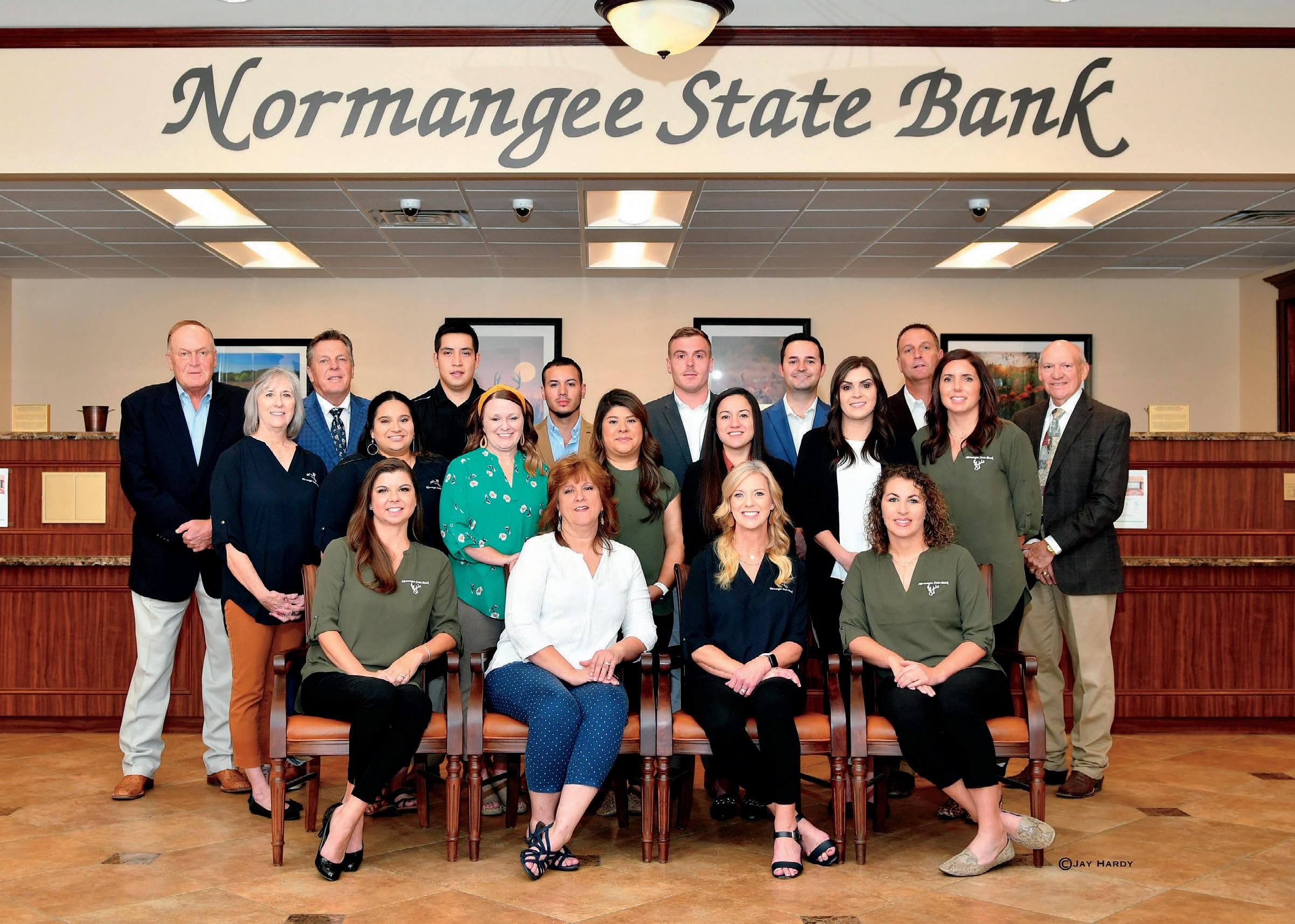Piney Woods POSTCARDS























































































You put out a very good magazine. I look forward to it every month and read it cover to cover. Whenever we are looking for something to do, we just go to the calendar in your magazine to see what’s going on. Please keep them coming!

 Marla Boyett
Marla Boyett

Postcards is truly the best publication ever in our area! I always look forward to receiving the next new copy in my mailbox. My husband knows when he gets the mail, if there’s a new Postcards in the mail, do NOT bother me until I’ve read it from cover to cover!! Karen, you truly add a new dimension to “multi-tasking”! I love all the photos .... and the recipes fit exactly for our East
Texas palates!! Thank you & the sponsors for making this available to all our wonderful neighbors!! Your team is doing an awesome job!!
 Jamie Brinegar
Jamie Brinegar









I have been very excited about writing this column, anticipating the opportunity to share some wonderful news with you. My husband Wes has served as the editor of Postcards since inception, and he has done a remarkable job balancing the role in a part-time capacity, while also holding down a full-time job that required a lot of time on the road.
Since he is an introvert (yes, opposites attract), it suits him fine for me to be the “face” of our work together. While I work primarily with our sales team and advertisers, he is the one that keeps up with all the editorial content each month, including writers and photographers, and we couldn’t do it without him.
I am thrilled to announce that 2023 marks the beginning of his full-time work with our magazine and readers. There are quite a few things we are preparing for in 2023, and we look forward to sharing more with you soon! One thing I was not prepared for…was the fact I would be writing this message only days after my husband suffered a major heart attack. I think Wes having only ONE job will be plenty, since he asked me to bring his laptop to the ICU so he could work on this month’s magazine!

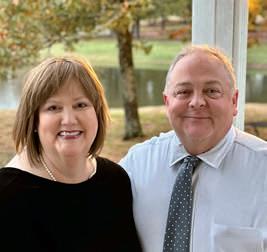

We praise God that he is doing okay. He is home and recuperating. Life events like this one certainly have a way of refocusing us. It requires that we stop for a moment to take stock of where we are, where we’re going, and what we do along the way. We are making some adjustments – let’s just call them New Year’s resolutions.
Introvert or extrovert, we love sharing community with you. We are incredibly thankful to be able to work together. From anywhere. Even ICU. But Wes, how about Key West instead?
From our very grateful family to yours, Happy New Year! ~
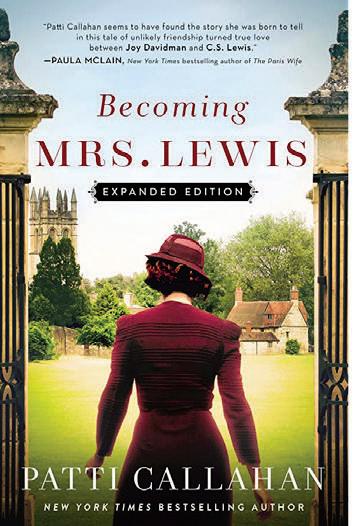




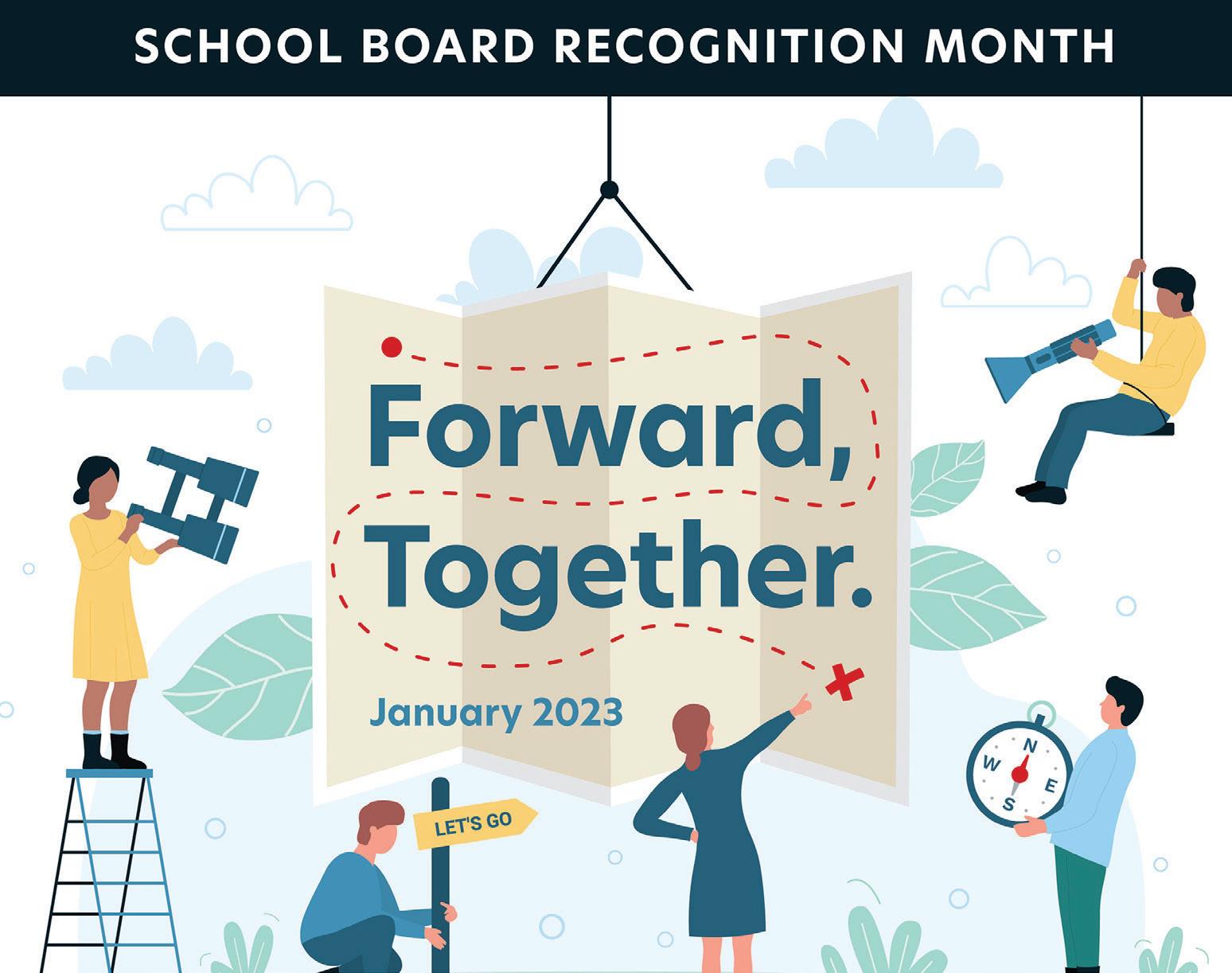
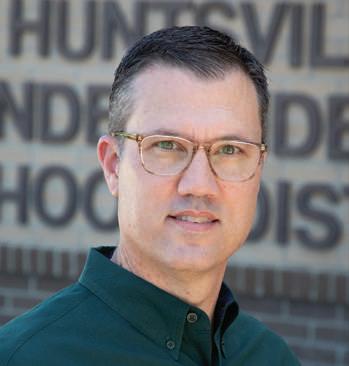
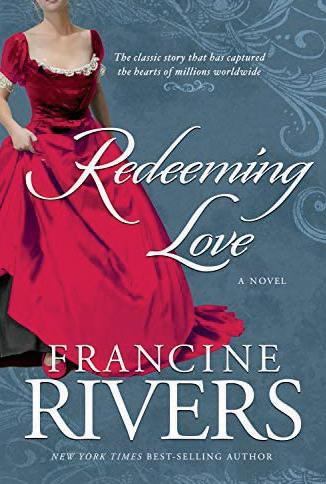
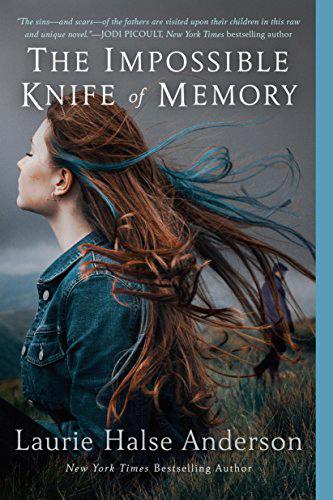 By Patti Callahan
By Patti Callahan

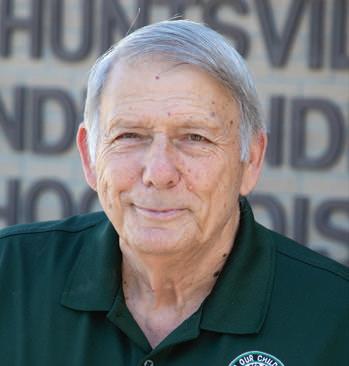
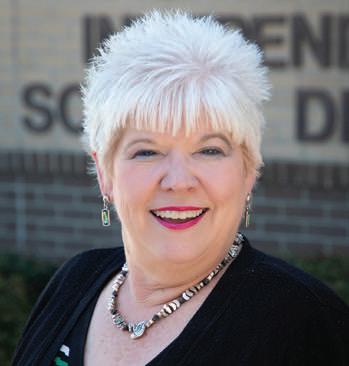

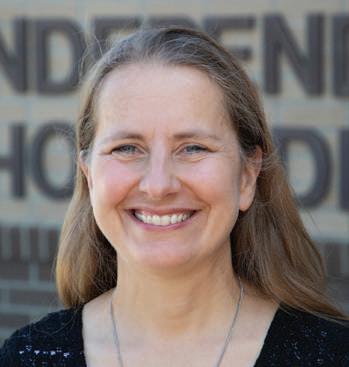
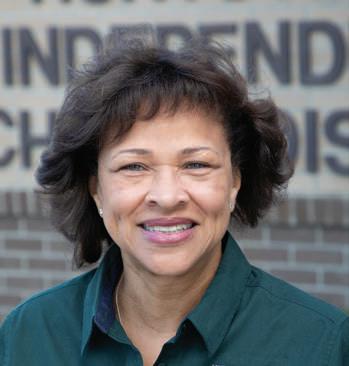











Honoring

who work with
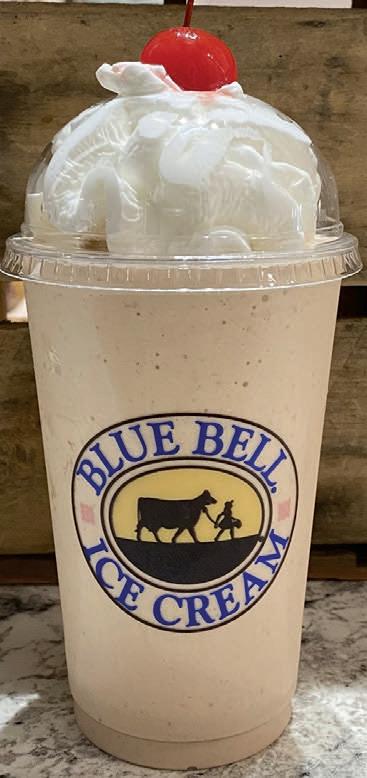




High

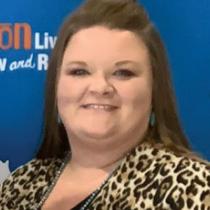
Kathryn Casey is primarily known as a true-crime writer, but her writings cover the spectrum. She’s written about glitzy art galas in Houston, interviewed A-list celebrities, interrogated serial killers, dished with first ladies over tea, and authored several novels. She has written more than 100 magazine articles, 11 works of non-fiction, and 7 novels. She has been seen on numerous news programs and documentaries and can currently be seen in all three episodes of Netflix’s
The Texas Killing Fields, which ranked as one of the most streamed programs in
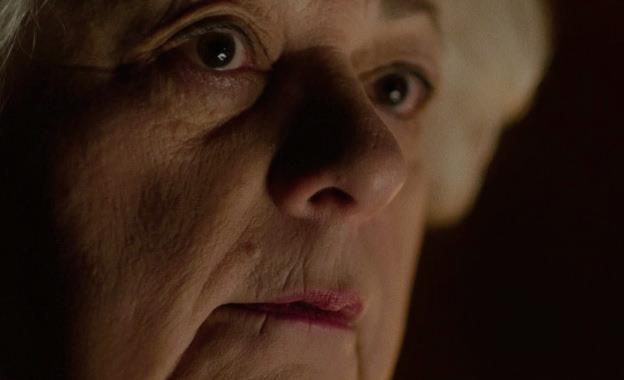
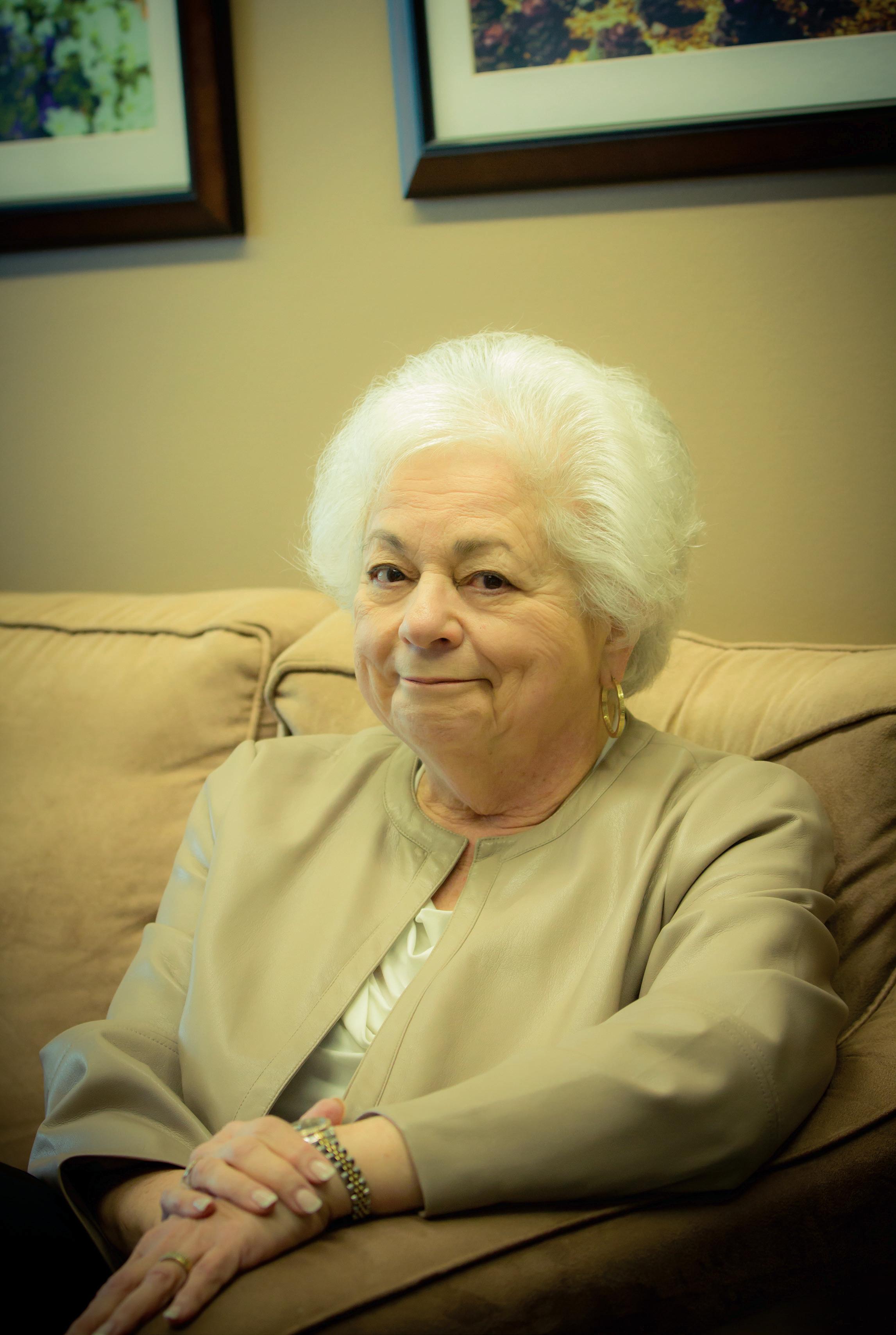
Where did you grow up?
The Midwest, in Wauwatosa, Wisconsin, which is near Milwaukee. I still have family there, and we go back from time to time.
When did you move to Texas?
I moved to Texas in 1980, when my husband moved here for a job. At the time, I was working a flexible job as a bookkeeper. When I got to Houston, though, I decided to make a switch and earn a bachelor’s degree from the University of Houston.
Did you pursue that degree with the idea of being a writer?
I did. I wanted to major in English, but I was in my thirties, and I thought that was really old. I figured I needed to be practical and get a degree in journalism.
Do you still think that being 30-something is old?

I do not.
Did the degree lead to a job writing?
Yes. I obtained an internship with Houston City Magazine, which, in turn, led me to being
hired by the magazine. By the time I left a couple of years later, I was a senior editor. I then jumped to Ultra
It was a bit like a Town & Country for Texas. I went to many ritzy parties and store openings, and we published a lot of stories with ball gowns and jewels. I was there for about two years, and then I worked regularly as a contract writer at Ladies Home Journal for almost two decades. During this period, I did a lot of freelance writing.
I wrote for numerous magazines and newspapers. I published for The Washington Post, Houston Chronicle, and The Boston Globe. I was a stringer for Newsweek and People. I wrote for Rolling Stone, Town & Country, and Seventeen. Freelancing was great because it allowed me to do different things, but it was important to have regular work, as I did with Ladies Home Journal
Things are so different now that a lot of people don’t realize what a thriving and stimulating world journalism was in the 1980s and 1990s.
It was a lot of fun. One week I might be in a penthouse at Caesar’s Palace interviewing Reba McEntire; then I would go to talk to a
grandmother in another state who had been artificially inseminated with her grandchildren; this could be followed by a visit to Allentown, Pennsylvania to cover a serial-killer case; and then it was off to the White House to interview Hillary Clinton.
She wasn’t the only first lady you interviewed.
That’s correct, I’ve interviewed Betty Ford, Rosalynn Carter, Barbara Bush, Hillary Clinton, and Laura Bush.
That is a tough one. But I really liked Laura Bush. I spent two days with Ms. Bush, one day with her during the campaign and a day interviewing her. She had been a librarian, and we spent a lot of time talking books, which I enjoyed very much.
When interviewing Rosalynn Carter, I had something of a surprise. While in her home in Plains, Georgia, President Carter walked through the door. He had been clearing out some vegetation, and he had cut his hand.
He walked in the door, saw Rosalynn and me speaking, and he interrupted, asking, “Rosalynn, do you think we have health

No, he was just playing, but he sat with us for a while during the interview. At one point he interrupted again, and noting that I worked for Ladies Home Journal, he said, “Lot of recipes in that magazine. Think you could make us some lunch? I’m getting darn hungry.” At that point, Rosalynn got up and escorted him out of the room.
Around this time—the late 1990s—the internet is changing journalism. Can you describe what effect this had?
Absolutely. The internet was emerging, and people were writing internet content for free. A lot of the print media began to dry up, and jobs became scarce. Fortunately, I was writing books by then. Not all writers were that fortunate.
The internet has made information more available, but
not necessarily more reliable.
When you were writing for major magazines, what steps were there to ensure accuracy?
Just as one example, when I did a piece for Rolling Stone, I had to supply the editors with a list of all my sources and their contact information. The magazine had fact-checkers, and all my work had to go through a legal team. Back then, even as a freelance writer, I had support from the magazines. The leading magazines had research teams to support writers. There were strict journalistic standards.
watching the strategy. I enjoyed that aspect of it. But the cases are also sad, and it is difficult to interview the victims’ families. But I thought there was something valuable in getting the information to the public.
Partly. It’s putting the puzzle together, assembling the pieces into a coherent picture, making sense out of the case. Prosecutors have asked me, “How did you get all that information?” For me, it’s a quest.
The Celeste Beard case in Austin probably involved the most unusual set of circumstances. It was something of a preposterous story, one I described in She Wanted it All If the Coen Brothers made a movie about domestic murder, it might look like the Celeste Beard case.
I began covering true crime while I was with Houston City in the 1980s. There was a lovetriangle murder I covered, and I spent months working on it. I found the trial addictive; I enjoyed seeing the attorneys in action. It was like a chess game; as a journalist, I was
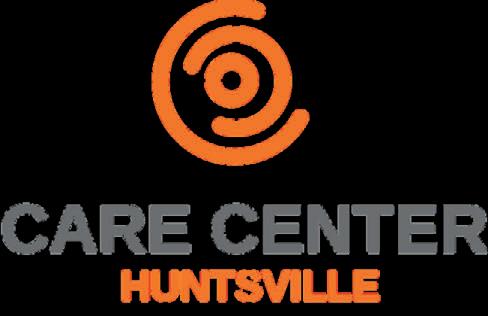
Celeste married a millionaire widower, Steve Beard, who was more than twice her age. She had also befriended Tracey Tarlton, the manager of Austin’s Book People, and the two of them, according to She Wanted
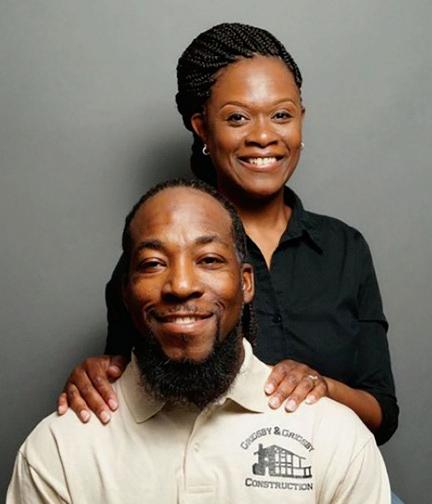
During this period, you wrote on a diverse set of topics, and you could have written books about any of those broad subjects. What brought you specifically to true crime?
Is it the investigative challenge that intrigues you?
What’s the most interesting truecrime case you have covered?
it All, made two unsuccessful attempts on Steve’s life. In a third attempt, Tracey shot Steve in the stomach, and he died four months later from a (probably related) blood clot. Tarlton received a reduced sentence for testifying against Celeste, and she was released from prison in 2011. Celeste was convicted of capital murder, and she is not eligible for parole until 2042.
You made the transition from magazine journalist to truecrime author, then you made the transition to novelist. Tell us about that transition.
I’ve basically been in a long-running legal education, dating back to the 1980s, when I began covering criminal trials. I’ve been in a lot of courtrooms. True-crime is interesting, but it’s not a lot of fun to write, and it’s reporting, not creative writing. I began writing fiction to explore things creatively, to have control of the plots, and I’ve been having fun with it.

Casey’s first novel, Singularity, was published in 2008, and it featured Sara Armstrong, a Texas Ranger. Library Journal called it a
“well-written debut” and Booklist called it “impressive,” with a “memorable heroine” who “has brains, moxie, and heart.” Casey wrote four novels featuring Armstrong.
After years of writing magazines and non-fiction, you wrote Singularity, featuring a female Texas Ranger. How did you prepare for that?
I spent about a month going around interviewing female police officers. They shared with me the process of breaking into the profession and various elements of law enforcement. And, of course, I have my own experiences covering cases, so I have a lot to draw on. What I learn in non-fiction bleeds into my fiction.
They both sell pretty well. The fiction works have been pretty successful, but I am known as a true-crime author.
Ann Rule referred to

THANK YOU for the trust you have placed in our firm. We look forward to serving you in the coming year.

From our family to yours, we wish you a healthy and happy new year!

Casey as “one of the best in the business” and author Gregg Olsen called her a “true crime great.”
With several successful novels under your belt, do you think you’ll return to the more emotionally and physically grueling true-crime?
I have submitted a couple of chapters of a proposed non-fiction work to my agent. I would like to do more. True crime is very popular right now, perhaps a function of both podcasts and documentaries on Netflix and such. I think readers take something from the true crime.
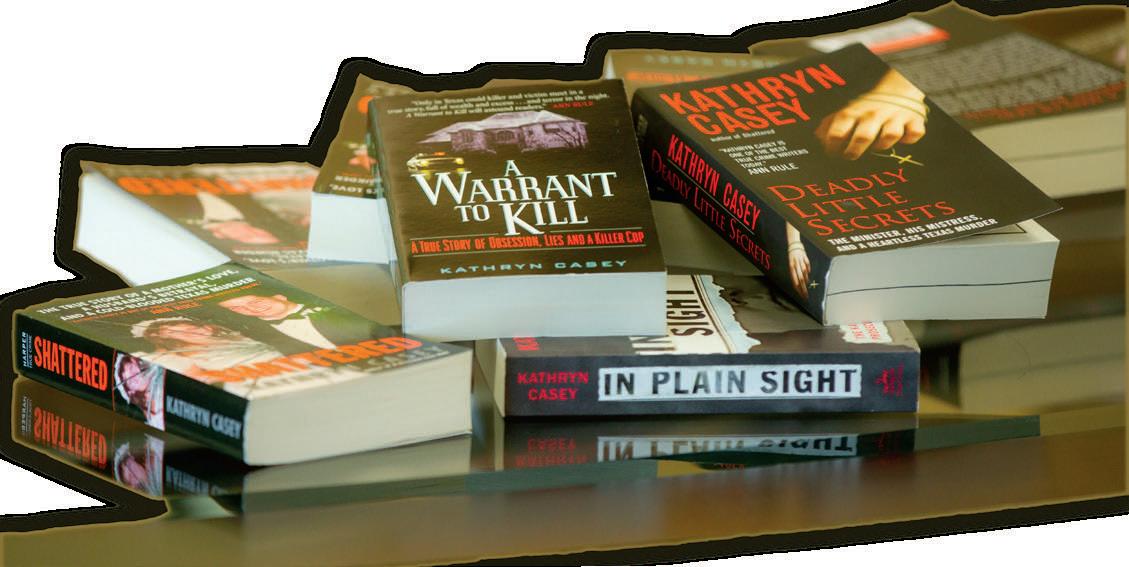
My first three Sara Armstrong books were done through St. Martin’s, and I had a clause in that contract that I could get the rights back under specific conditions. It worked out, and I was able to get those rights. When I wrote my fourth Armstrong book, I self-published it. Is that a risk?
Not as much now. Self-publishing is quite common, and if I don’t like an offer from a publisher, I can go the self-publishing route.
What are the industry standards for royalties through a traditional publisher and self-publishing?

It depends on various factors, such as who the author is, but the standard on a paperback is for the author to get eight percent; and for an e-book, the author receives twenty-five percent. With self-publishing, the author will receive between thirty and seventy percent of the cover price, but the author will also need to hire the copy editor and cover designer. And, of course, the author will need to do all the promotion.
Your latest books feature Detective Clara Jeffries. The first of these books, Fallen Girls, begins in a Mormon community. How did you come across that idea?
In my magazine years, I spent a week in a polygamous Mormon town about an adoption case. It is a lifestyle that’s very different from what most people know, and, as I was writing my novel, I thought that knowledge might be useful in forming the backstory and setting.

In both your fictional series, you have a female investigator as the lead. Is that because it’s what you know, or is it a social statement?
Female sleuths sell well; they are in demand. But, also, I am female, and I have done a lot of investigating. I know female police officers. I can take what I know, and I can incorporate it into my novels.
Have you ever thought of inserting yourself into one of your novels as a character? For example, having a dogged female

I have never done that, but it is a great idea. If I do that, I’ll have to include you in the acknowledgements!
You can see Kathryn Casey on Netflix’s Crime Scene: The Texas Killing Fields, you can find her books on Amazon or at almost any bookstore, and you can learn more about her on her website: https://www.kathryncasey. com/index.htm.
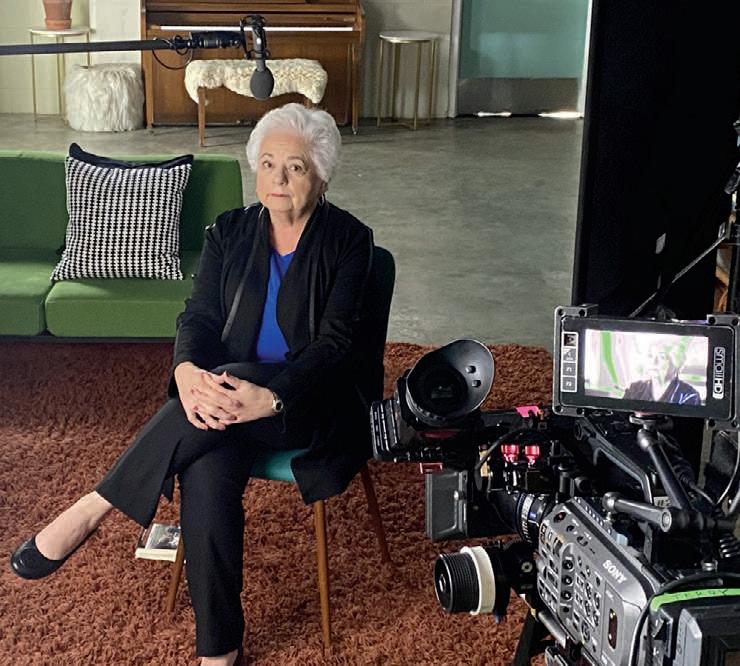
Welcome back to the Dear Gabby advice column. Happy New Year! We’re always lamenting how fast time passes, but a wise man once said, “The bad news is time flies. The good news is you’re the pilot.” You have to love that attitude! People have asked me about New Year’s Resolutions, but I haven’t told Dud what his resolutions are yet. I’m assigning them to him… because last year, I made too many for myself. It took me almost a whole day to break them all. Drop me a line to Dear Gabby at PostcardsLive. com and have a safe and happy 2023!

I am so thankful that the Medical Insurance commercials are over! If only the prescription medication commercials would go away. My doctor probably knows more about the medications I need than a person who’s “not a doctor, but plays one on television.” And what’s with these product mascots, anyway? Give me a break!

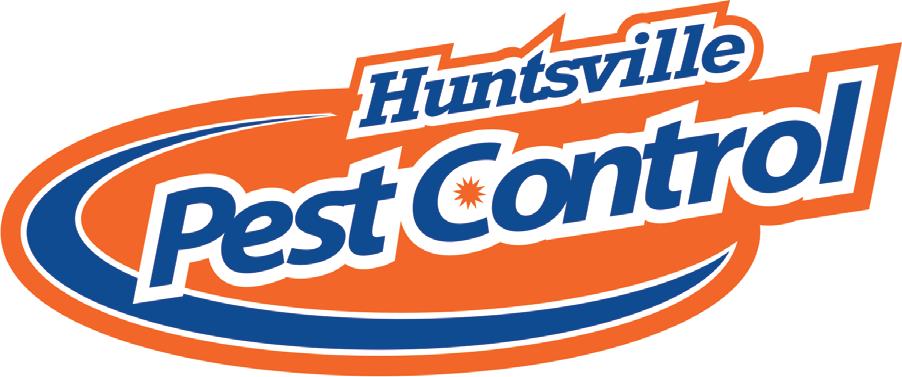 CRABBY
CRABBY
My boyfriend broke up with me, and my BFF bought me a puppy for Christmas so I wouldn’t be lonely. It was a wonderful, thoughtful gesture, but what am I going to do with a puppy? Don’t they turn into dogs? Help! UNDERDOG

Bless your heart. No, seriously, BLESS YOUR HEART! The last time I got a new puppy, we both cried all night. Just like human friends, the four-legged kind also like to embarrass you and will make a liar out of you when you tell someone what they can do. They’ll steal the remote and boldly go where they’re not supposed to. Some days you’re the dog; other days you’re the hydrant. Just hang an air freshener on his tail, and don’t expect any sleep in the near future. By that time, you’ll wonder how you ever lived without him.
DEAR CRABBYGeckos and tigers and emus, oh my! Crabby and Gabby, is it? We may very well be related. The age demographic of the average Facebook user is now trending toward Meta-mucil. We don’t appreciate our nightly television entertainment interrupted by Mr. Mucus, the “anywhere” anti-perspirant lady threatening to demonstrate, and has-been athletes promoting their energy product to the hubby and winking that “She’ll like it, too. I am not interested in anyone else’s va va voom, and I certainly don’t want to smell anyone’s drawers, no matter what brand of detergent they smell like.

CONFIDENTIAL TO “MAKING A WILL”: Here’s my suggestion. Being of sound mind, I spent all the money.






The World Affairs Council of Greater Houston has named Mike Yawn, Sam Houston State University faculty member and director of the Center for Law, Engagement, And Politics (LEAP), the International Professor of the Year. “Of all of the college students who attend our events, Mike Yawn’s students from Sam Houston State University are always the best prepared, most engaged and professional students in attendance – they always ask informed and thought-provoking questions,” said WAC Director of Programs and Director of the Global Affairs & U.S. Foreign Policy Institute, Ronan O’Malley. Mike is also a contributing writer to Postcards Magazine.
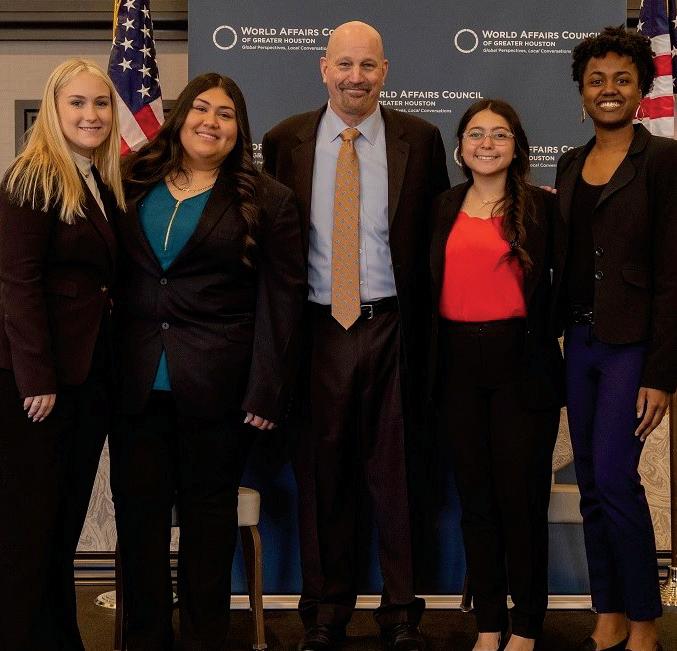
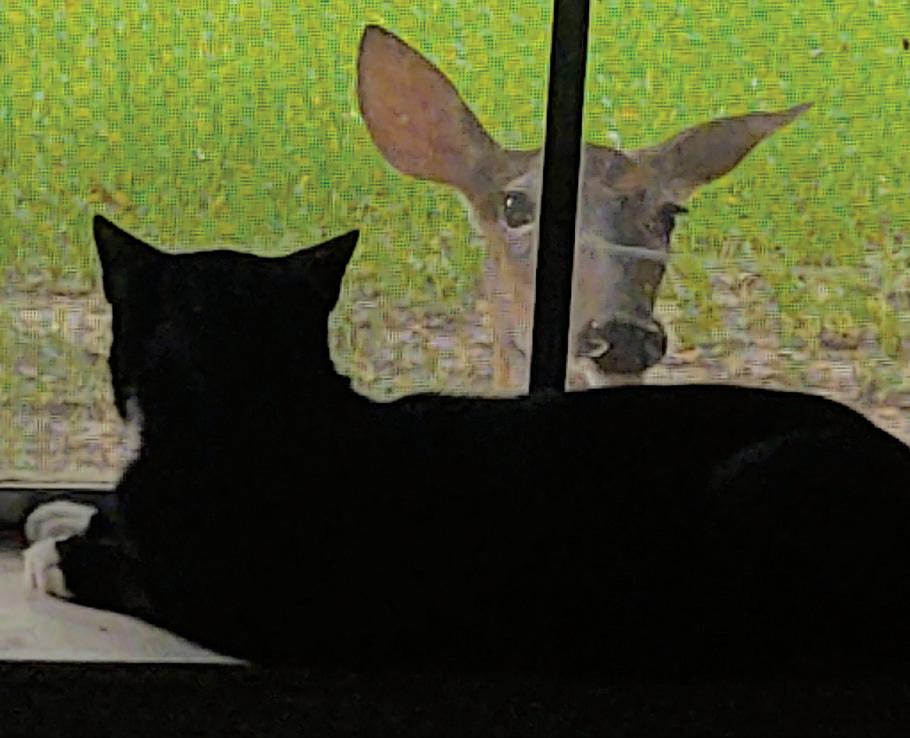
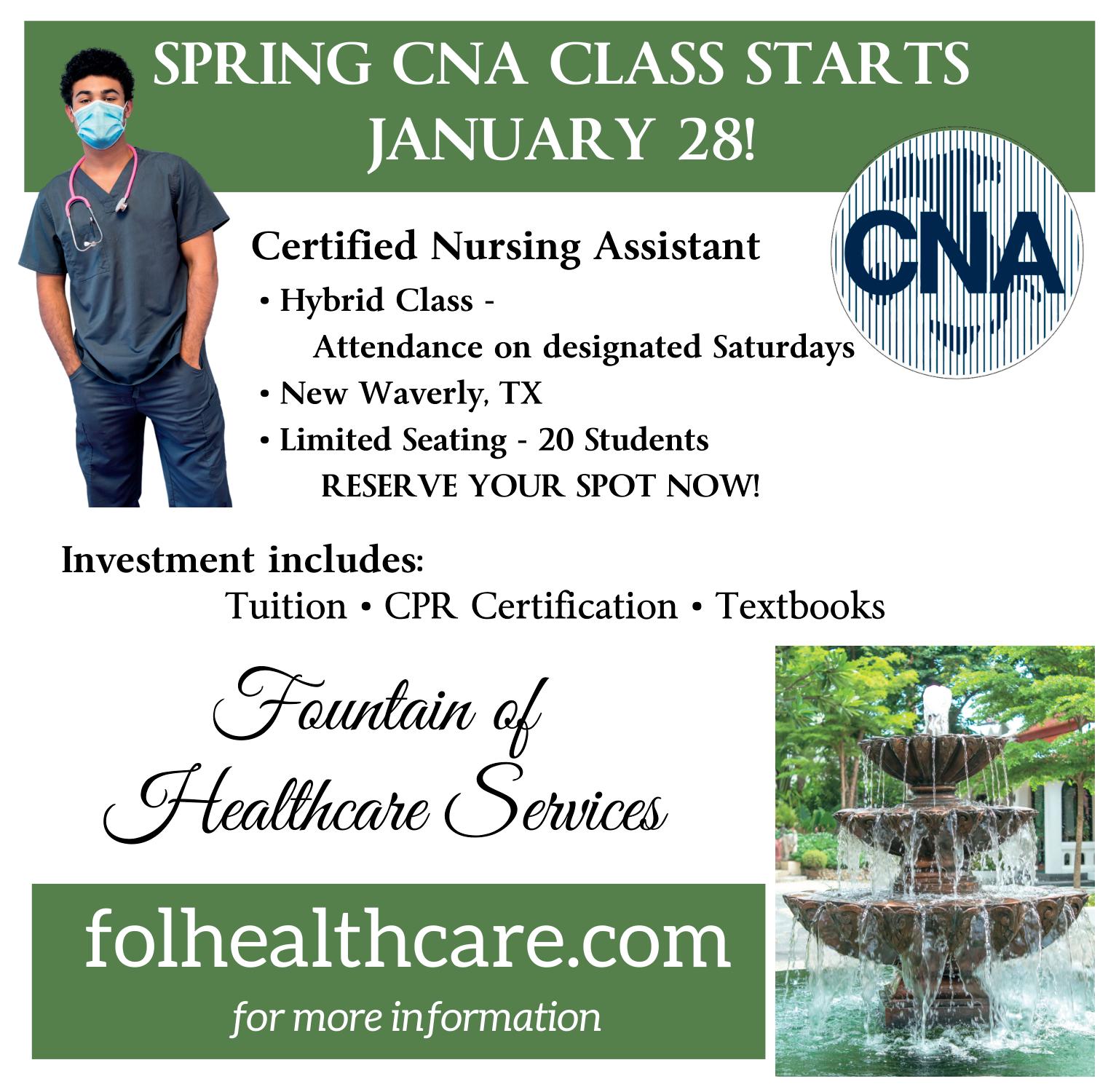
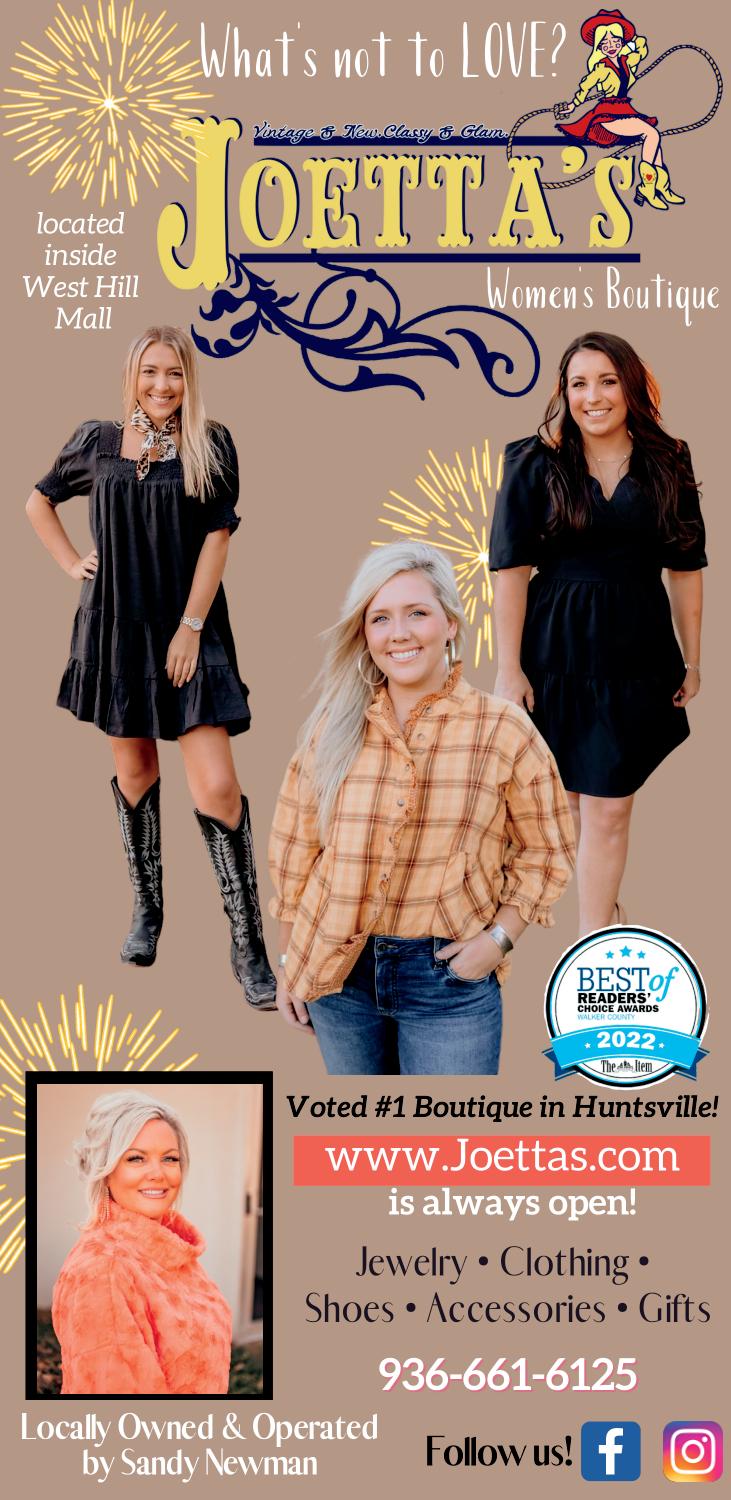

A garden is not complete until winter bulbs have been planted. Planting winter bulbs in southeast Texas is something you do not hear much about. Why?


Shorter blooming time, and the fact that most must be planted yearly as annuals in our area, often answer the question. Several varieties “naturalize” and return for decades with no care other than God’s grace.
It is easy to spot an old homestead in midFebruary--just find the large groups of blooming narcissi or daffodils growing randomly in a field and there is a good bet they have been growing for a century.

Let us begin with a few basics. Bulbs, corms, rhizomes are comparable to large seeds and have everything the plant needs to live and produce inside the bulb.
Winter bulbs are sun lovers and will require a light, rich soil with excellent drainage. Bulbs will rot in waterlogged soil, can be grown just as easily in a container, and most can be “forced” into bloom early.

Bulbs are grouped into two categories: winter and spring bulbs. Winter bulbs often require prior chilling time (like fruit trees) to bloom and do their best. Tulips, crocus, and muscari fall into this group and will require a minimum of 6 weeks of temperatures between 40 and 50 degrees, but not below freezing. For this reason, these are purchased beginning in November and refrigerated, not frozen (and do not store with apples…the bulbs will rot).
Some garden centers have pre-chilled bulbs, which will bring the 8-10 week period of chilling to a max of 4-6 weeks of chilling.
Why would anyone go to this much trouble? Because the bulbs are stunning when they bloom. A few area gardeners plant their tulips religiously every year, and the display is traffic stopping, even if it is for only 3-4 weeks.


The second group of winter bulbs does not require pre-chilling and can be planted through March with great results. Paperwhites (narcissi), daffodils, crocus, hyacinths, and amaryllis (the queen of bulbs) are bulb varieties that will naturalize and grow well.
Deer tend to stay clear of narcissi and daffodils due to their heavy fragrance, although the remaining varieties are a buffet. Independent garden centers will carry the best varieties for your area. Do not forget to fertilize with bulb booster (generally a tablespoon under each bulb at planting) or bone meal 0-10-0 (both are organic).
Keep in mind winter bulbs thrive in late winter temperatures of 45-78 degrees and will not tolerate extended heat above 85 degrees. The recorded rule of thumb is to plant by November--but through decades of trial and error, I have found southeast Texas can produce heavy rains in November through December, so January/February planting is a better bet!






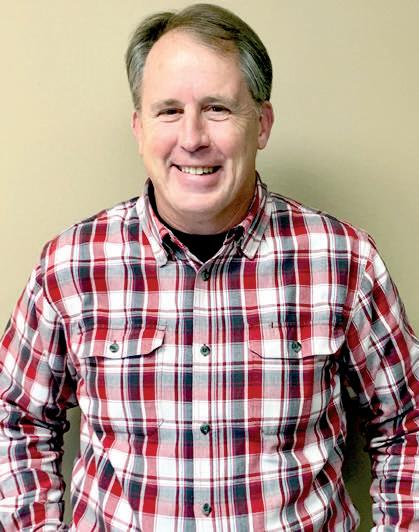
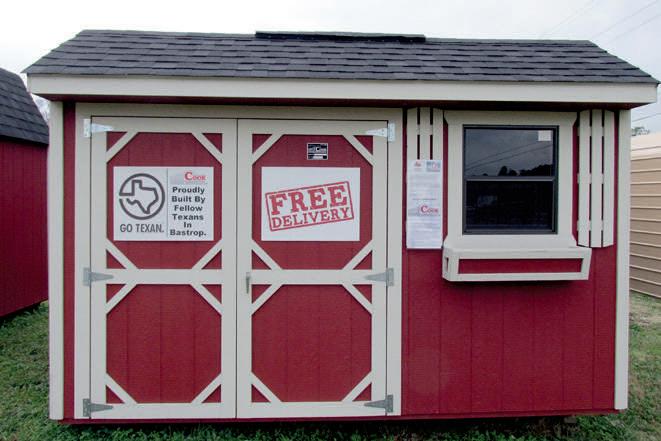


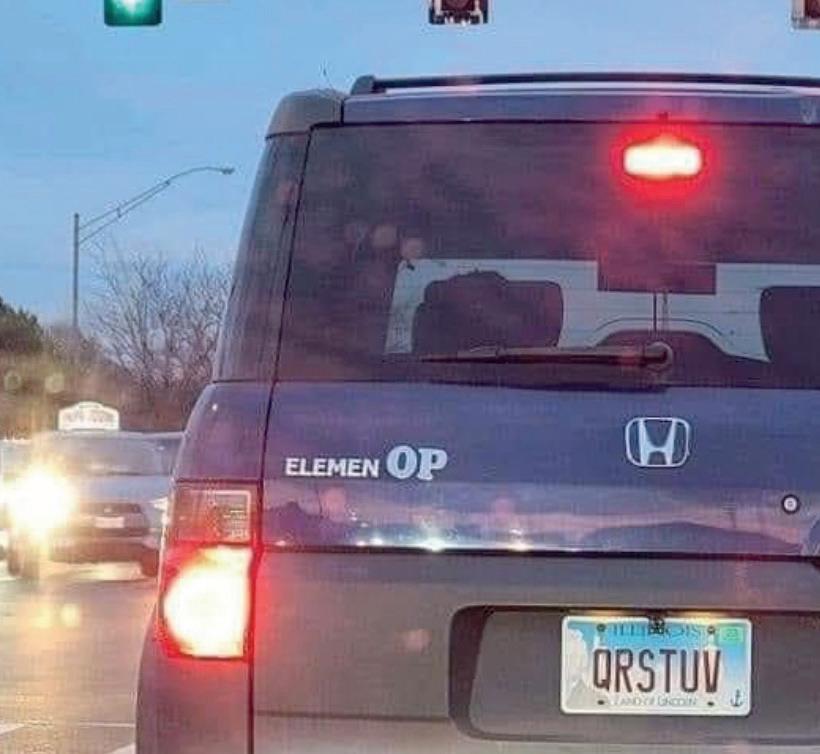


The existence of God is a perplexing question. We humans are material beings existing in a material world, and we think in physical terms considering existence. Our dreams exist in our nonmaterial or not-real world. Thus, real becomes synonymous with tangible.
The assessment process of God’s reality should start as the Bible proclaims, from its first sentence, “In the beginning God created the heaven and the earth.” This idea prevailed until 1927 when amazingly, Georges Lemaitre, a Belgian Catholic Priest, introduced the Big Bang Theory.
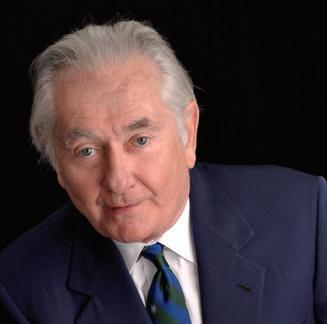

The gargantuan “Big Bang” hap-
pening was, by definition, the largest event ever possible in the material world. It has resulted in an entity of incalculable mass, whose size by diameter is 15 with 22 zeros total miles. WOW! Science does not know the cause; therefore, it has no cause. This causeless origin of everything is indeed paradoxical. This causeless greatest event is the only major scientific discovery without a known cause. I conclude the only possible explanation of creation would require an intelligent omnipotent trigger such as God.
Life is by far the greatest complexity in the material world; its

undisputed origin is shown by fossils in Australian and Greenland rocks dating back over 3 billion years.
I have worked in biochemical labs producing various organic substances, and the process must be done correctly with the right substrates using certain concentrations and temperatures. Next, the complete human genome of DNA requires several different chemicals composed of atoms and totaling three billion sets to make the 46 chromosomes that are necessary for a human cell. Adding to the intricacy, there are over 200 types of cells necessary to compose a human body with different functions to produce different tissues. As would seem obvious, there are distinct differences between the tissues (such as bone, skin, and brain). These many varieties form our bodies, which have an astonishing 30 trillion cells on average. These cells die and are replaced by

a system providing renewal as needed over a lifetime. We can believe these incredible happenings just came about aimlessly…or there is a nonmaterial eternal Causal Force at work. Natural causation by nature comes about by generalities without seeking complex end results.
The concept of Evolution began in 1859 when Charles Darwin’s book “On the Origin of Species” was published. He presented evidence that humans evolved from ape ancestors which skeletal evidence confirms. Biochemicals change very slowly over time with many replacements. Such new altered DNAs could minutely alter the bodies they produce, alterations producing better survival would persist and defective ones would disappear. What level of intelligence could design such a system? Only a God-Like One.


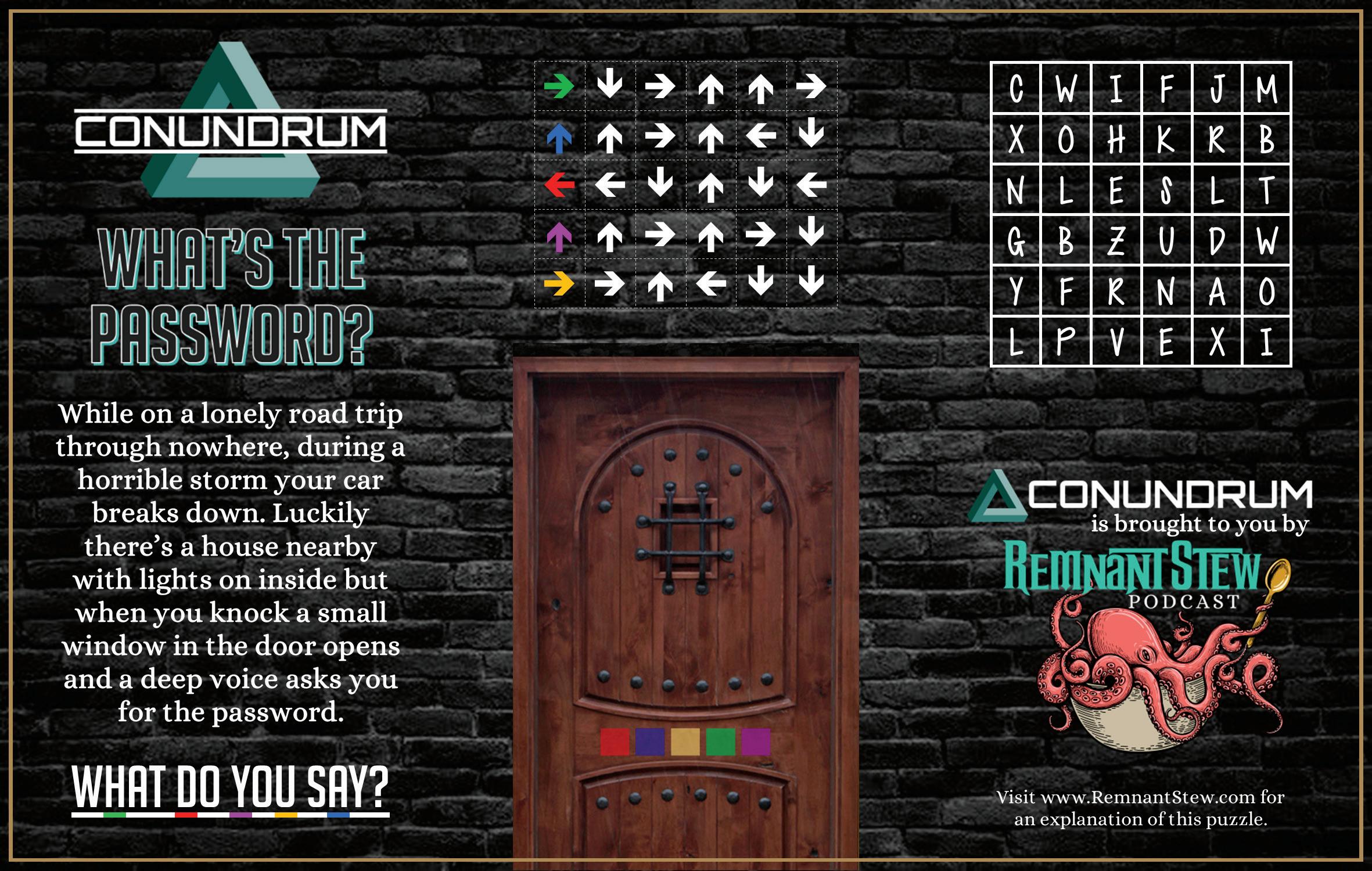
Owner, Chester Crawford, EA

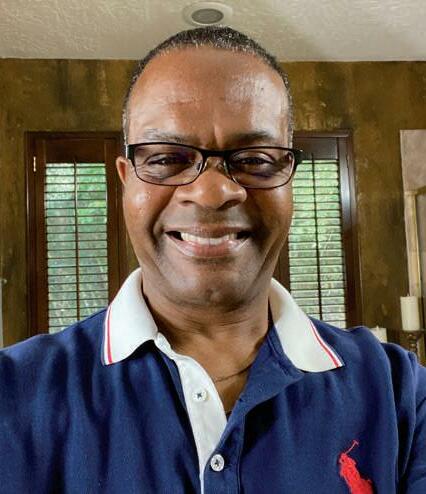
SCHOOL YOU ATTENDED?
Huntsville High School / Sam Houston State University

FAVORITE MOVIE? The entire “Bad Boys” franchise
HOW DID YOU MAKE YOUR FIRST DOLLAR? Service Station attendant - Full Service
BOOK THAT LEFT A LASTING IMPRESSION ON YOU? The Bible LAST THING YOU BINGE-WATCHED?
WHAT WOULD WE FIND YOU RIDING DOWN THE ROAD LISTENING TO? R&B/ Jazz

YOUR FAVORITE DISH? Grilled salmon - Brown rice - asparagus w/ glass of red wine
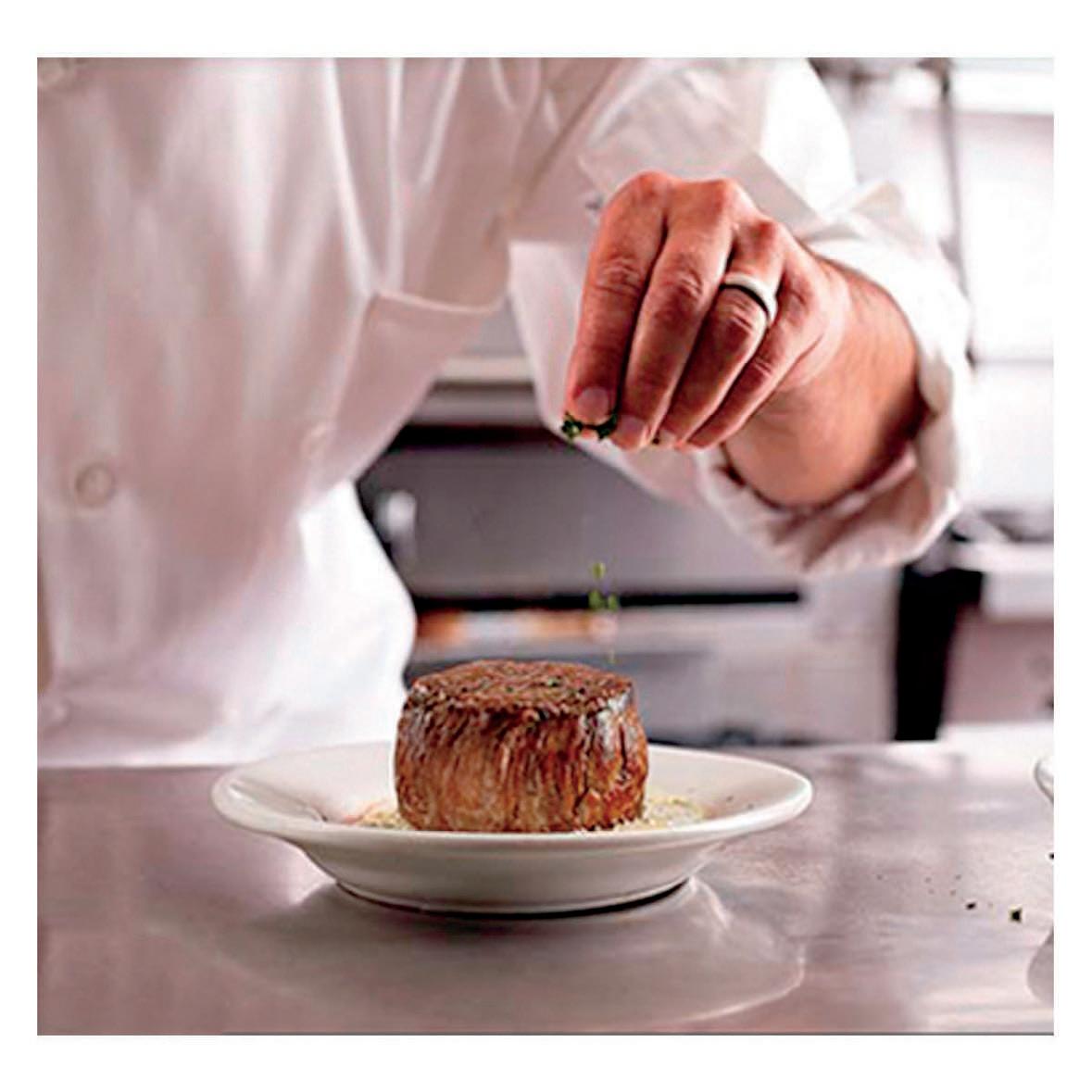
YOUR GO-TO BARISTA ORDER?
Hot Tall vanilla latte w/ banana nut bread
FAVORITE CHILDHOOD MEMORY Summer League Baseball SOMETHING THAT WOULD SURPRISE US ABOUT YOU?
WHAT WOULD WE FIND YOU DOING ON YOUR DAY OFF?
HOW WOULD YOUR PERFECT DAY BEGIN?
HOW DO YOU CLEAR YOUR MIND AFTER A BAD DAY?
ONE THING YOU’RE EPICALLY BAD AT?
BUCKET LIST ITEM YOU’RE MOST GLAD YOU’VE DONE? Visit Pearl Harbor on Dec 7th my birthday

TOP THING LEFT TO DO ON YOUR BUCKET LIST?
IF YOU COULD LIVE ABROAD, WHERE WOULD THAT BE?
WHO DO YOU ADMIRE AND WHY?
BEST ADVICE YOU’VE EVER GOTTEN?
ADVICE TO YOUR YOUNGER SELF? Cultivate good personal relationships.
The most important things a man can get in this world are something to eat, something to drink, and someone to love.
To be happy with a man, you need to understand him a lot and love him a little. To be happy with a woman, you need to love her a lot and not understand her at all.
Women don’t make fools of men ‘cause most men can do it themselves.
She don’t make mistakes. She just dates ‘em. You ain’t never gonna break a horse if you stay sit-in’ on the fence. You make me happier than a gopher in soft dirt. You’re sweeter than mama’s tea.

She could charm the dew right off the honeysuckle.
January 8th 10:30 a.m. and 6:30 p.m. January 9th, 10th, 11th, 12th 6:30 p.m.
January 8, 2023 - January 12, 2023
January 8th 10:30 a.m. and 6:30 p.m. January 9th, 10th, 11th 6:30 p.m.
Satuday, January 7 @ 6:30 P.M. - Praise & Prayer Service Sunday, January 8 @ 10:30 A.M. & 6:30 P.M. - Dr. Bob Pitman with Mark Trammel Quartet Monday, January 9 @ 6:30 P.M. - Dr. Bob Pitman with Mark Trammel Quartet
January 12th 6:30 p.m.
Tuesday, January 10 @ 6:30 P.M. - Dr. Bob Pitman with Mark Trammel Quartet Wednesday, January 11 @ 6:30 P.M. - Dr. Bob Pitman with Mark Trammel Quartet Thursday, January 12 @ 6:30 P.M. - Dr. Bob Pitman with Jeff & Sheri Easter
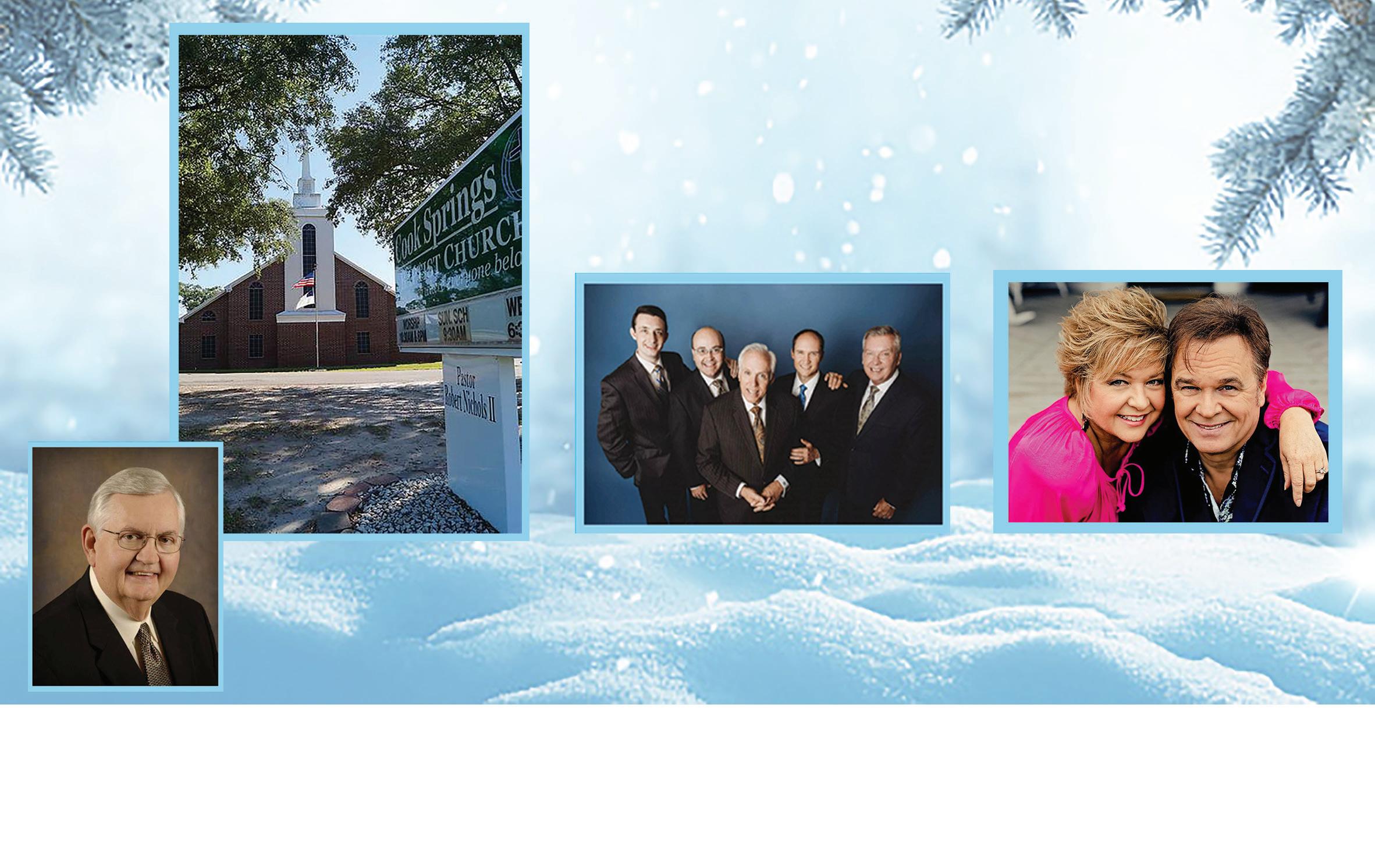






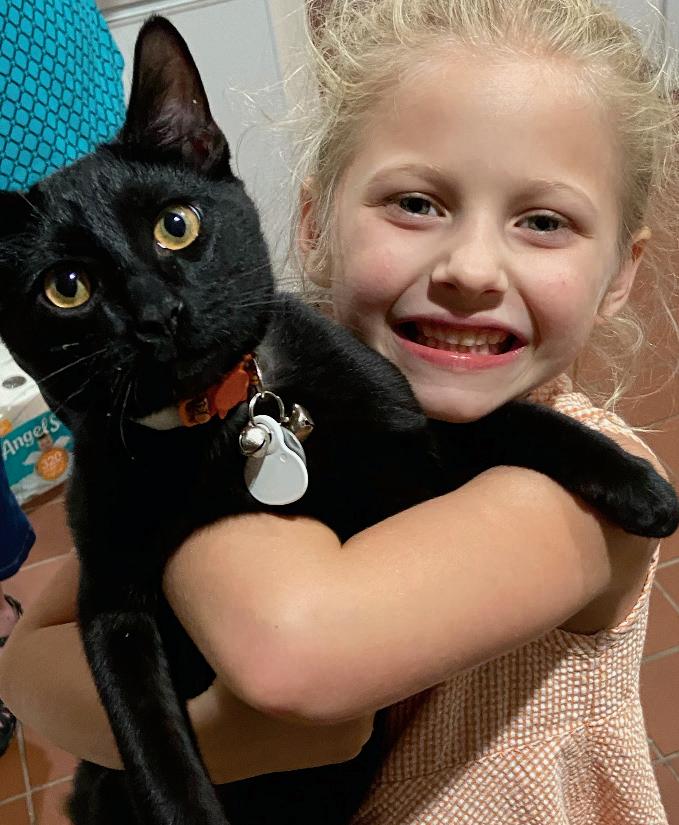
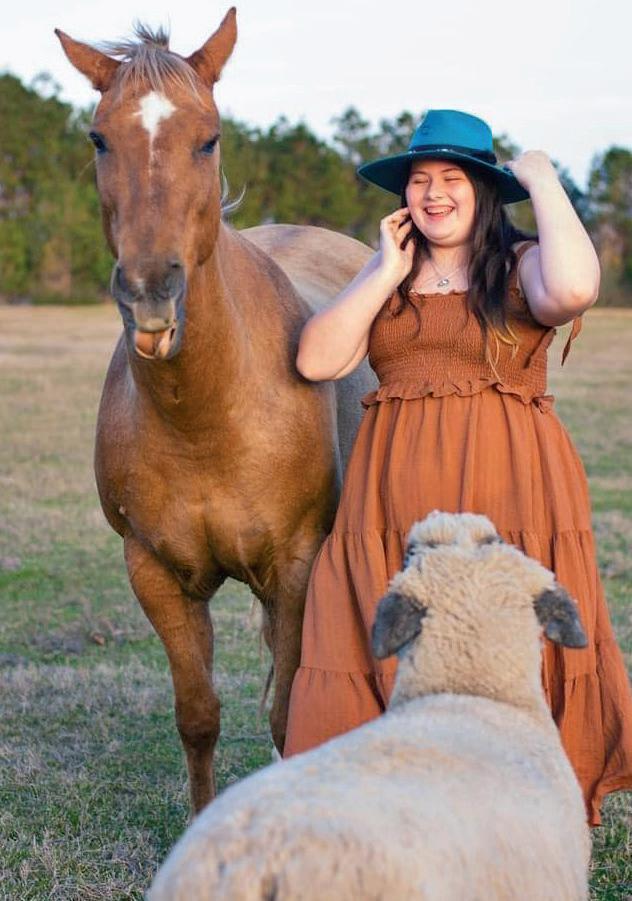



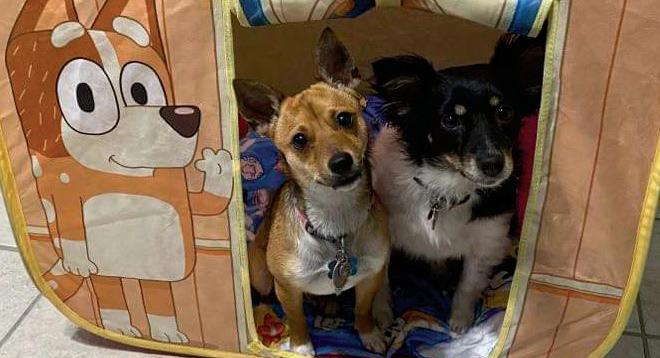
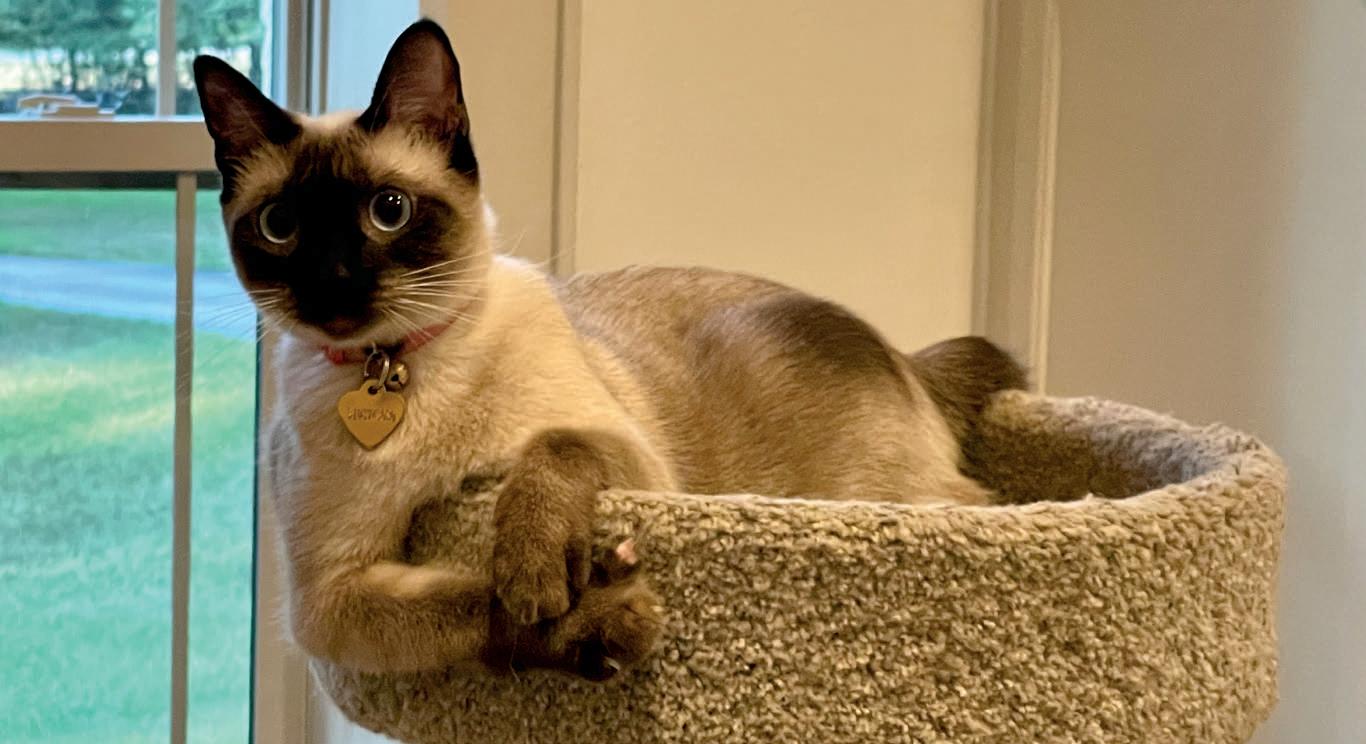
Although geographically closer to the northeast, Ohio is the easternmost state of the U.S. region known as the Midwest. I visited Ohio decades ago when I worked with newspapers around the country. The experience did not top my favorites list. Maybe it was the time of year, or the newspaper staff, or the location, but whatever it was, I left there thinking I should give their state travel board the new slogan I had coined for them: “Ohio. So?” That was until a few months ago.
Wes and I had planned a long weekend trip down to Biloxi, Mississipi to see comedian Bill Engvall perform on his final tour. A family wedding required us to change that to another date/location, so we chose somewhere we had never visited--Lorain, Ohio. I was excited about giving Ohio another try, and even more excited about visiting the Amish community of Holmes County. Our friends Gregg
and Nancy Jolly decided to join in, and we had a fabulous time.
Because we only had a long weekend, we flew into Cleveland, rented a vehicle, and made the 30-mile drive west to the town of Lorain where we were staying. Lorain is located on the beautiful shore of Lake Erie. It is known as “The International City,” because it is home to more than 70 different nationalities. Lorain is also sometimes referred to as “Steel City” because of its well-known steel mill, but I will always remember it as the home of the historic Lorain Palace Theatre. The Palace was the venue where Engvall performed, and we loved seeing this antique gem. Opened in 1928, the Palace was the first motion picture theater in Ohio to show a talking motion picture. It also still has its original Wurlitzer theatre organ, one of four remaining in Ohio.
Two hours south of Lorain is Holmes County, Ohio,

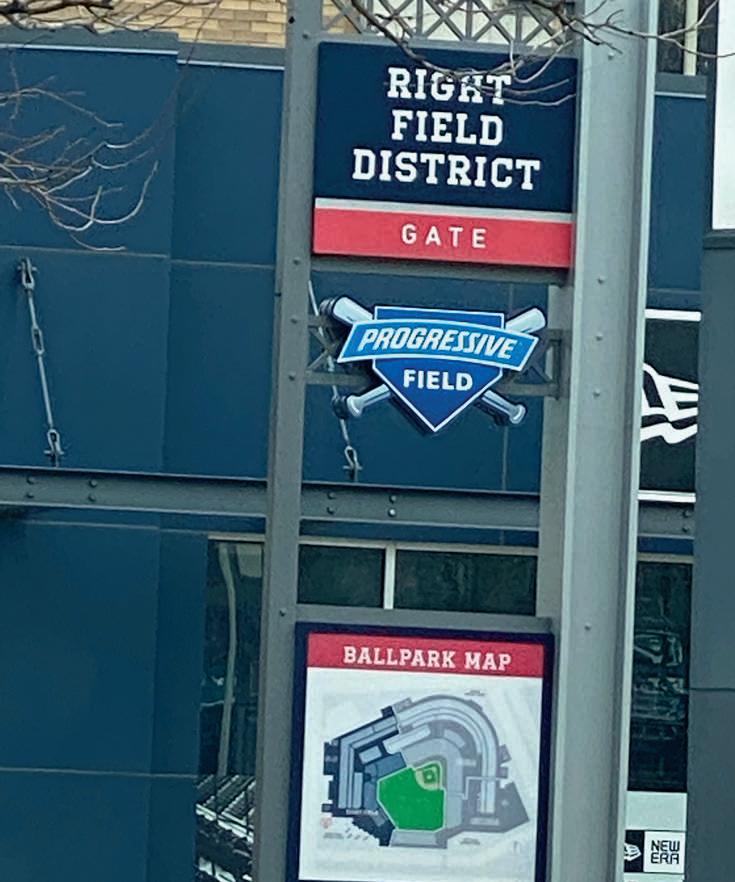









 Photo by Rona Proudfoot
»
Photo by Rona Proudfoot
»
home to one of the largest Amish communities in the United States. Making up approximately half the population of Holmes County, an estimated 38,000 children and adults make this the highest concentration of Amish in any U.S. county and second in the world--only the Lancaster County settlement in Pennsylvania (spanning multiple counties) has more.
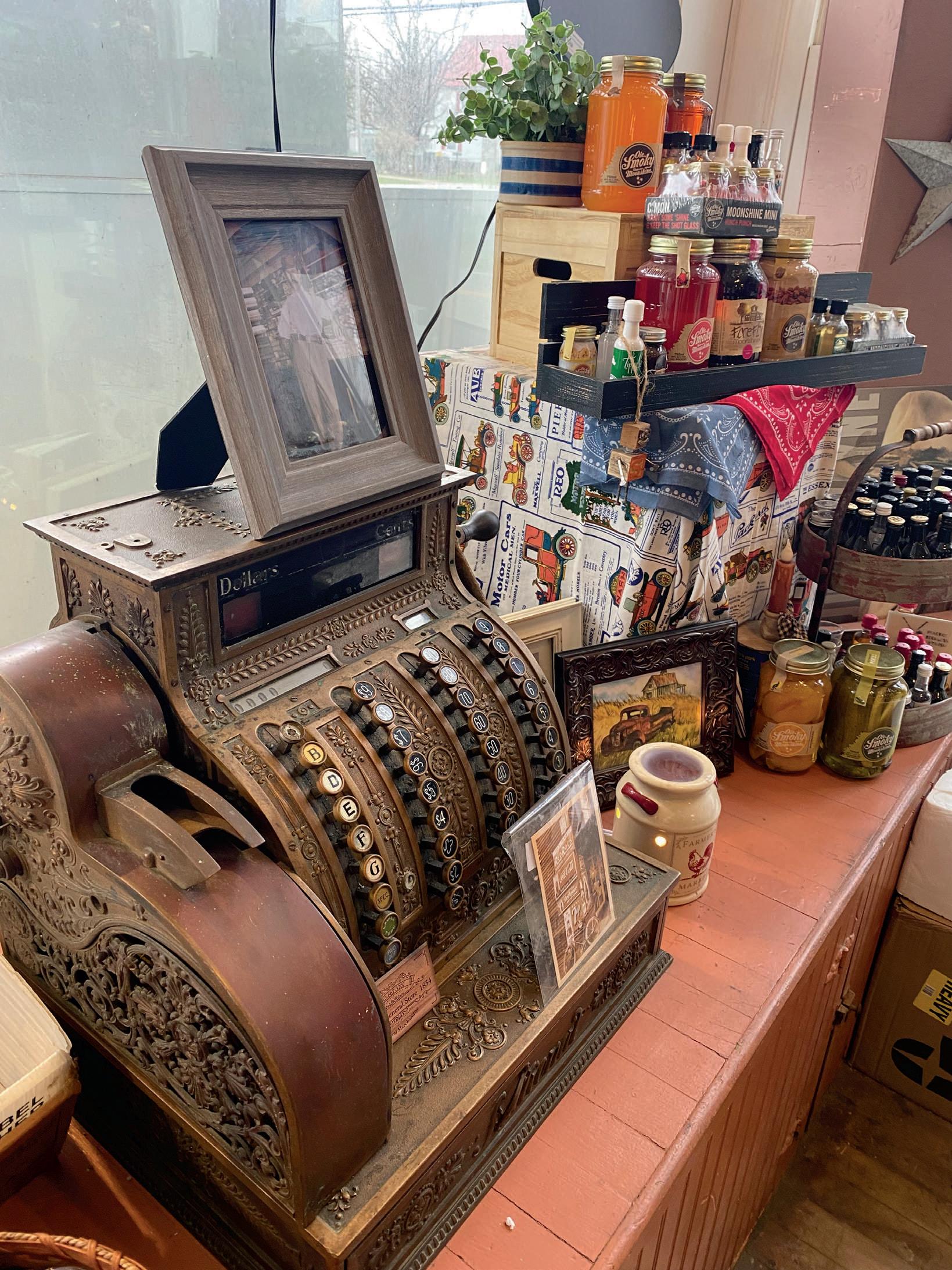


About halfway to our destination, we drove through Chatham Township. A community of about 2,400, Chatham is home to the Chatham General Store, founded in 1854. We passed by, and because I was driving, we turned around to check out this historic gem. The building actually dates back to 1834 but has been a general store since 1854. Signs on the porch for maple syrup and hunting gear evidenced this was an authentic general store. Stepping onto the original, worn wood floors was like taking a step back in time. From the vintage 1869 cash register to the local goods room featuring honey,
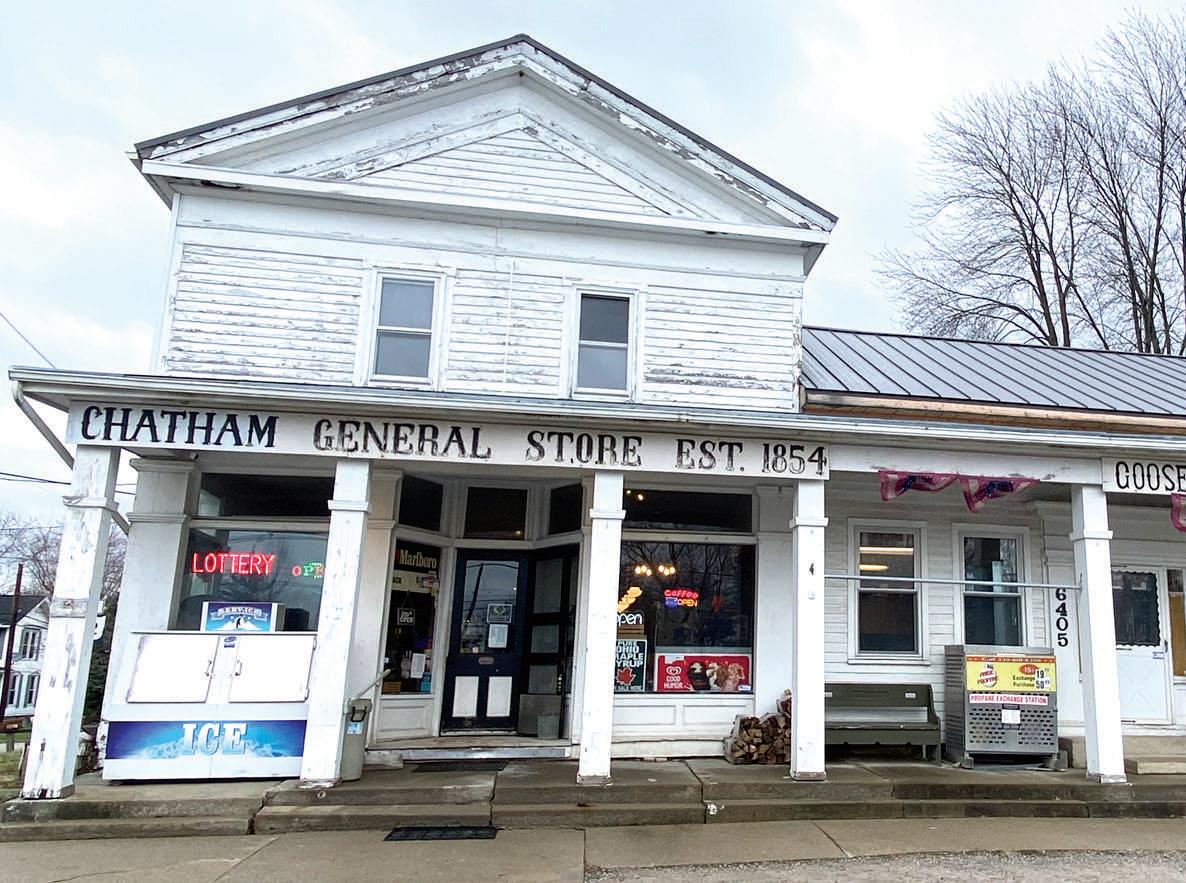
soaps, artwork, and more, the store offers almost anything and everything. We followed the smell of fresh coffee and baked goods to a front counter where we all found a little something for a snack. My selection was a couple of chocolate dipped graham crackers, but the mistake I made was not tasting them until we were in the car. Oh my! They were the best I had ever had!
The Holmes County Amish communities are Millersburg (the largest), Walnut Creek, Berlin, Charm, and Sugarcreek. We decided to spend the day in Berlin (pronounced Ber’lin), and as we made our way down the back roads, we took in the beautiful countryside and meandered our way past farm after farm. Since Gregg is a retired agriculture teacher, he was in his element and able to answer some of the questions we had as we passed.
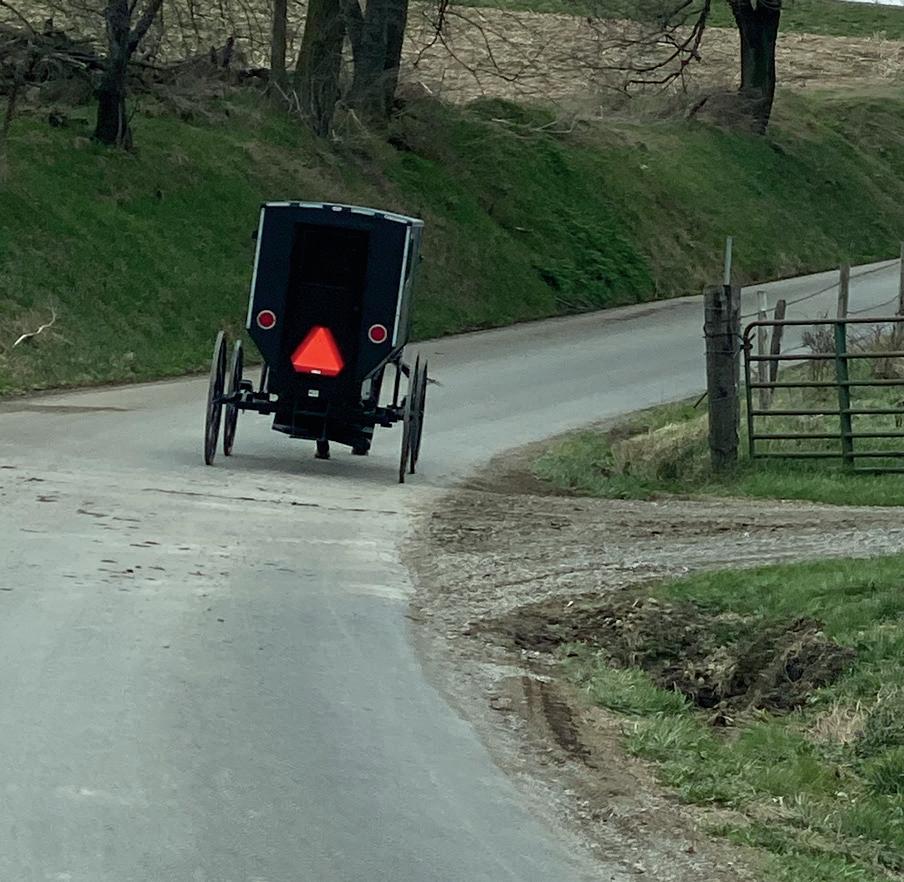


When we arrived in Berlin, population 1,447 in the 2020 census, we drove around the little community to get an overview. We saw streets lined with craft stores, gift shops, antique malls, flea markets, theaters, bakeries, fabric stores, ice cream parlors, vintage clothing stores, and knew we were in for a fun day. After getting the “lay of the land,” we decided it was time for lunch and headed to the Der Dutchman Restaurant a few miles down the »



road in Walnut Creek. Situated on top of a hill overlooking the valley and beautiful farms, this alone was worth the trip. Known for their Amish Farm chicken, “always real” mashed potatoes, fresh salad bar and buffet, not to mention desserts, this restaurant is a favorite among tourists and locals alike. We stopped in at the bakery next door to pick up a few souvenirs to take home…namely their Amish Peanut Butter spread, which is a
delectable concoction of peanut butter and marshmallow crème. Gregg is now addicted to their blueberry cream cheese fried pies and is currently in “talks” with them regarding shipments to Texas. A couple of other unique food places we discovered were Coblentz Chocolate Company (they DO ship to Texas), and The Cracklin’ Pig. Coblentz, a familyowned and operated business founded 35 years ago, makes delectable handmade
chocolate confections.




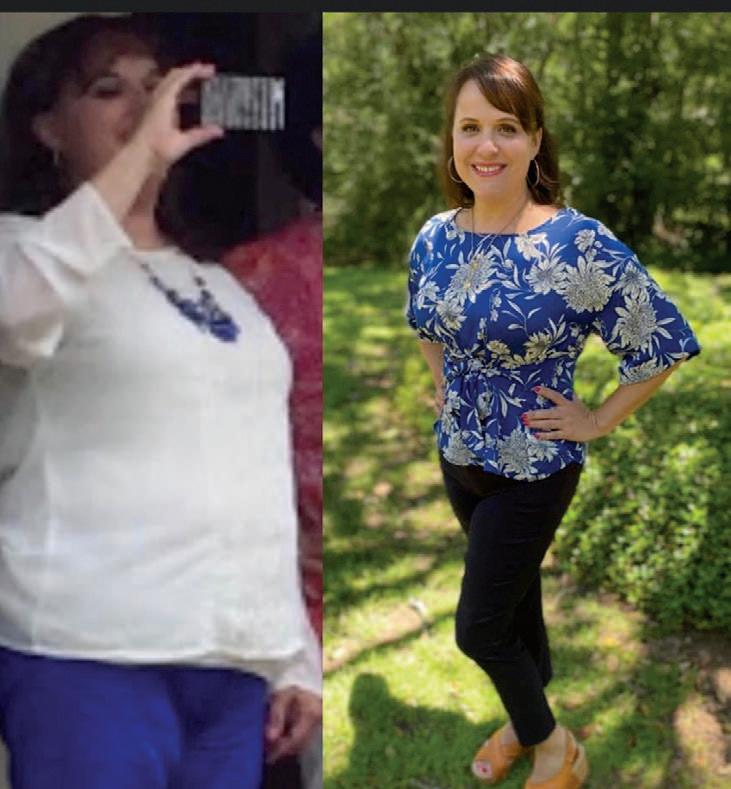
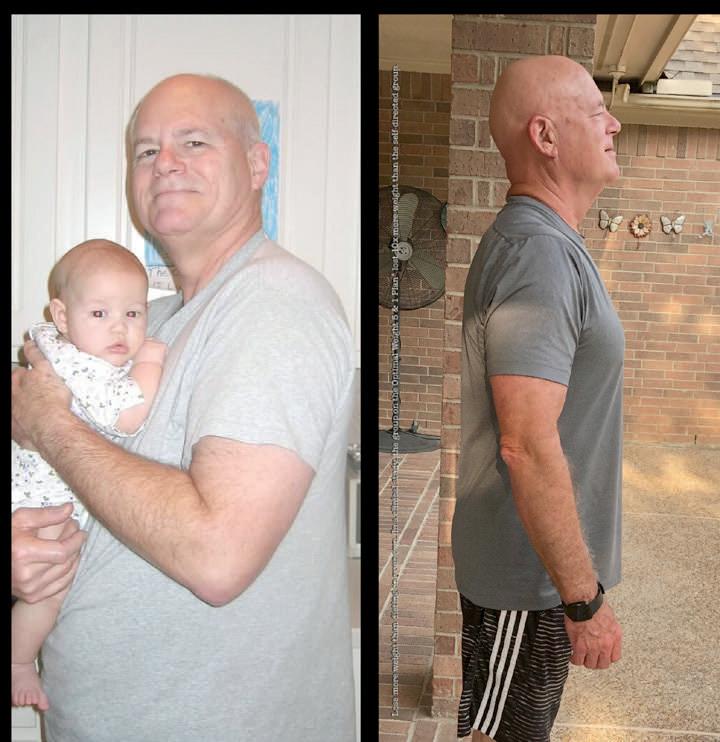
The highlight of the trip was our visit to the Amish & Mennonite Heritage Center. The Center is the home to Behalt, a 10-foot-high by 265-foot-long oil on canvas circular mural painting illustrating the heritage of the Amish and Mennonite people. The mural and the presentation that goes along with it highlight the history of the Anabaptist people from their beginnings in Zurich, Switzerland, to
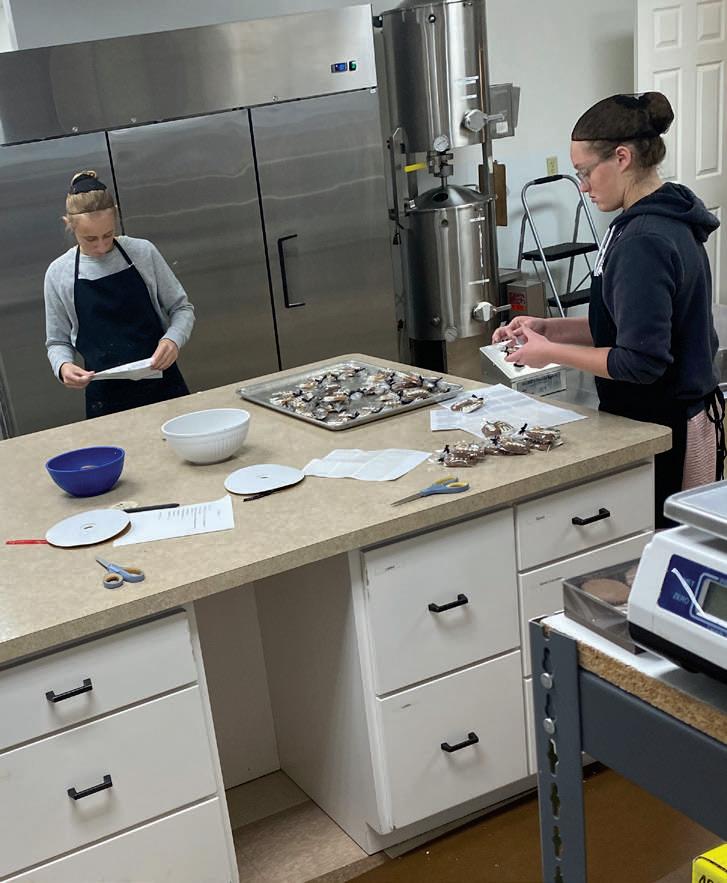
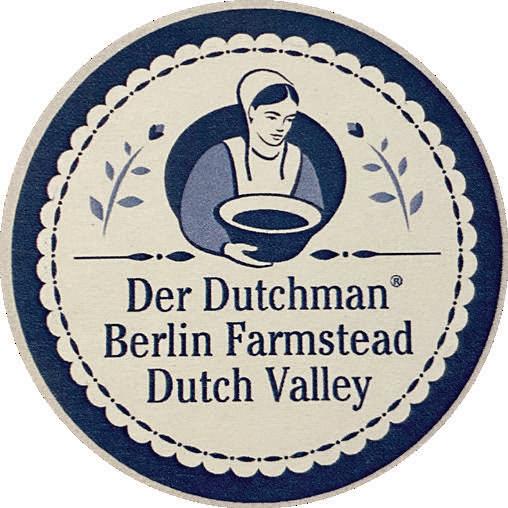
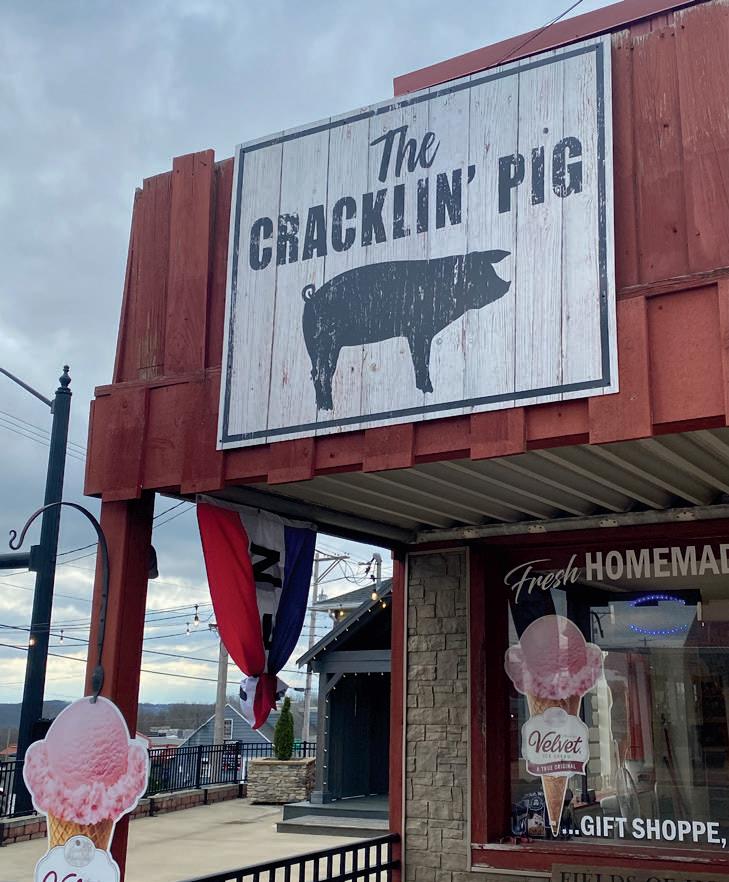
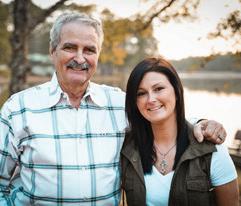
the present day. Behalt means “to keep” or “remember.” The mural is an inexpensive, but incredibly creative history lesson of the culture. It was an amazing work of art as well as a sobering reminder of the persecutions some have endured for their faith. The Center also houses a museum, which is free of charge.



Featuring Amish apparel, artifacts, exhibits and rare books, the museum addresses and answers some of the most commonly asked questions about the Amish and Mennonite way of life. Unfortunately, the Center was closing before we were able to see everything. Maybe on the next trip we will get a chance

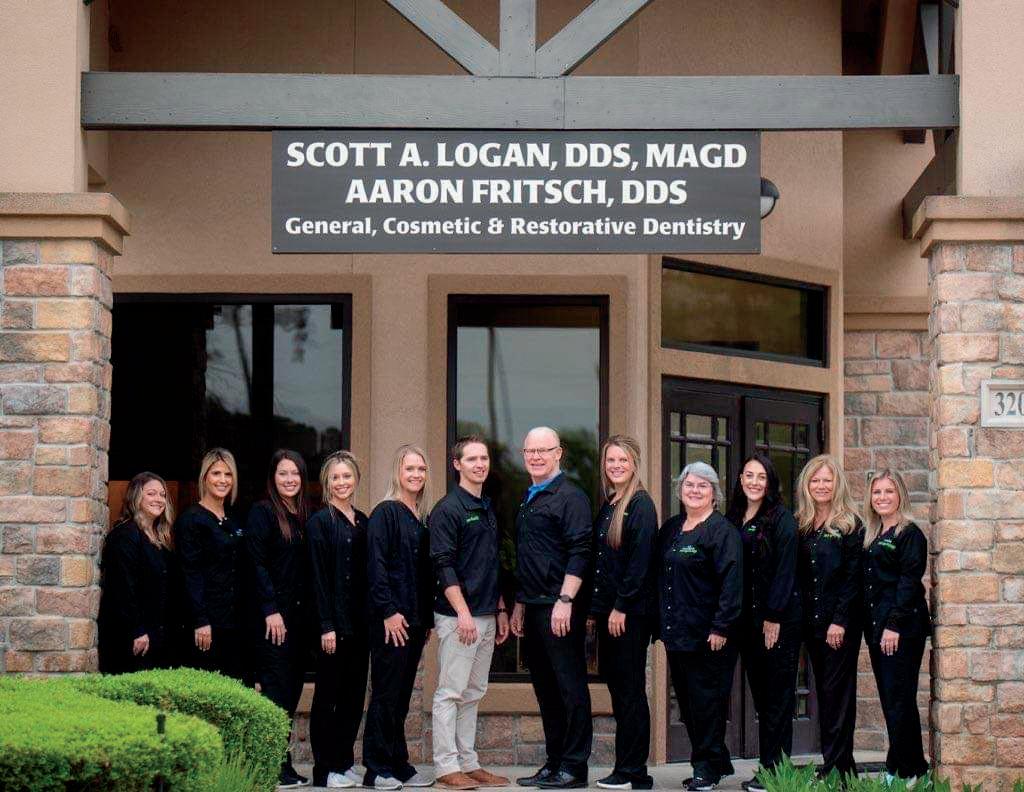
to explore the One-Room School and Pioneer Barn!
One of the most interesting things I picked up at the Amish & Mennonite Heritage Center was a newspaper called The Diary of the Old Order Churches I didn’t know exactly what it was, but, probably because of my work, I
tend to pick up any free publications around. This publication is a contribution of work from Old Order church members all over the United States. The goal of the publication is to “collect and preserve the historical virtues of the church.” In its pages are listings of births, marriages, obituaries, and news of the individual church districts. There are also some puzzles and poems submitted by readers (see this month’s Creative Corner for a poem from The Diary). In spite of the fact this is a black and white publication with no photos and LOTS of words, I finally realized why I was so fascinated by it. It is a publication that shares community much like we do at Postcards. While our community is closely
geographic, their community is spread across the U.S., but because of this publication, I understood it a little better.
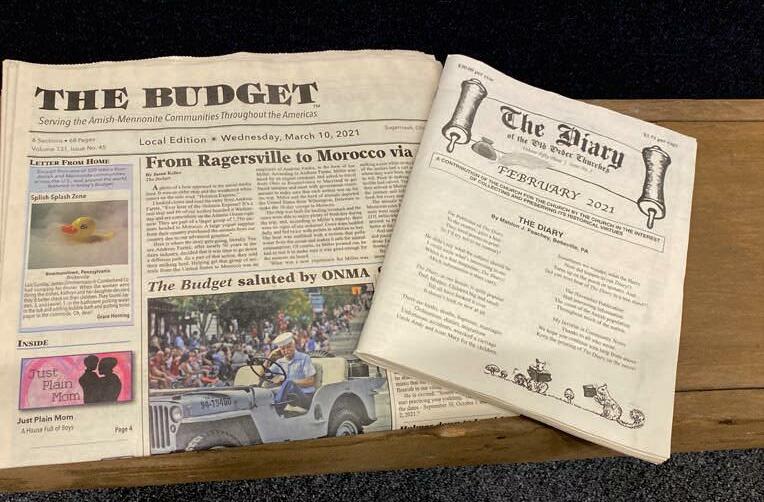

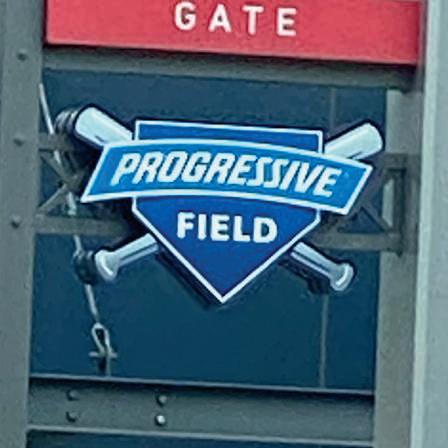

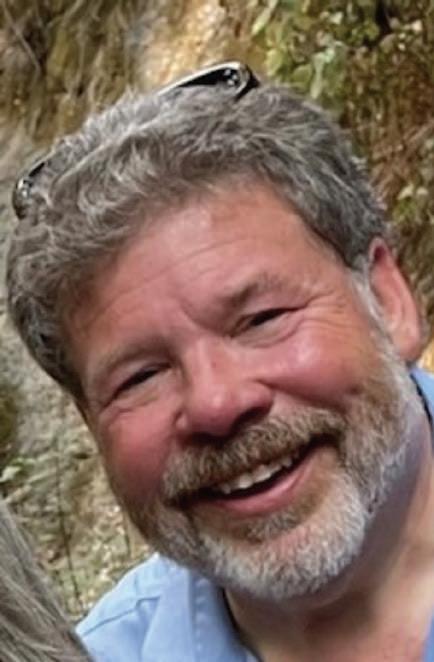

As we left our day in Berlin, I reflected on the range of sights we had seen. From the simplicity and solitude of farmhouses in Holmes County to the vibrant city of Cleveland--home to the Rock and Roll Hall of Fame, Progressive Field, and First Energy Field where major league baseball and NFL football teams play, Ohio offers much more than I first experienced. I would look forward to the next trip…but only after another stop at the Chatham General Store. Those chocolate graham crackers are calling our name.


At First National Bank of Huntsville, we offer a complete slate of financial services including Wealth Management and Trust Services. Our experienced and knowledgeable team managing our Trust Department can help you achieve these goals. Put your Trust in Huntsville’s Only Locally Owned Community Bank and let us help you make resolutions you can keep.
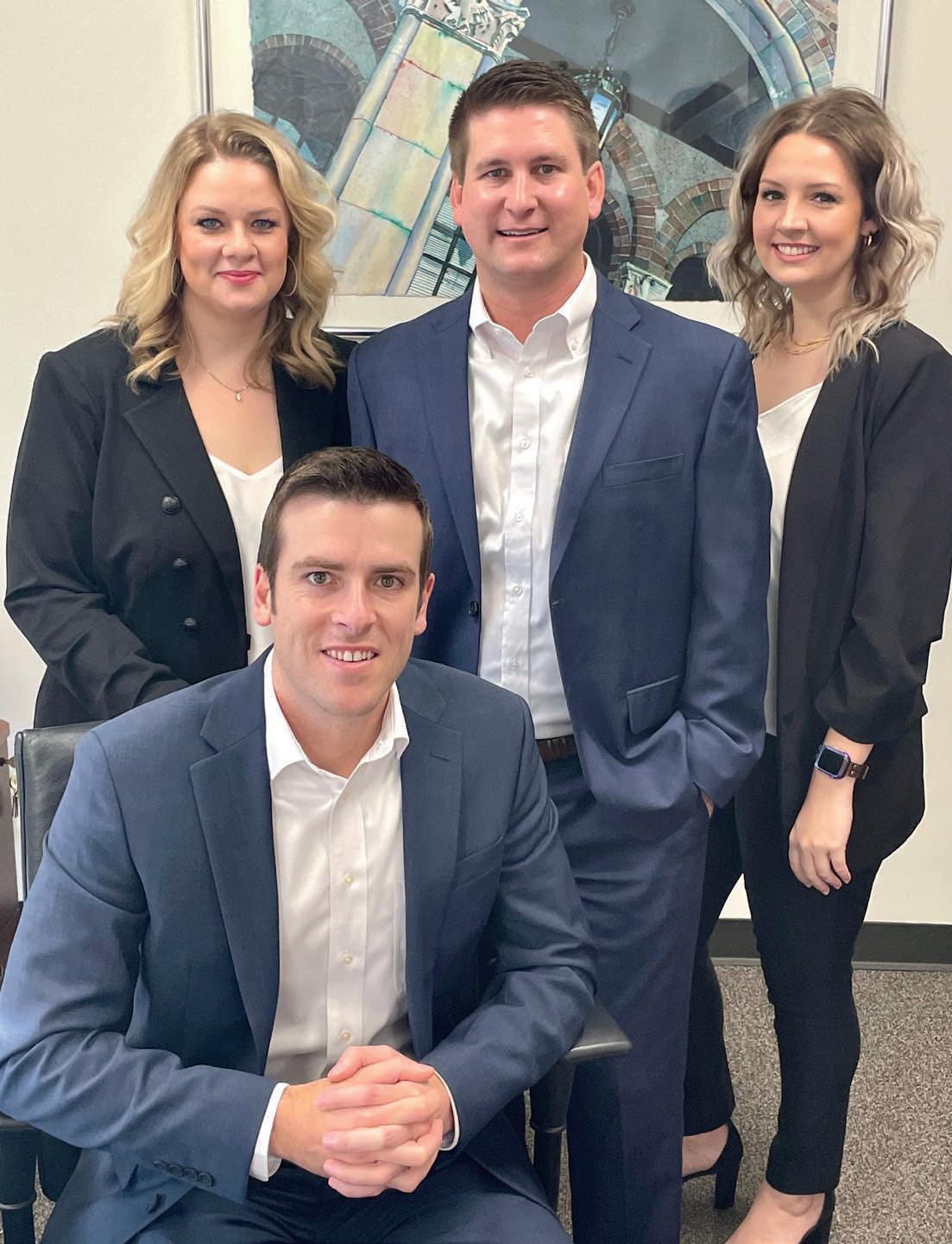


First National Bank of Huntsville Trust Department
Sean Carpenter, Sr. Vice President & Trust Division Manager
Ashton Villarreal, Assistant VP & Trust Operations Manager
Levi Porter, Trust Officer
Maddie Cobler, Operations Assistant
My daughter really changed a lot after becoming a vegan… it’s like I’ve never seen herbivore.
An old farmer writes to his son who is in prison: “Dear Son, this year I won’t be able to plant potatoes, because I can’t dig the field by myself. I know that if you were here, you would have helped me.”


Q: What is Harry Potter’s favorite way of getting down a hill?
A: Walking (JK Rolling)
Grandma once said, “Sometimes you have to hug the people you don’t like…so you know how big to dig the hole in the backyard.”

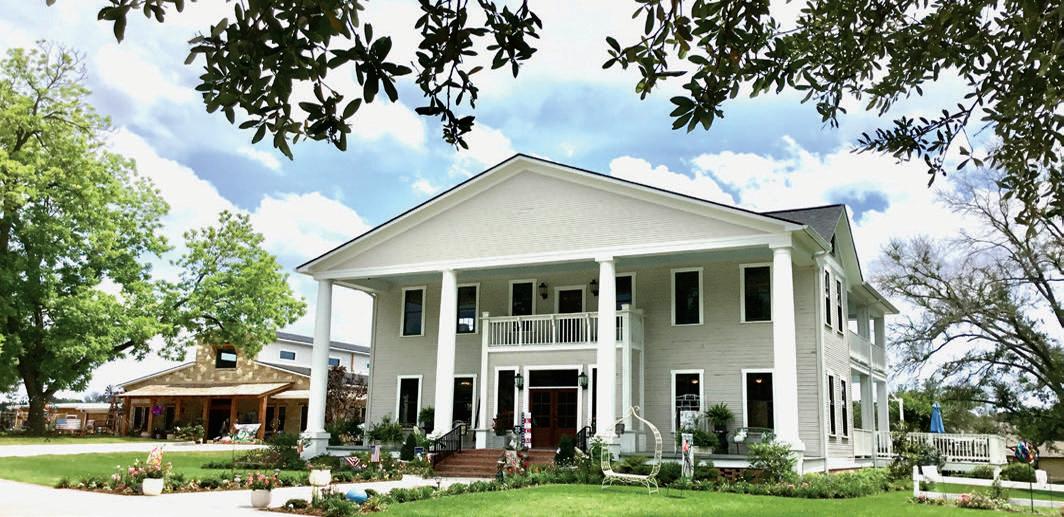
The son writes back: “Dad, don’t even think of digging the field, because that’s where I buried all the money I stole.”

The police read the letter, and the next day the whole field was dug up looking for the money, but nothing was found.

The following day, the son wrote again: “Now plant your potatoes, Dad. It’s the best I can do from here.”

Do dirty teeth really cause overall issues for your pet’s general health? You would think dirty teeth should only affect the mouth. This is true for minor tarter buildup, but as it continues and progresses to become calculus, more bacteria sets in that can potentially wreak havoc for your pet’s overall wellbeing. Poor oral health has been linked to other issues such as diabetes and heart disease.
Dental disease, also known as periodontal disease, can present in several forms. The mildest form is associated with gingivitis (inflammation of the gums), and more severe forms manifest as tooth root abscesses, bone infections of the jaw, and can even lead to fractures of the jaw. While local signs are noticed, there may be many other systemic effects that go unnoticed, until it might be too late.
Since periodontal disease starts under the gumline with plaque (which is made up of bacteria), your pet’s immune system is incited, and an inflammatory response ensues. This is the beginning of gingivitis. The body is trying to do its job to heal itself by producing the inflammatory response to kill the bacteria; however, this response also destroys tissues in the process. In fact, the majority of tissue destruction associated with dental disease is caused by your pet’s own immune system--not by the actual degradation products of the bacteria itself. This can lead to local tissue loss, pain, and infection of surrounding tissue. The more severe the dental disease and the more inflammation present, the more likely it is for bacteria to get into the bloodstream and go to other parts of the body. Reducing the inflammation can have a profound impact on your pet’s health, since it decreases the amount of work the body has to do to fight infection.
Diabetic cases tend to have higher levels of periodontal disease. The two conditions feed on each other in a vicious cycle. Other organs/systems affected are the heart and liver. These two are especially prone to developing inflammation from dental disease. There is evidence that periodontal disease is linked to

cardiopulmonary diseases such as inflammation of the heart valves, according to the World of Small Animal Veterinary Assoc. The risk of endocarditis is about 6 times higher in dogs with stage three periodontal disease compared to those without.

Pain, even if unnoticed, will also resolve. Animals rarely show signs that they are in pain. They may seem like everything is fine as long as they are eating and acting normal. This is a very common incorrect assumption. It can be easy to avoid biting with a painful tooth, since appetite is such a strong drive for animals. Besides, how many pets “inhale” their food without even chewing in the first place? It is obvious they can suffer from oral pathology. We see many owners frequently comment “they are just like a puppy again” after dental care is provided, adding that they regret postponing the care.
Signs of dental troubles don’t always show up in every case. Not every animal displays drooling, a lack of appetite, or swelling and bleeding. Just recently, a case came about that a cat was having intermittent vomiting of some partially digested food (pretty mild case initially mistaken for “hairballs”). A dental was done, and the cat was found to have feline odonclastic resportive lesions (neck lesions, which are pretty common in cats) that was actually causing the problem. After the dental, no more episodes of spitting up.
A solid oral hygiene regimen needs to be maintained to effectively prevent these conditions. This should include a regular teeth cleaning and more thorough evaluation, including dental radiographs and a full tooth-by-tooth exam. The Veterinary Oral Health Council lists foods, treats, chews, toothpastes, sprays, gels, powders, wipes, toothbrushes and water additives that have been scientifically tested and are approved for dogs and cats.
The best way to minimize systemic damage associated with dental disease is to proactively prevent and treat. Taking care of your pet’s oral hygiene is about much more than clean teeth and fresh breath; it’s a health issue.


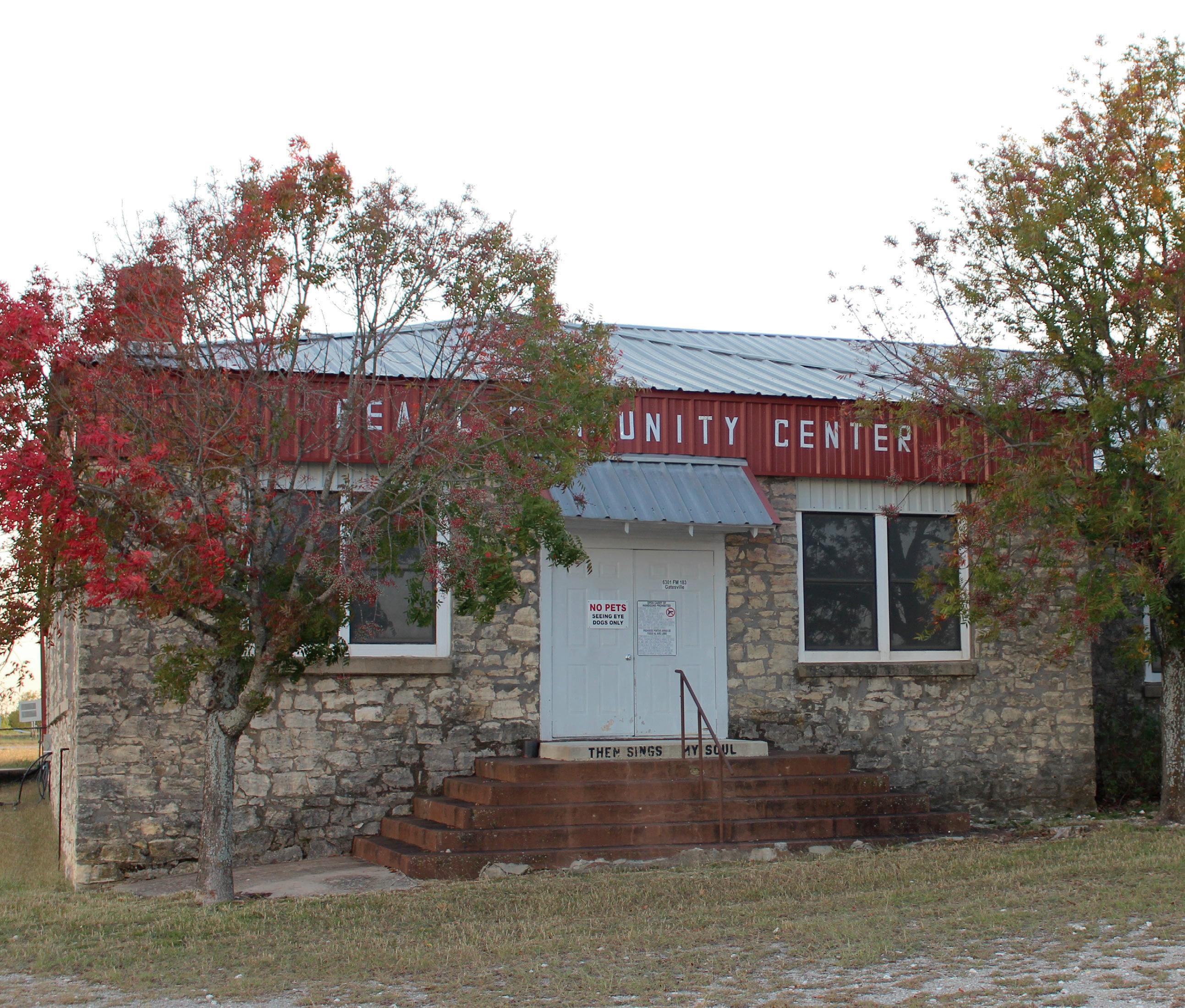

The RVs start arriving on Friday. On Saturday morning, the cars trickle in from around the state, and by afternoon, the parking lot at the Pearl Community Center is packed. It is the weekend of the Pearl Bluegrass Jam, held on the first Saturday of every month (except September, when it’s on the second Saturday).
The bluegrass jam is a 25-year-old tradition in Pearl, a community right on the edge of the Texas Hill Country, about 20 miles from Gatesville. Pearl is so small, it has no post office, traffic lights, gas stations or stores. The nativestone Pearl Community Center—once a fourroom schoolhouse—supplies the heartbeat of the community. In fact, the Pearl Bluegrass
it was damaged by fire. In 1997, it desperately needed repairs, and local residents devised a plan. “Nearly everybody likes music,” says Ronald Medart, a 1955 graduate of Pearl High School and now the president of Pearl Community Center. “October of 1997 was our first one,” he says.

When musicians and fans attended, volunteers recorded their contact information so they could be invited to future jams. Soon, the event began to grow. “I would get telephone calls 24 hours a day from people wanting to come,” Ronald says. The Pearl Community Center added an RV hookup, but it quickly became apparent that one hookup was insufficient.
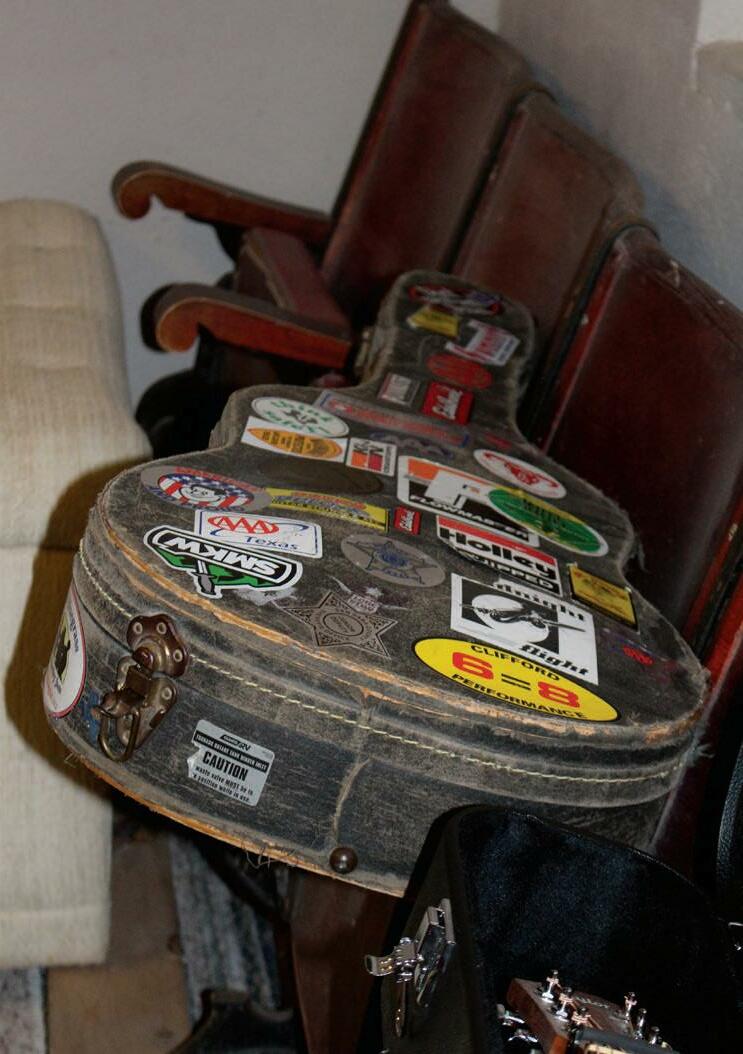

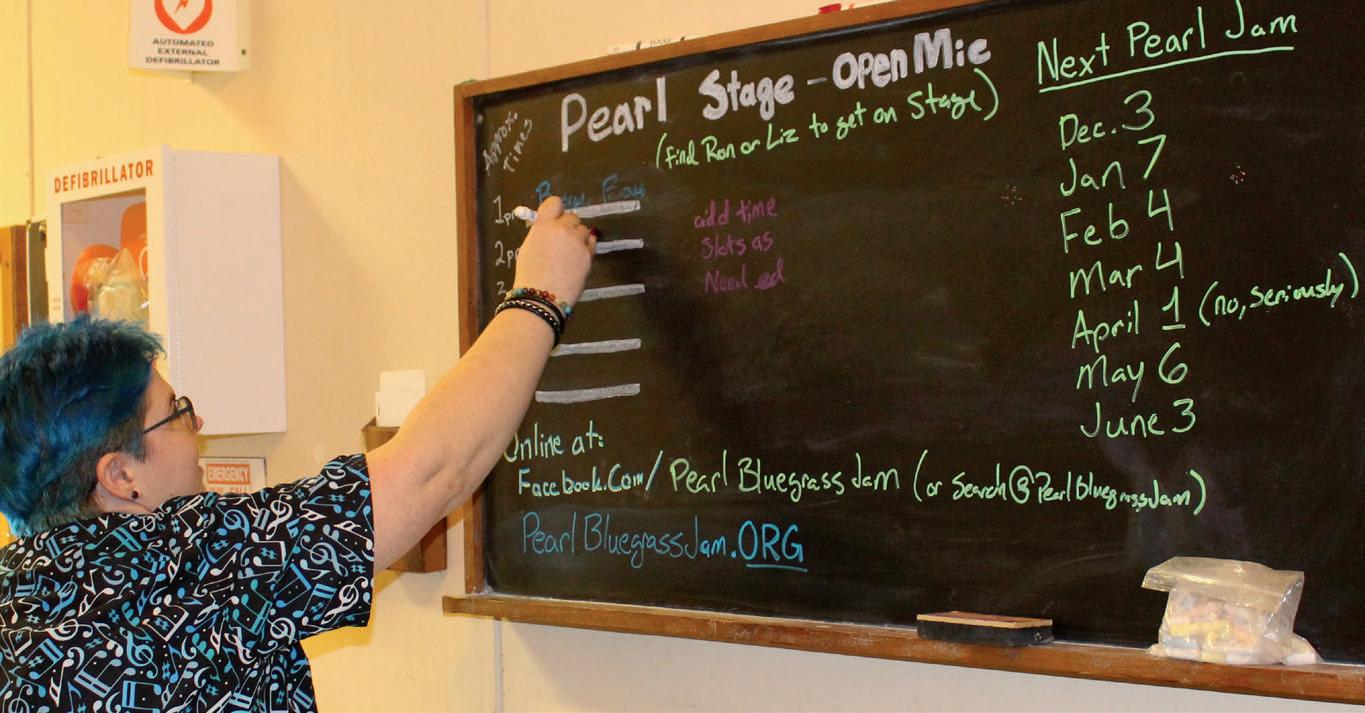
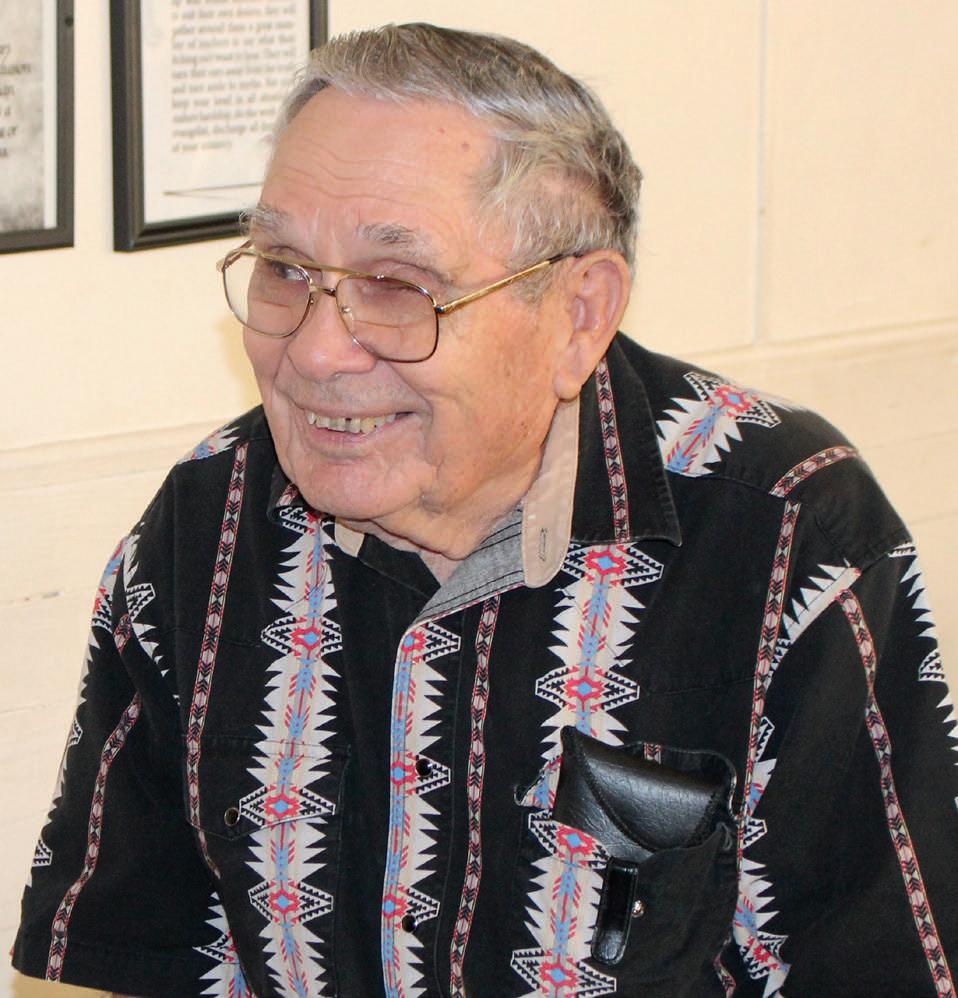

others to play with when they arrive. “I have seen them not even know each other and put on the best performance you have ever seen in your life,” Ronald says. Others, such as House Arrest, come as groups, says Guy Mathews, who lives in Temple. “We used to be the Lone Man Mountain Boys, but most of them have gone on to their reward,” he says. Guy has been attending the Pearl Bluegrass Jam for
even when it’s not a jam weekend.)
Musicians from many parts of Texas, Oklahoma, and New Mexico have performed. “And we had one guy fly up here from California, remember?” says Bettie Blakley, the community center’s treasurer. “They come from everywhere,” Ronald says. “They should have a bus for everybody from Wimberley and Austin.” Once, some people from Germany attended the jam while they were visiting family in the area.
Some of the musicians—playing guitar, banjo, mandolin, violin, stand-up bass and Dobro (an acoustic version of the steel guitar)—find

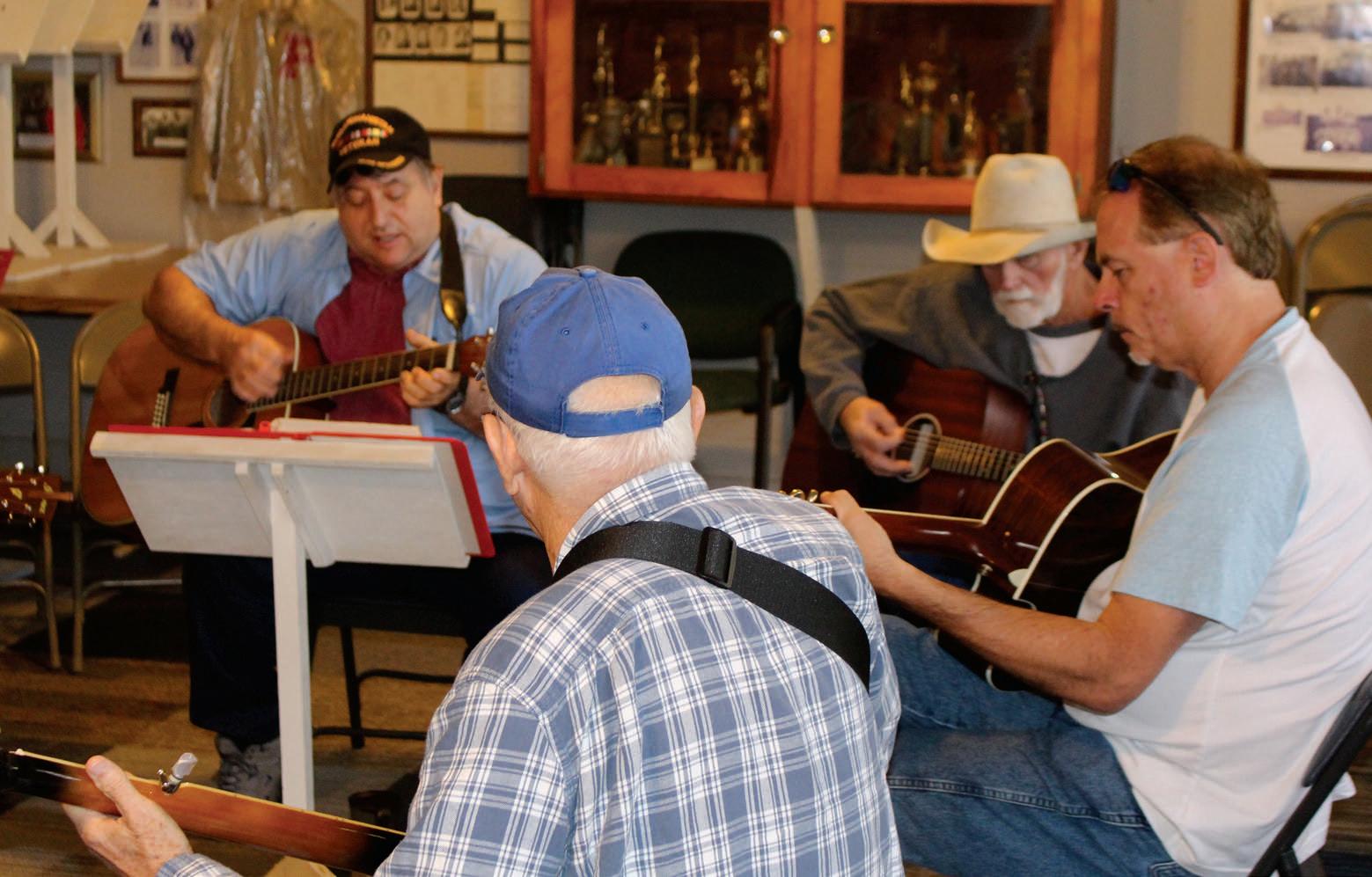
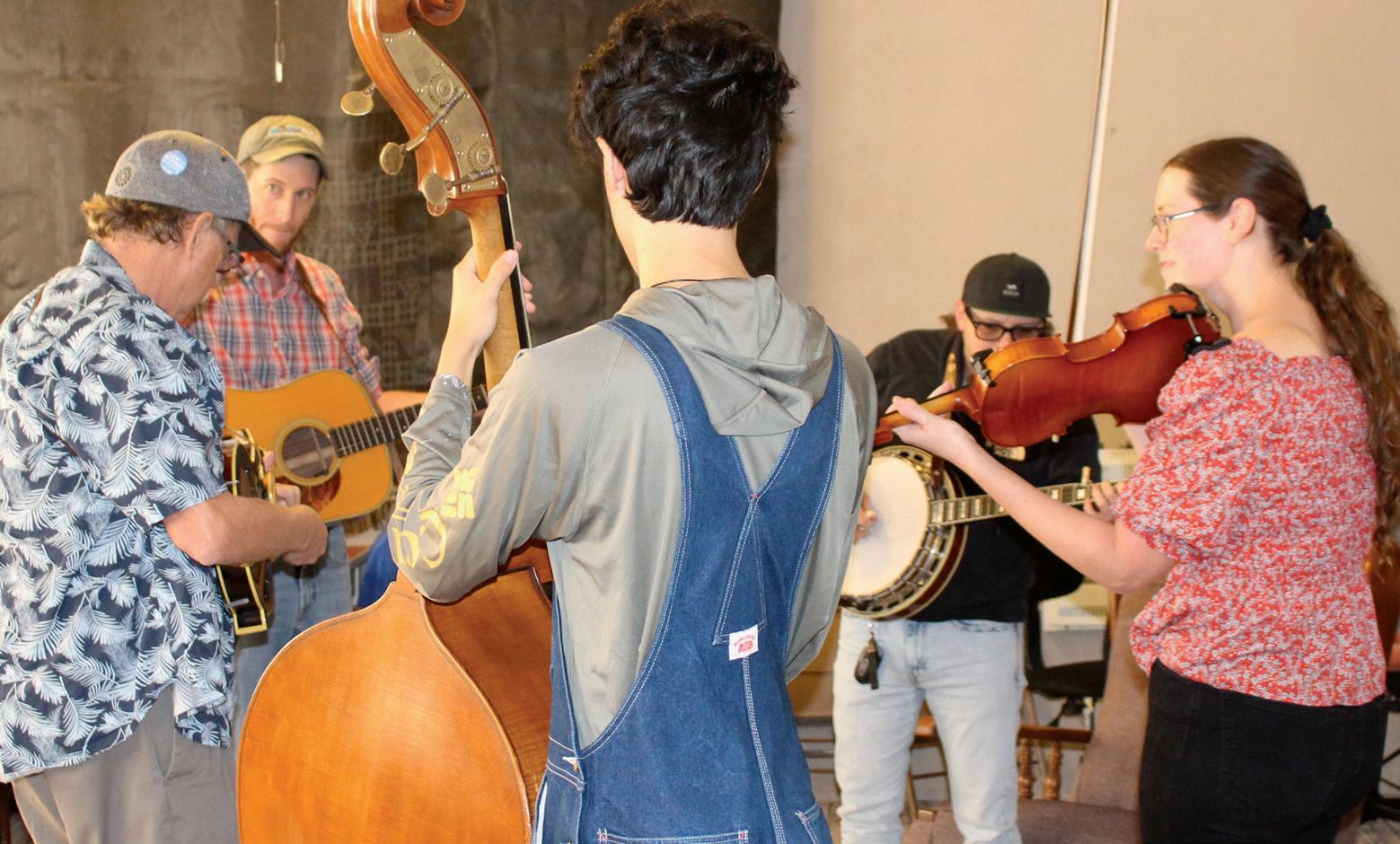

about 20 years. “People knew I liked to play music, and they told me about it. They said, ‘You need to go to Pearl.’ When I first came, it was really just kind of a local-folks thing,” he says, “but now people come from all over.”
auditorium was packed to overflowing. “We finally got to where we would have 300
besides four rooms with musicians, and people listening to them, and under the sheds in fair weather.”
There is no entrance fee to the jam. Money is made from donations, RV hookups, and the sale of food (like pulled pork sandwiches,






chili, beans, cornbread, and pie) and souvenirs (including caps and T-shirts). “The food is always great,” says Guy. “It’s all homemade!” Bettie boasts. The people who make the jam happen each month are all volunteers. “It’s people from everywhere— people who are interested in keeping the bluegrass going,” Bettie says. She and her twin sister, Minnie Wright—two of the 11 graduates of Pearl High School in 1956— volunteer in the kitchen on jam weekends.
“You couldn’t get one person in one hundred miles to tell you what bluegrass is,” Ronald maintains. “We’ve had country western and a lot of gospel. One man used to play Elvis Presley songs.” Most, however, agree that bluegrass music is acoustic, so the Pearl Bluegrass Jam does not allow electrification or amplifiers. Bluegrass musicians are often known as “pickers,” and their
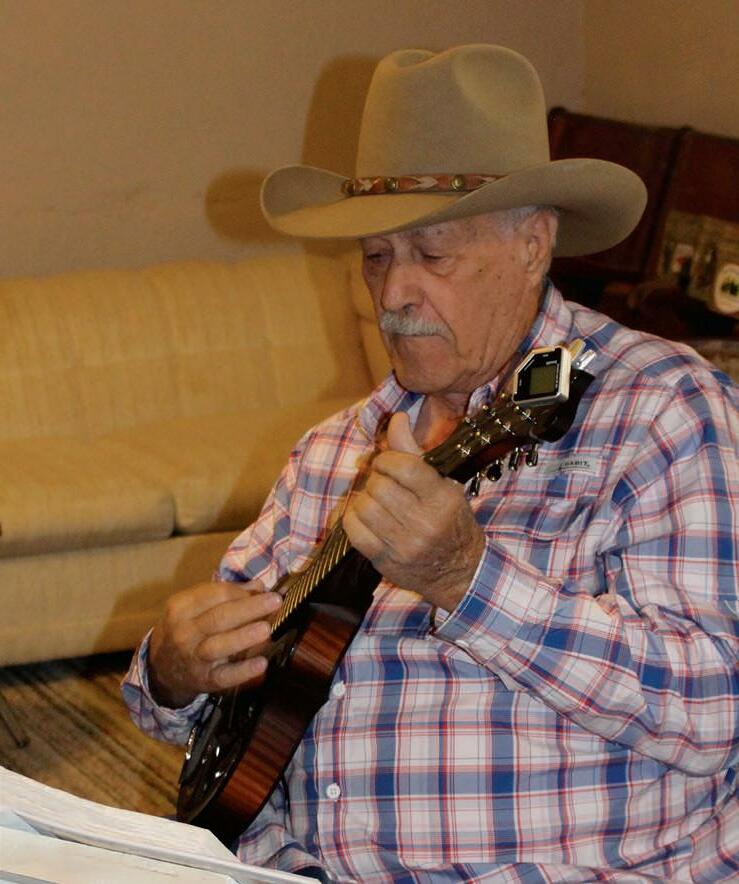

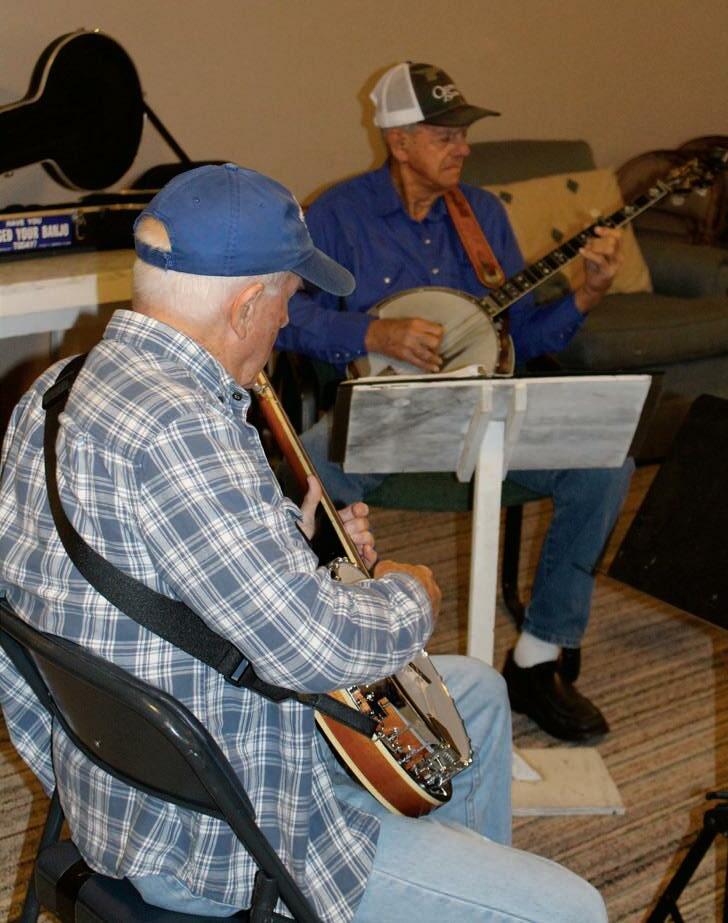
picking is impressive. “Some have played professionally,” he says. “They would rather play here than travel all over the U.S.”
In one jam room, as an impromptu group pauses to retune, another musician approaches. “Do you know ‘Kentucky Girl’


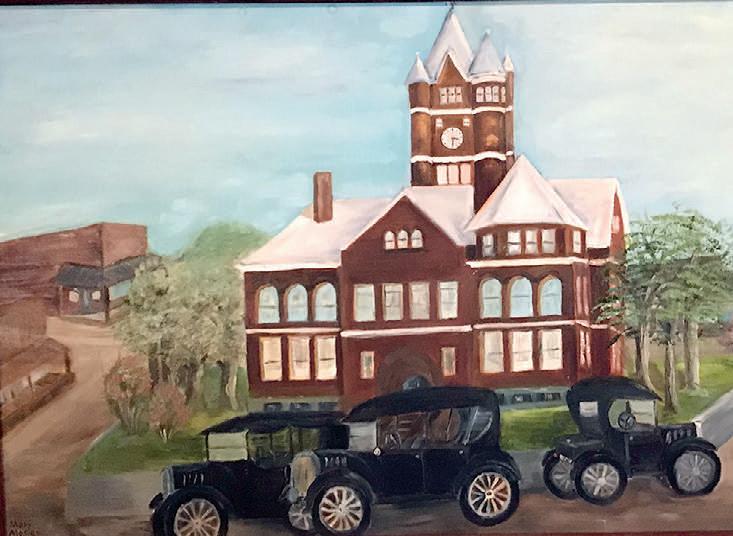


lasts all day.
One jam room features “slow jam,” a hodgepodge of young musicians. “Everybody is here to play and learn and support one another on that journey,” says Chris Ray, the vice-president of Pearl Community Center. “The older ones are great to share with them,” agrees Guy. In one jam room, there are framed photographs of young musicians who have gone on to play professionally.
hang guys, they my head,” he says, laughing. “I was not the musician I thought I was. There are all kinds of levels of skill: beginners, wannabes, and then you’ve got world-class musicians that have played professionally. They don’t do it for the money; they still have that fire deep inside to play. Other bluegrass venues have tried to figure out how Pearl has made it.”

As the day progresses, many attendees enjoy the homemade food. Others browse among the thousands of titles at the adjacent Pearl Book Cottage, a native-stone building that was once a teacherage. Some purchase crafts from local vendors; many engage in animated conversation. Meanwhile, the music never stops. “It has a family-friendly atmosphere,” Chris says. “The music is the biggest draw, but it’s not just the music. There’s the bookstore, and vendors come in. People come to participate, to listen or to shop. There’s something for everybody.”
The small-town atmosphere is contagious, and many people vow to come again next month. Bettie knows why. “There’s no place like Pearl,” she says.
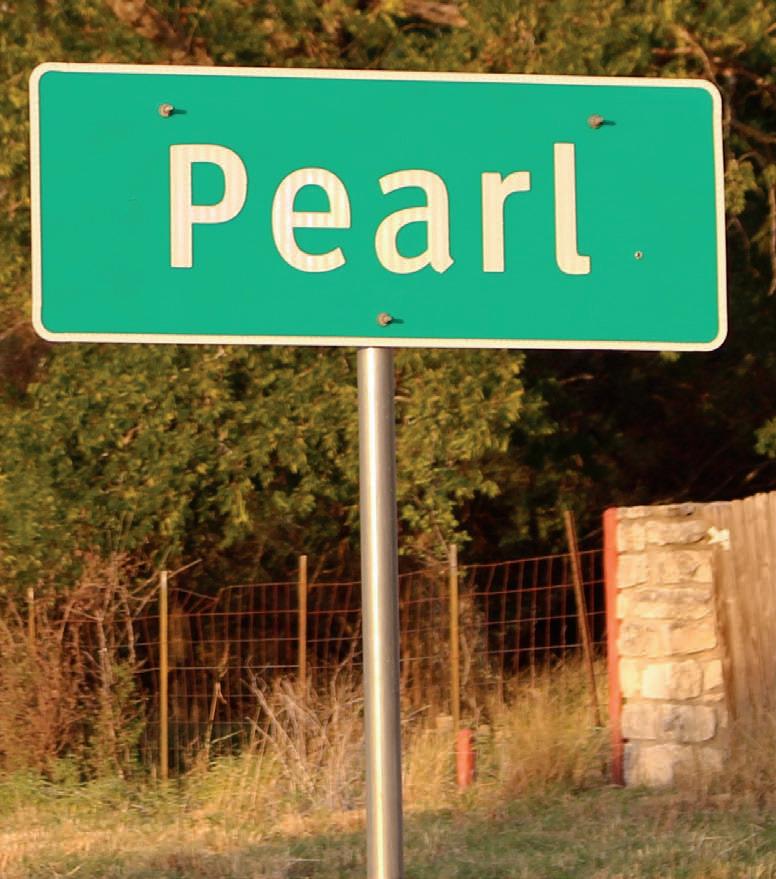

For more information, visit facebook.com/ pearlbluegrassjam.


Each moment in a day has its own value. Morning brings hope, afternoon brings faith, evening brings love and night brings rest. Hope you will have all of them everyday in the coming year.


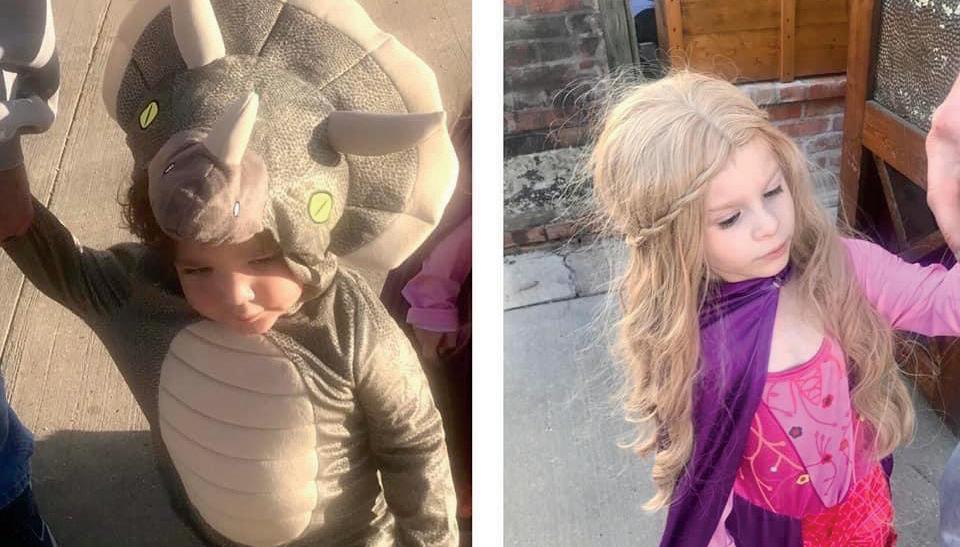
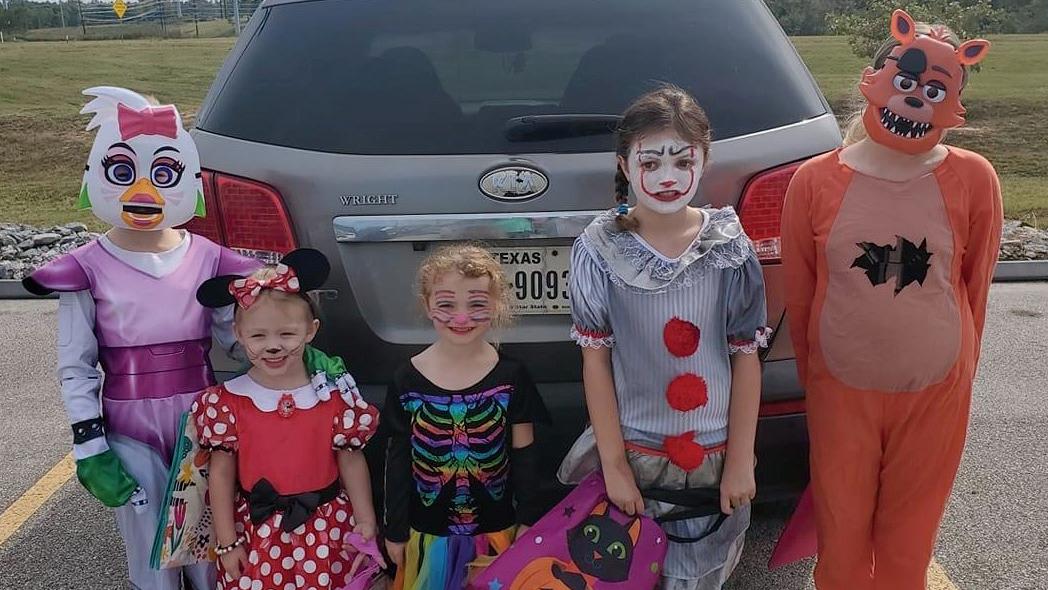


1 What is your grandparent name and does it have a special meaning?




GiGi – They call me GiGi because I’m too cool to be “Grandma”!
2 Number of grandchildren and age range?
4 grands, 3 months to 8 years old
3 Favorite activity with them? Art. It’s my love language, and I want to make sure I share it with the most important people in my life.
4 Advice to other/new grandparents? Savor every moment you have with them.
5 What’s your fondest memory of your grandparents?
I loved getting banana fudge popsicles and jack cookies at the Crossroads Gas Station there at OSR and Hwy 75.
6 What do you hope your grandkids remember about you?
I hope to leave a legacy of faith that gives a firm foundation of love without measure.

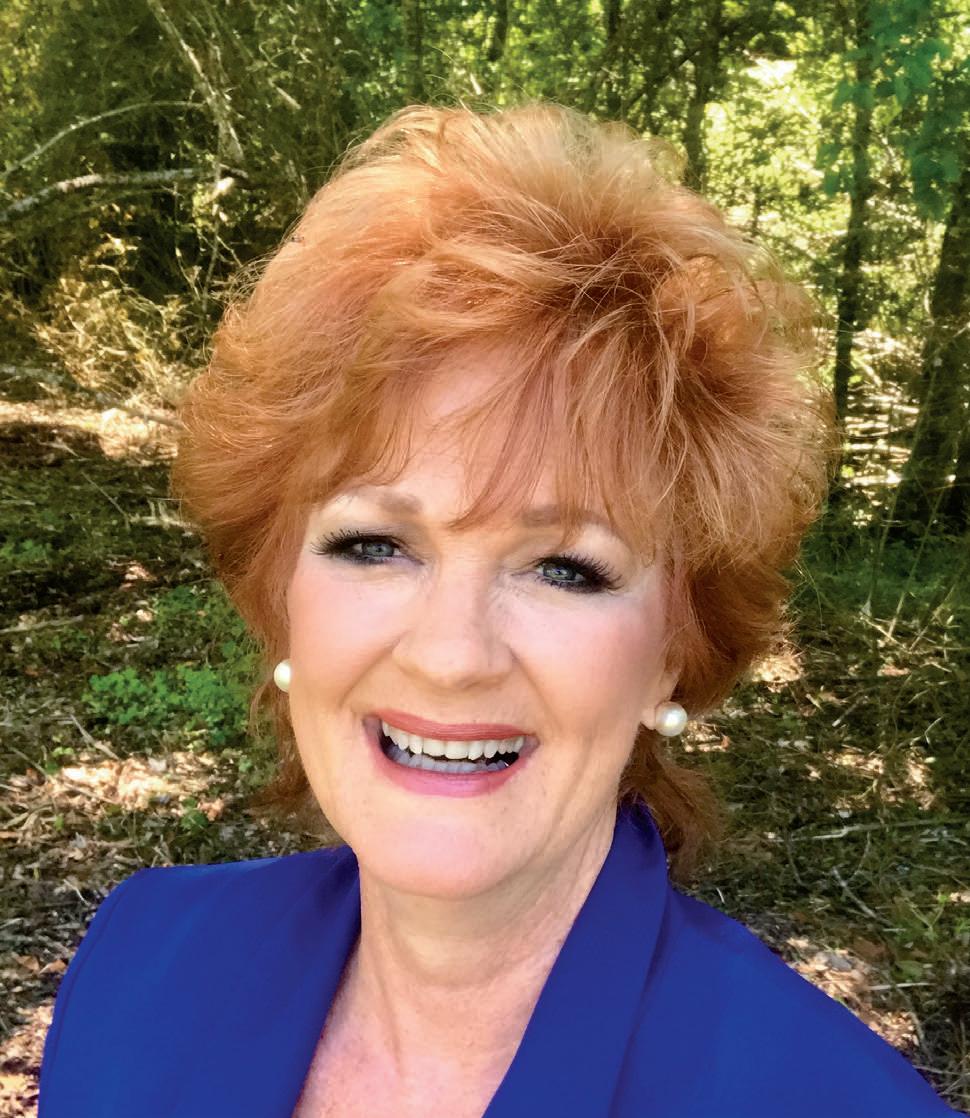


Word games and puzzles aren’t just a source of entertainment. They also bring a sense of accomplishment if you complete a challenging one. Some may argue that no board game collection is complete without Scrabble, and newspapers have included crossword puzzles for decades.
But could word games be a form of exercise for your brain, helping it stay healthy and young by regularly challenging it?
“Studies haven’t shown that word games have any substantial impact on preventing memory lost or dementia, but I definitely recommend word games, puzzles, or other thought-provoking activities over watching TV,” said Dr. Yuvraj Heir, a neurologist at Houston Methodist The Woodlands Hospital. “Anything that challenges your mind or memory is healthy.”
Your brain also benefits from physical exercise While exercising your mind may not have known benefits to your brain health, Heir adds that there are steps you can take between games to help keep your brain young as you age.

“Studies consistently show us that physical activity is incredibly beneficial for the brain,”
Heir said. “It can improve cognition, memory, and sleep, as well as reduce anxiety and depression — all things that promote brain health.”
People who make exercise a habit also have a reduced risk of dementia. In fact, one study found that people who are inactive are almost twice as likely to experience subjective cognitive decline — worsening or more frequent confusion or memory loss — as those who exercise regularly.
Habitual exercise is also known to reduce a person’s risk of stroke, when blood flow to the brain is blocked. Stroke can cause brain damage in just minutes and is one of the leading causes of death in the U.S.
“Your heart supplies your brain with blood, so keeping your brain young also means keeping your heart and blood vessels healthy,” Heir said.
3 expert tips for keeping your brain young
If your goal is to take steps to benefit your brain health, Heir has some specific advice:
• Make exercise a habit – Aim to get about 150 minutes of moderate physical activity per week, but know that even just getting 10 more minutes makes a difference.

• Eat healthy – Minimize processed foods, added sugars, unhealthy fats. Prioritize eating healthy portions of whole foods (vegetables, lean proteins, whole grains, healthy fats).
• Focus on mental health – Strive to keep a positive, optimistic outlook, take steps to reduce unnecessary stress, and don’t ignore the signs of anxiety or depression.


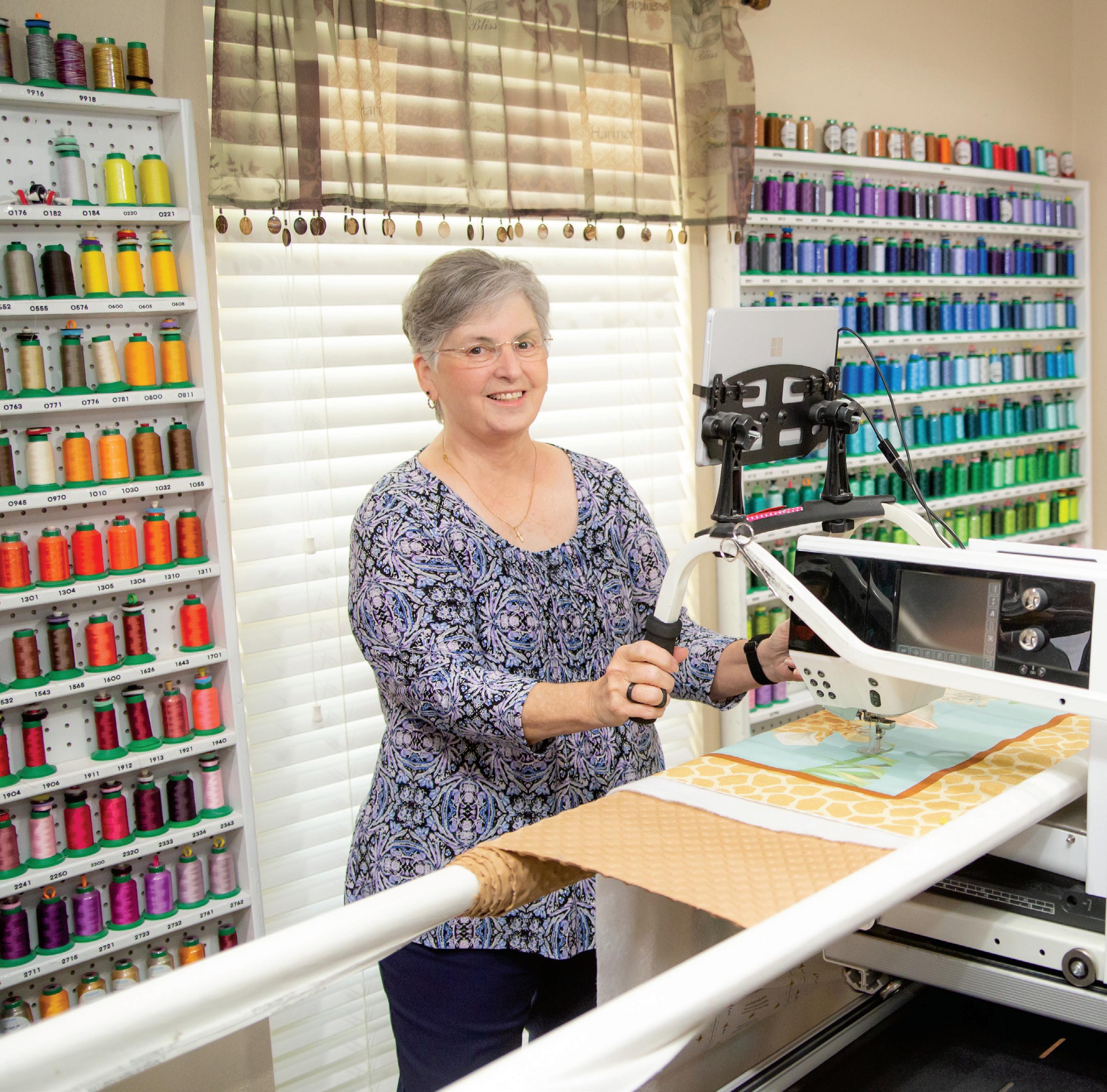
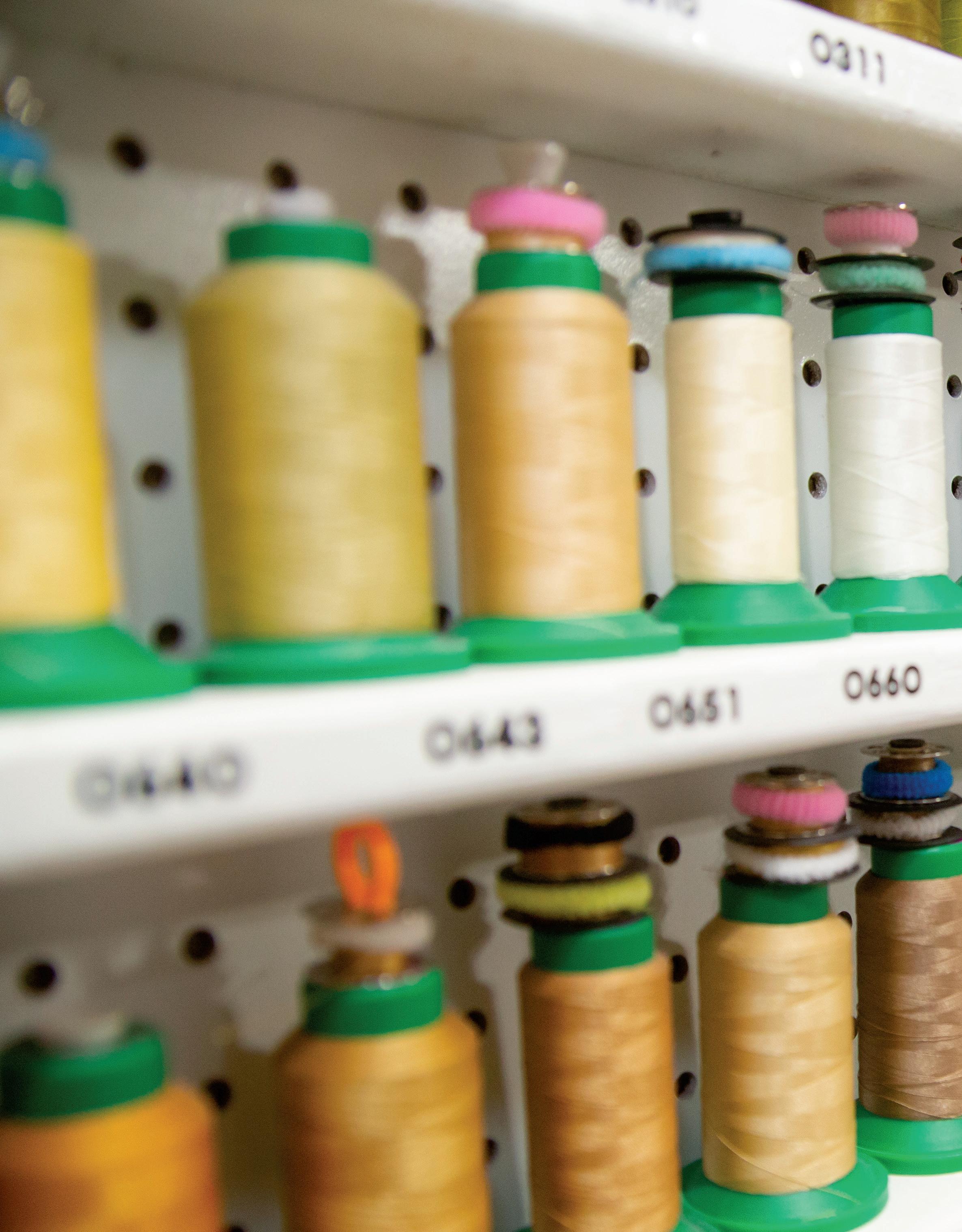 Story by Ruth Fields
Photos by Tom Miller
Story by Ruth Fields
Photos by Tom Miller
From the time she was 12 years old (when her mother’s friend taught her to sew), Nancy Bowen’s life has been measured in stitches. Once a way to make school clothes inexpensively for herself and her sister, Nancy’s sewing ability has blossomed into much more. After retiring from a career as a public-school teacher and counselor, she had more time to sew. Today, she uses her skill and artistry to bring joy to people who need it most.


When Nancy was born, her brother Bill was five; twins Daniel and Denise were one year old. Their father was a member of the U.S. Coast Guard, and the Carraway family lived in Florida, New Jersey, Louisiana and Texas. Money was tight, so when Nancy and Denise were students at La Marque High School, they each got an allowance of just $50 per year for school clothes and shoes. Girls of that era were not allowed to wear pants to school, but Nancy was able to stretch the money by making five dresses for each of them. “We could not have bought 10 dresses,” she says.
Nancy always seemed to have a knack for sewing. She recalls the day her home economics teacher objected when Nancy taught her classmates an easy way to put in a zipper. “My teacher said, “You sew beautifully, and I know you know how to do it, but please let me do it my way.’ I would have been sewing for five or six years then,” Nancy says with a laugh.
Nancy’s sister didn’t take as well to sewing. When Denise took the high school sewing class, she brought her projects home to Nancy. “She would sneak them in her backpack,” Nancy says. “Maybe I shouldn’t have, but I completed them at home, and she took them back in for a grade.”
In 1983, Nancy had been a single mother for several years, struggling to provide for her two children (Clint and Misti) by working three jobs. That year, however, she met Bill Bowen at a church singles event, and her life took a happy turn. After they were married, they moved to Cameron, Texas, and Nancy began to look for a job. “I was either under-qualified or over-qualified,” she says. “Then Bill asked, ‘Why don’t you go back to school?’”
Nancy soon enrolled in classes at Temple Junior College and later graduated from the University of Mary Hardin-Baylor, becoming certified to teach history, business classes, and vocational education.
“I didn’t start teaching until I was 40,” she says.
Nancy was pregnant with her daughter Bethany when she earned her degree, but that did not stop
her. She began taking graduate courses at night and eventually earned her master’s degree, becoming qualified as a school counselor. “I could have taken three more classes to be a licensed professional counselor, but that’s not who I wanted to reach. I wanted to reach the kids in the school,” she says. “When I was in high school, the counselors only had time to help the college-bound students.”
Nancy worked in Cameron schools for 19 years, first as a teacher and later as a high school counselor. She finished her career as a junior high counselor in Tomball. Always observant of her students’ needs, she kept a stash of food, socks, and other needed items in her office. Students quickly learned that Nancy cared about them. “I wanted to build a rapport with the kids,” she says. “I had students from the very poor to the very rich.”

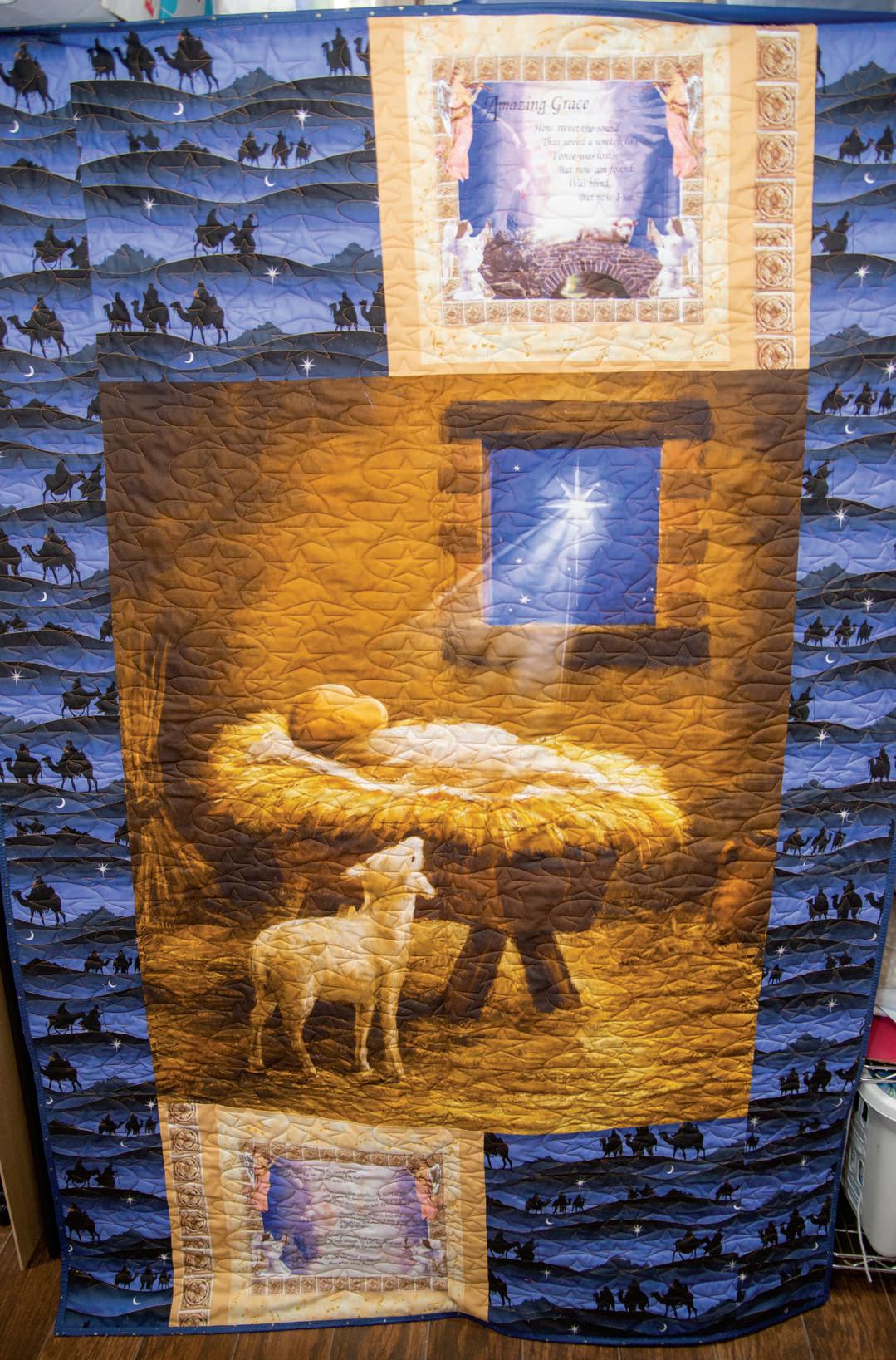






For most of her life, Nancy sewed primarily clothes, but that changed in 2008. When

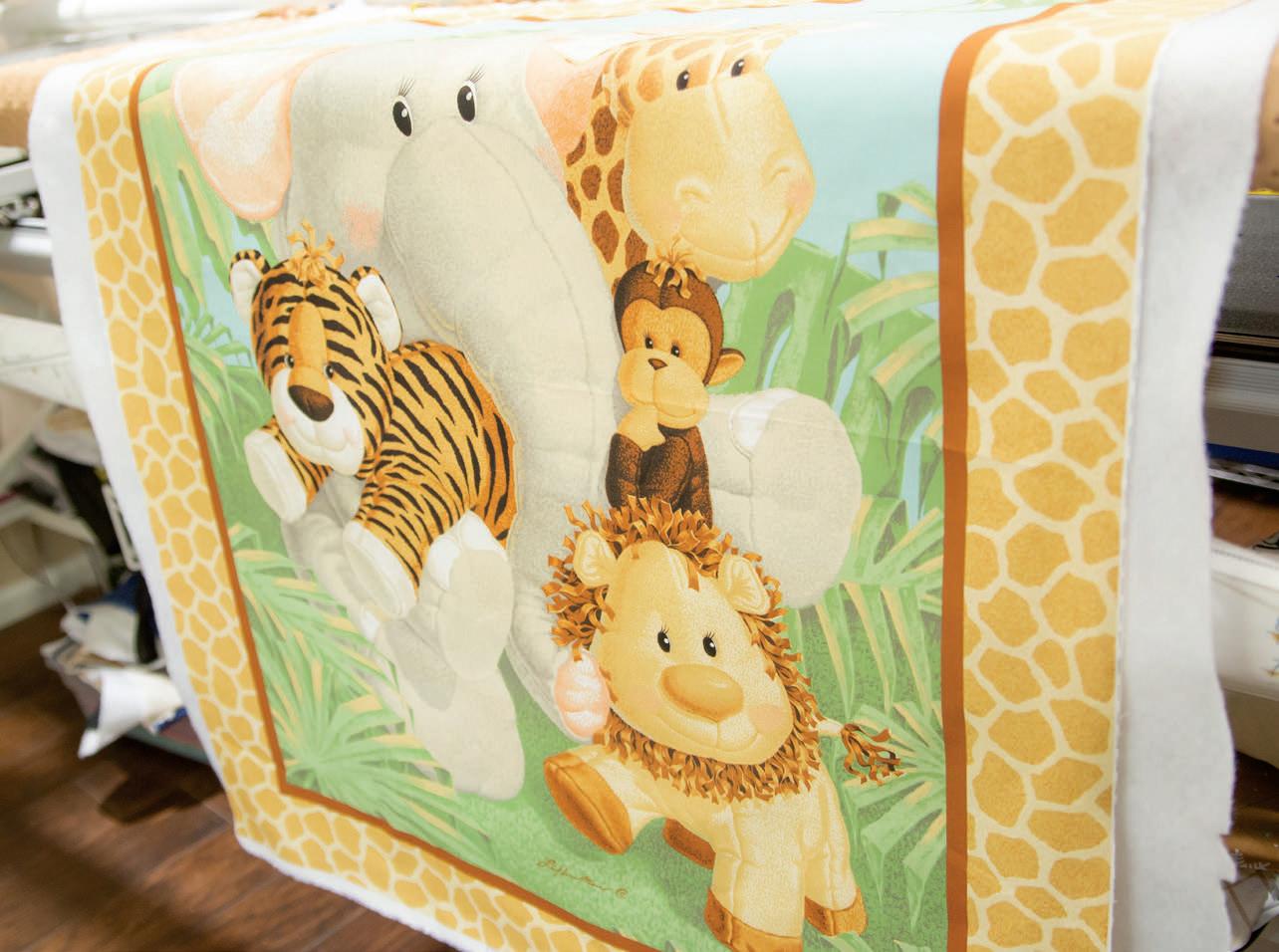
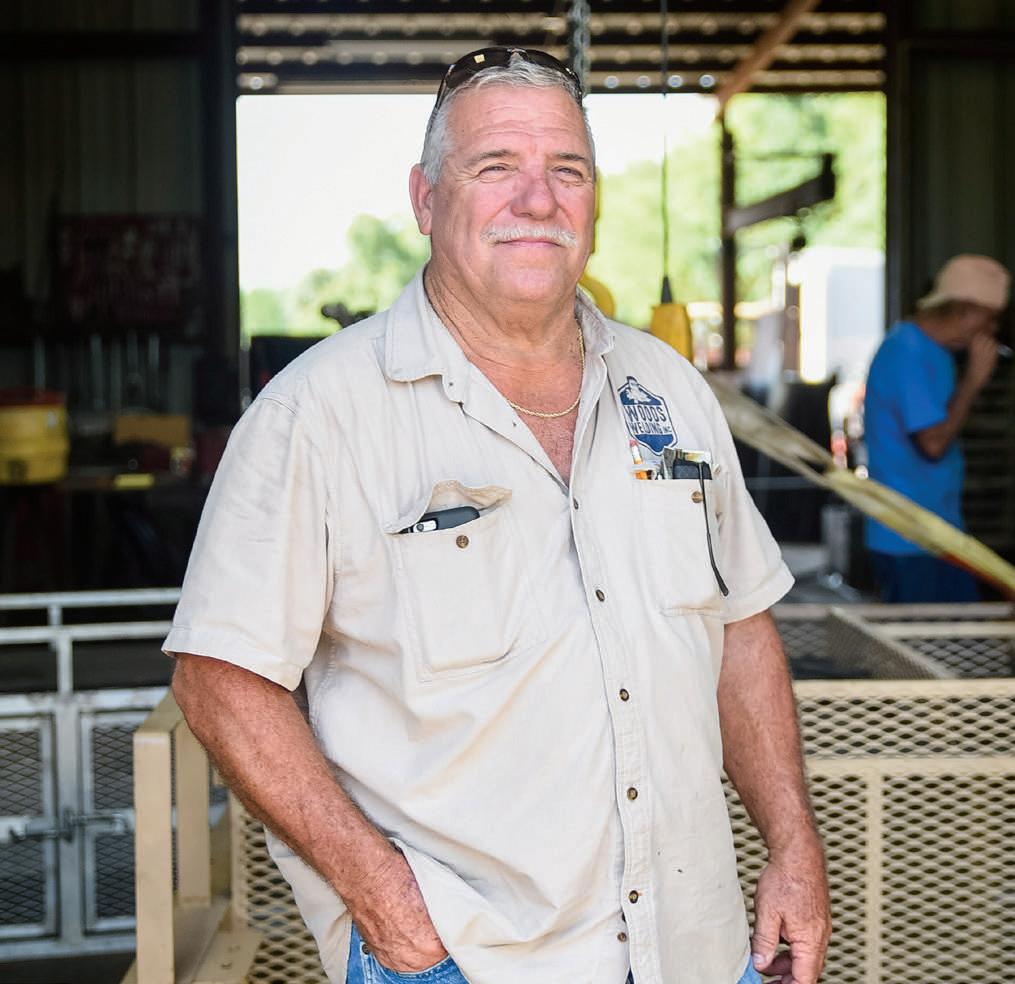
she and Bill went to Fredericksburg to avoid Hurricane Ike, she found a quilt made of 3,000, one-inch squares. “It kind of gave me the


bug,” she says, so she took quilting lessons. Soon she was churning out baby quilts as gifts for friends and for new mothers who received help at Pregnancy Assistance Center North. Several years ago, she was honored to make a T-shirt quilt that was raffled off at a U.S. Coast Guard Academy fundraiser ball. She dedicated the quilt to her father, who served in the Coast Guard during three wars. The raffle winner later wrote to Nancy to compliment her craftsmanship.
A few years ago, Nancy turned her love of quilting into a business. Using her long-arm sewing machine (which is 10 feet long), she quilts other seamstresses’ piecework—a job that is impossible on a standard sewing machine. Meanwhile, she continued to construct her own quilts. She estimates that, including small baby quilts, she has created more than 100 quilts from start to finish.
Twelve of Nancy’s quilts were especially meaningful, both to her and to the women for whom they were made. Several years ago, a friend showed her a unique quilt pattern that utilizes the iconic log cabin design to create a cross in the middle. Not long after, her friend Fran Johnson’s husband, Richard, passed away, and an idea was born.
Nancy asked Fran for five of Richard’s shirts so that she could piece them together and create a quilt. When Nancy completed the project, Fran loved it and hung it in her home to remind her of Richard every day. As other friends and acquaintances lost their husbands, Nancy made 11 more “memory quilts.”
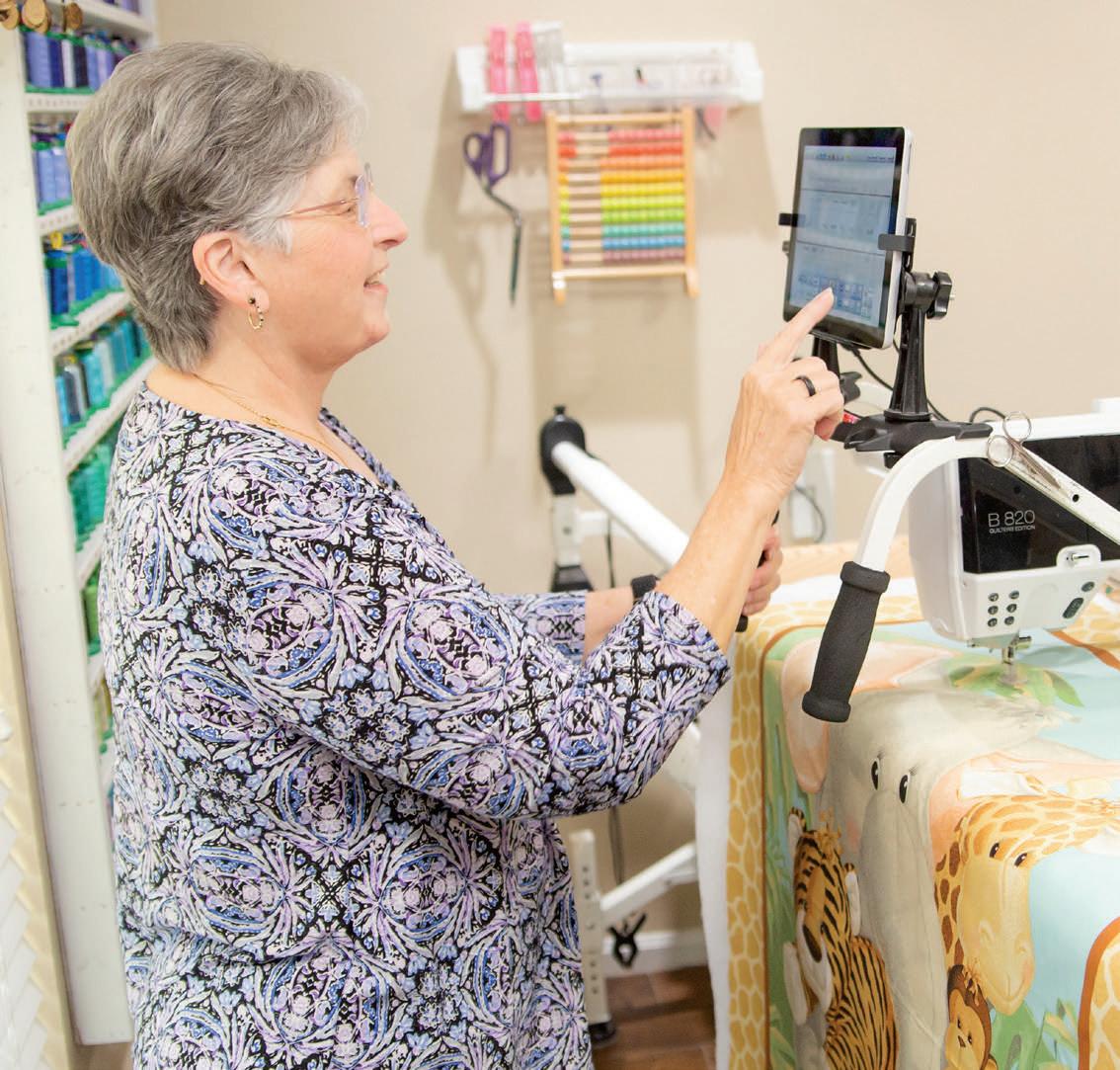

Nancy is thoughtful when she approaches a widow. She doesn’t want to rush them into going through their husbands’ possessions, but neither does she want them to get rid of the shirts. So, she tells them, “When you are ready to deal with it, I will help you pick them out.” She also asks them for a favorite Bible verse to put on a panel on the back of the
"At Texas Generator Solutions, we are true believers in Community is everything. Without the trust in our community there is no business. We are a family owned and operated business here for the long term. There are a lot of different ways to get your name out there...Postcards Magazines has been amazing for our growth. We have received numerous calls and have taken up to 3-4 customer call-ins in one day. We love our Postcards family and the customers we have obtained from this great publication.

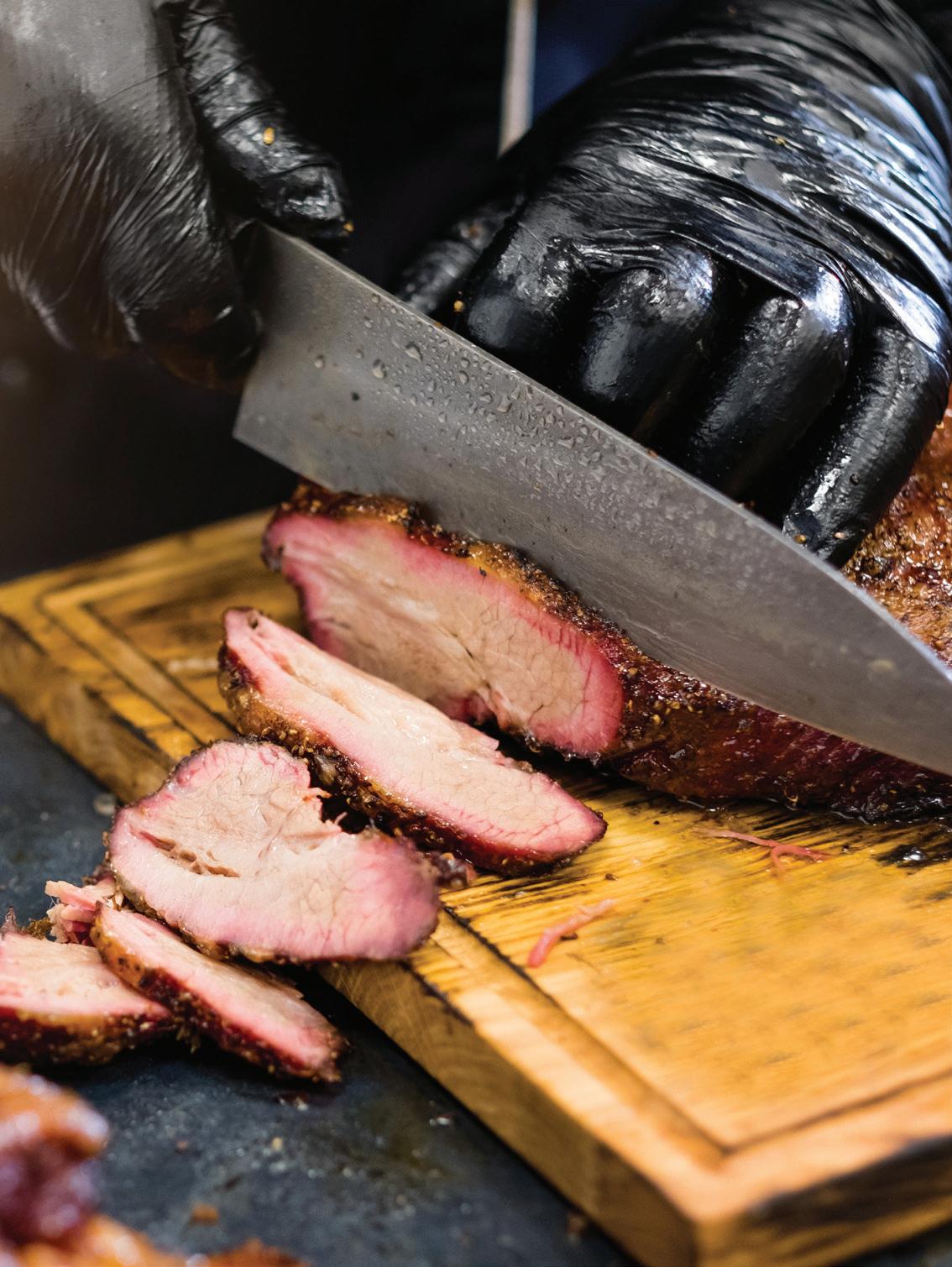
Year
look from quilt. After cutting the shirts into pieces—the most laborious part of the process—Nancy pieces them together on one of her two Bernina sewing machines, and finally quilts them on her long-arm machine. She uses a digitally-downloaded pattern that features crosses, clouds and doves. “I am not smart,” she says. “The machine is smart.”
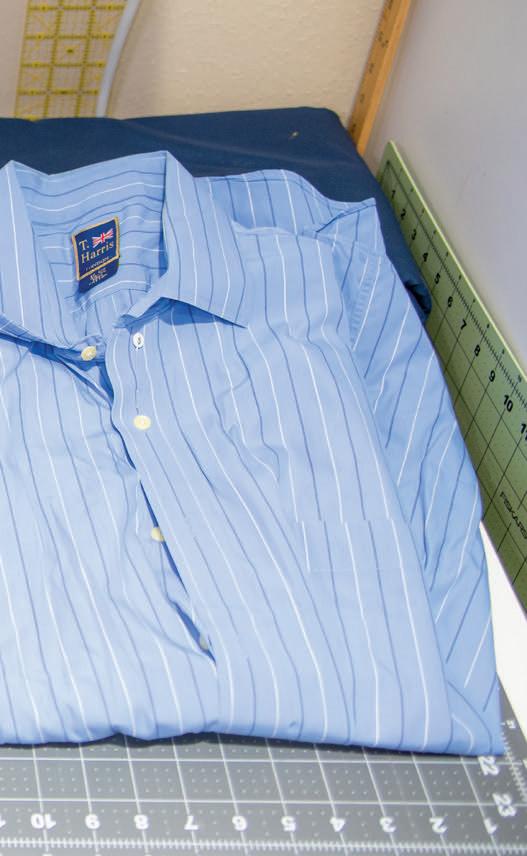
Nancy notes that the quilting alone—not including the cutting and piecing—takes hours. “It takes 20 minutes to quilt a row, and that’s with it being automatic,” she says, “and there are 16 rows.” Nancy, however, doesn’t keep up with the hours it takes to create a memory quilt. “I just get such a blessing from doing it. I don’t consider it work.”
It is emotional when Nancy presents a completed quilt to a recipient. “There are lots of tears, not only from the widow, but from me,” she says. “I have not had the easiest life, but nobody does. God picked me up every time. This is something I can do for God and for that person who is hurting so badly. This is something I can do that maybe somebody else
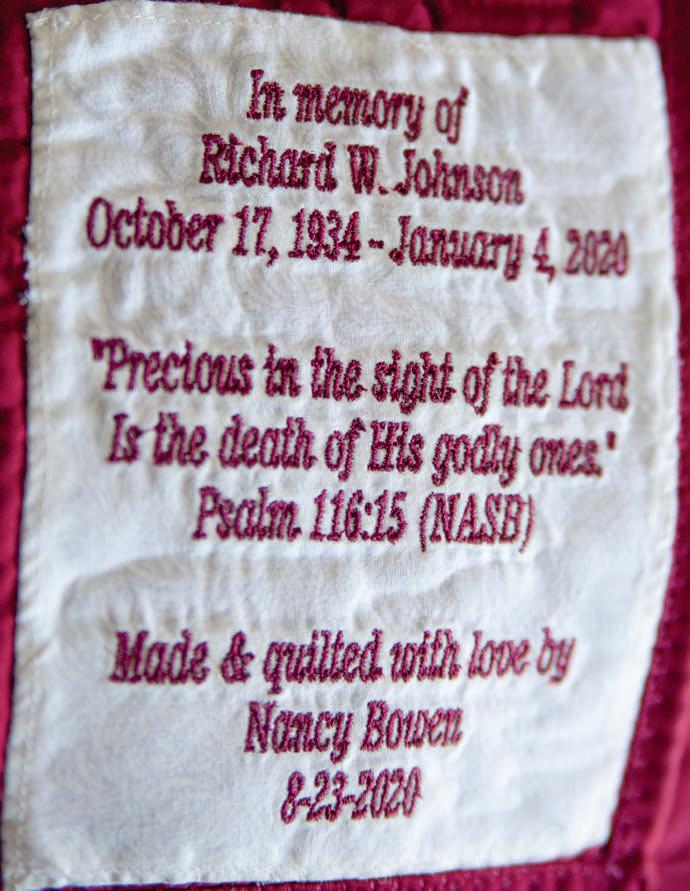
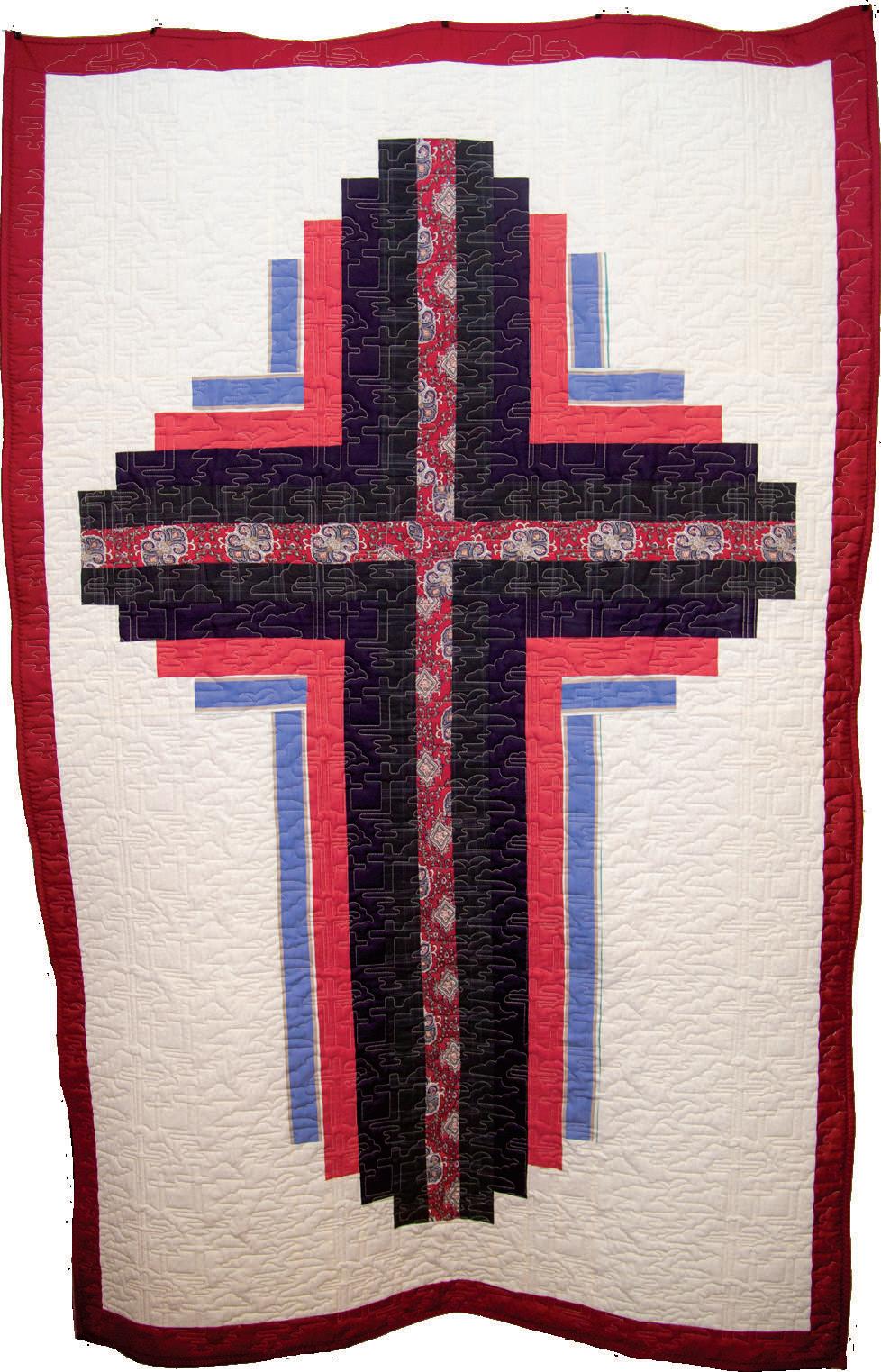
can’t. God gave me an opportunity to bless somebody. This is my ministry.”


Word has gotten around that Nancy is a gifted seamstress. She is a longtime member of West Conroe Baptist Church, which holds a city-wide mission event every summer called Cross Conroe. A few years ago, the church created a sewing team, and Nancy became the coordinator, coaching the church’s seamstresses to construct drawstring backpacks for homeless people. The “blessing bags” are filled with water, snacks, socks and other needed items. At Cross Conroe 2022 alone, the sewing team constructed 150 bags.
Nancy’s sewing has overtaken two rooms of her home, but it seems only appropriate for someone who has spent so much of her life sewing for others. “There are very few days I don’t sew,” she says. “I’ve never lost my love of taking a flat piece of material and making something out of it.”
For more information, email Nancy at nancybowen51@gmail.com.
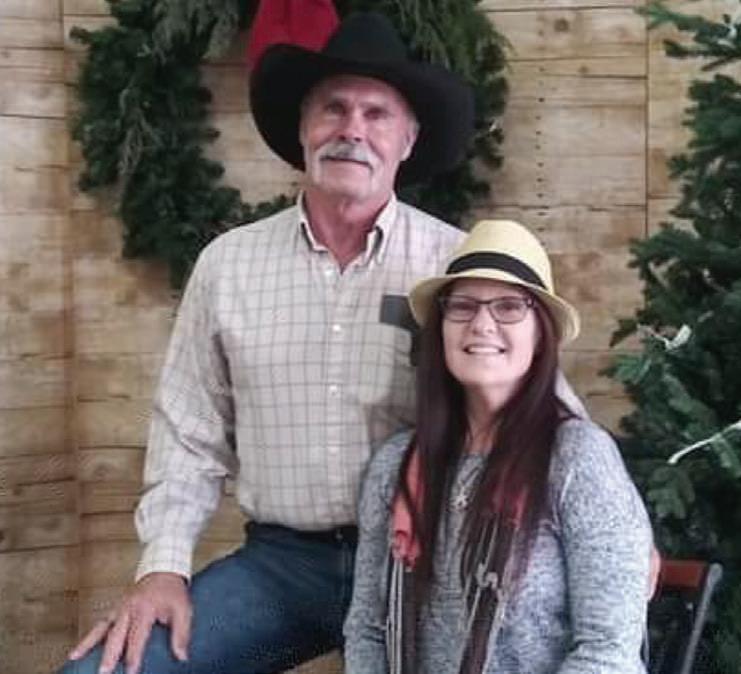
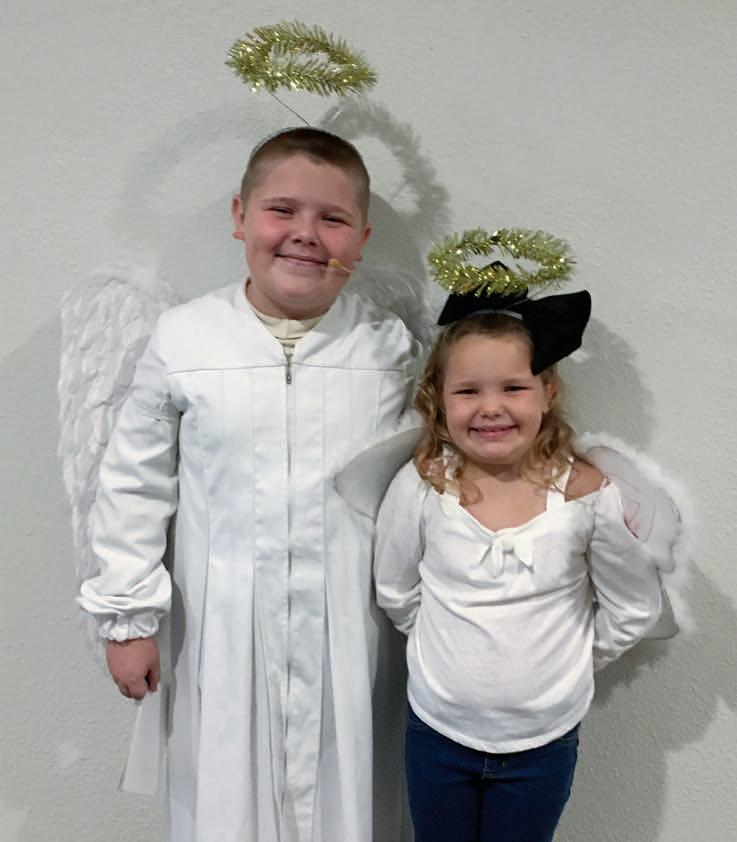
Join nearly 20 million travelers on the world’s highest-rated travel planner for trip and itinerary organization!



As soon as you book a flight, hotel, rental car, or other travel plan, simply forward it to plans@tripit.com. It will be automatically added to your comprehensive itinerary. Seamlessly sync travel plans with your calendar or share them with anyone you choose.

• No more frantic searches for flight info or hotel confirmation number. Find them in a flash with TripIt, even when you’re offline. Access this info hands free with Siri shortcuts!

• Upload PDFs, photos, boarding passes, and more to your itinerary, so you can track everything in one place.
• Plot out your entire trip on Google Maps or Apple Maps.
• Quickly pull up transportation options and driving direction between two points.






• Easily locate the closest restaurants, parking, ATMs, and more.

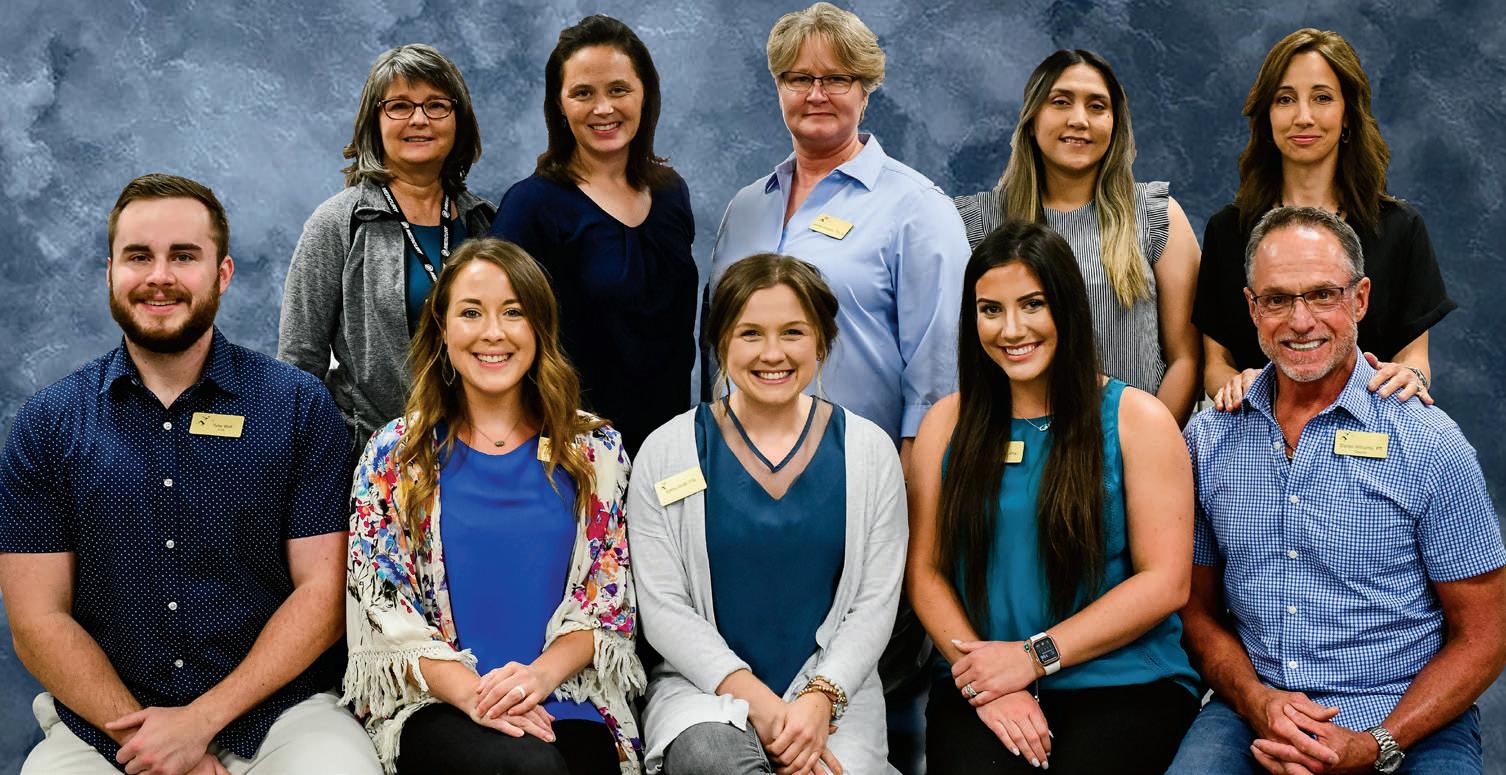
My five-year-old told me she can’t help me clean up her toys because she’s tired from all the work she does at school.
When I asked her what she meant by work,” she answered, “They’re always making us write our names.”
“I was playing birdsongs to help him relax. ” (My kid, after putting headphones on our cat.)
My eight-year-old sister gave our grandmother a wish list. It included gymnastics clothes, a slime box, a robot to help her colour, pajamas, bath bombs, and $15,000.
Watching football with my 11-year-old daughter is fun. When I get frustrated with my team, she’ll ask calming questions like, “Daddy, do you really think you can do better than the players?”

“I


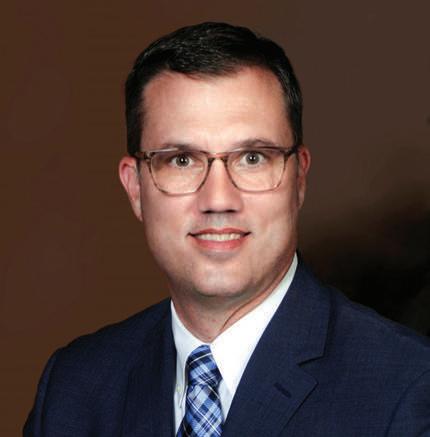
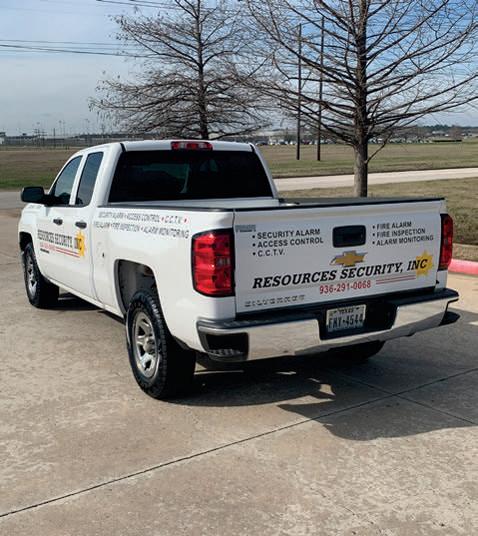
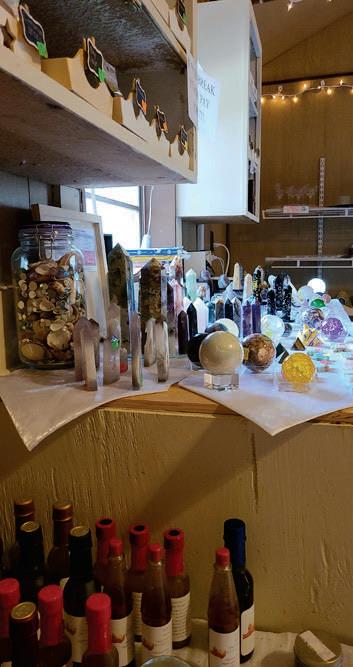
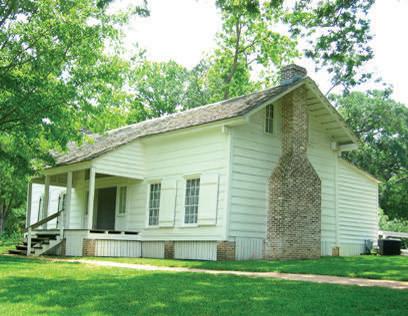


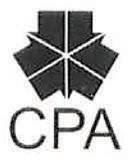










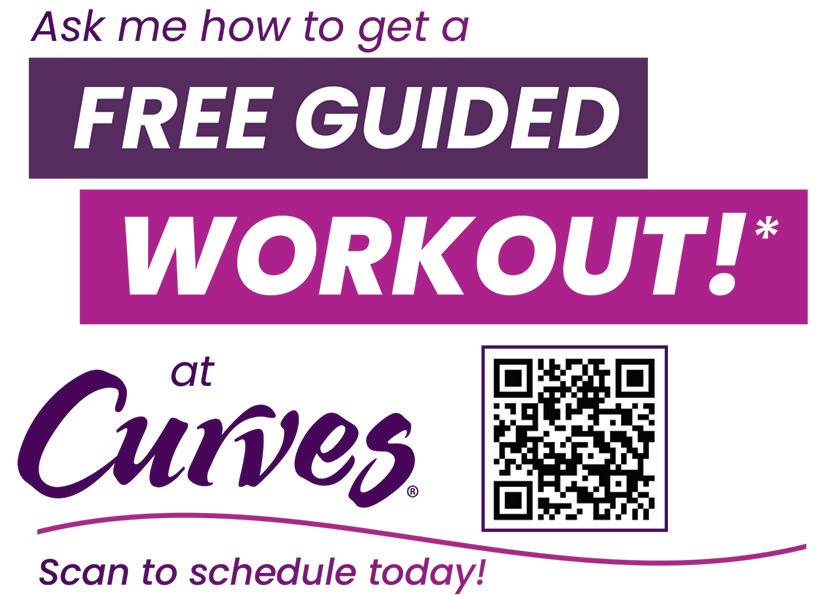


Mia Vazquez celebrating her 15th birthday Quinceañera! She is the daughter of Victor & Norma Vazquez.


Congratulations to Jimmy and Judi Harding on celebrating their 50th wedding anniversary!

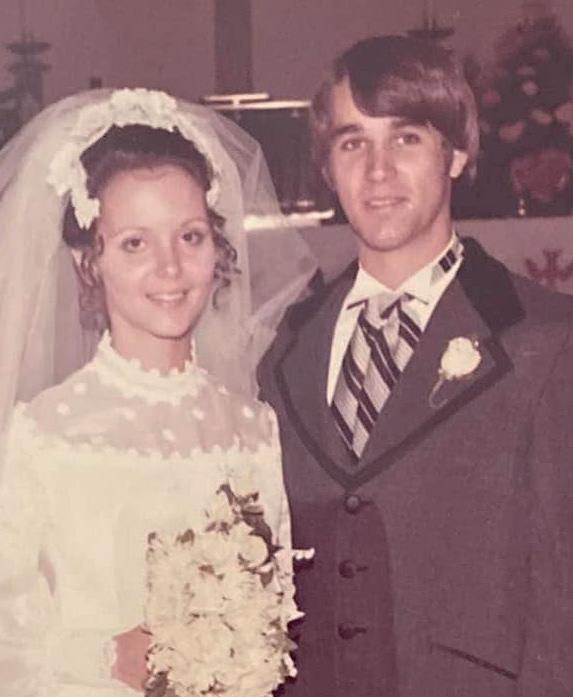
Favorite Music/Artist: Billie Eilish

Favorite Food: Tamales
Favorite Quote: “For I know the plans I have for you, declares the Lord, plans to prosper you and not harm you, plans to give you hope and a future.” – Jeremiah 29:11
Rubi is a senior at Huntsville High School and is the daughter of Catalina Huizar and Juan Gonzalez. Her activities include band, student council, Business Professionals of America, National English Honor Society, National Technical Honor Society, and National Spanish Honor Society. Following graduation, Rubi plans to attend Sam Houston State University, major in education and Spanish, and become a Spanish teacher. She believes, “Take responsibility for your world.”
Heather has been passionate about being a hairstylist since she was a young girl. She stated that she loved doing fun hairstyles growing up. Her skills and passion grew in cosmetology school while learning the art of hair. In the salon, Heather loves doing color, highlights, and balayage. There is nothing more rewarding than seeing someone’s confidence grow with a new hair transformation said Heather.
"I enjoy learning and practicing new hair techniques and keeping up with the trends."
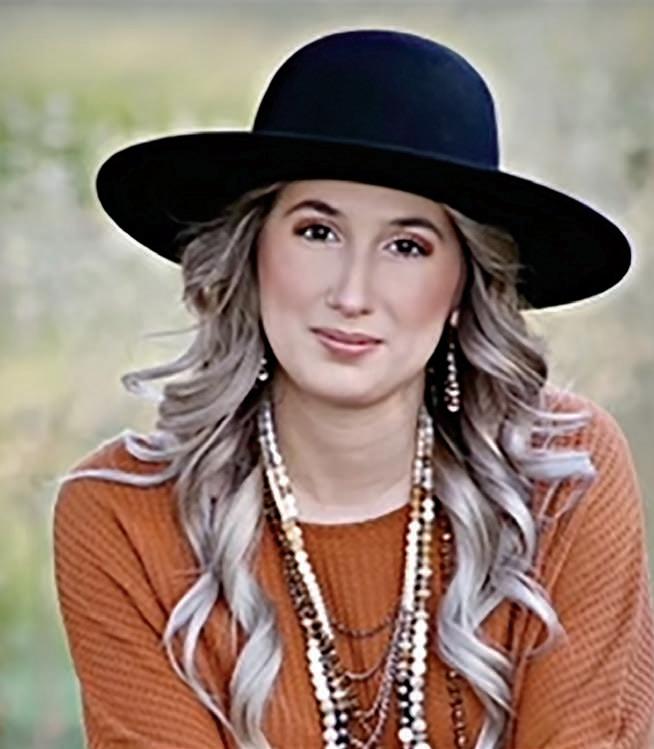
Favorite Movie: Edward Scissorhands
Favorite Music/Artist: Alternative Rock

Favorite Food: Buttered Shrimp
Favorite Quote: “It’s not based on what you achieve in life; it’s all about the virtues you hold.” –Girl from Nowhere

Makayla is a senior at Huntsville High School and is the daughter of Gregoria Salazar-Buster and Todd Buster. Following graduation, Makayla plans to continue working on her art career. She wants to become a fashion designer and develop and sell her own clothing line. She believes, “Live for yourself, not for others. Satisfaction won’t come with the restraint of your wants and needs. Do not let anyone else dictate your life choices (though guidance may be valued and accepted).
"I will never stop learning in this industry. I look forward to building my skills and clientele."


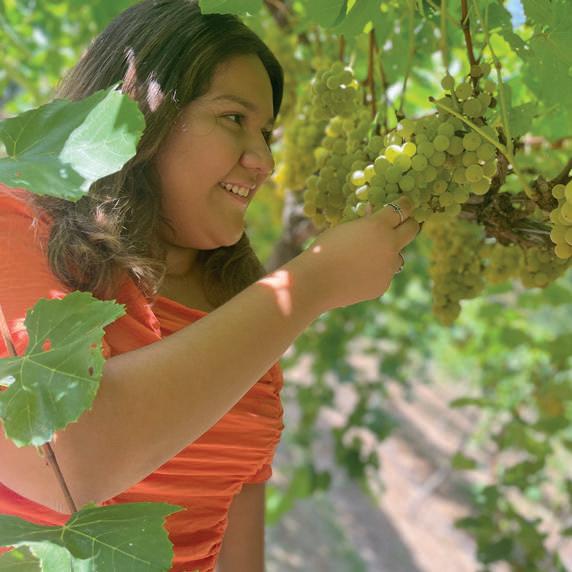
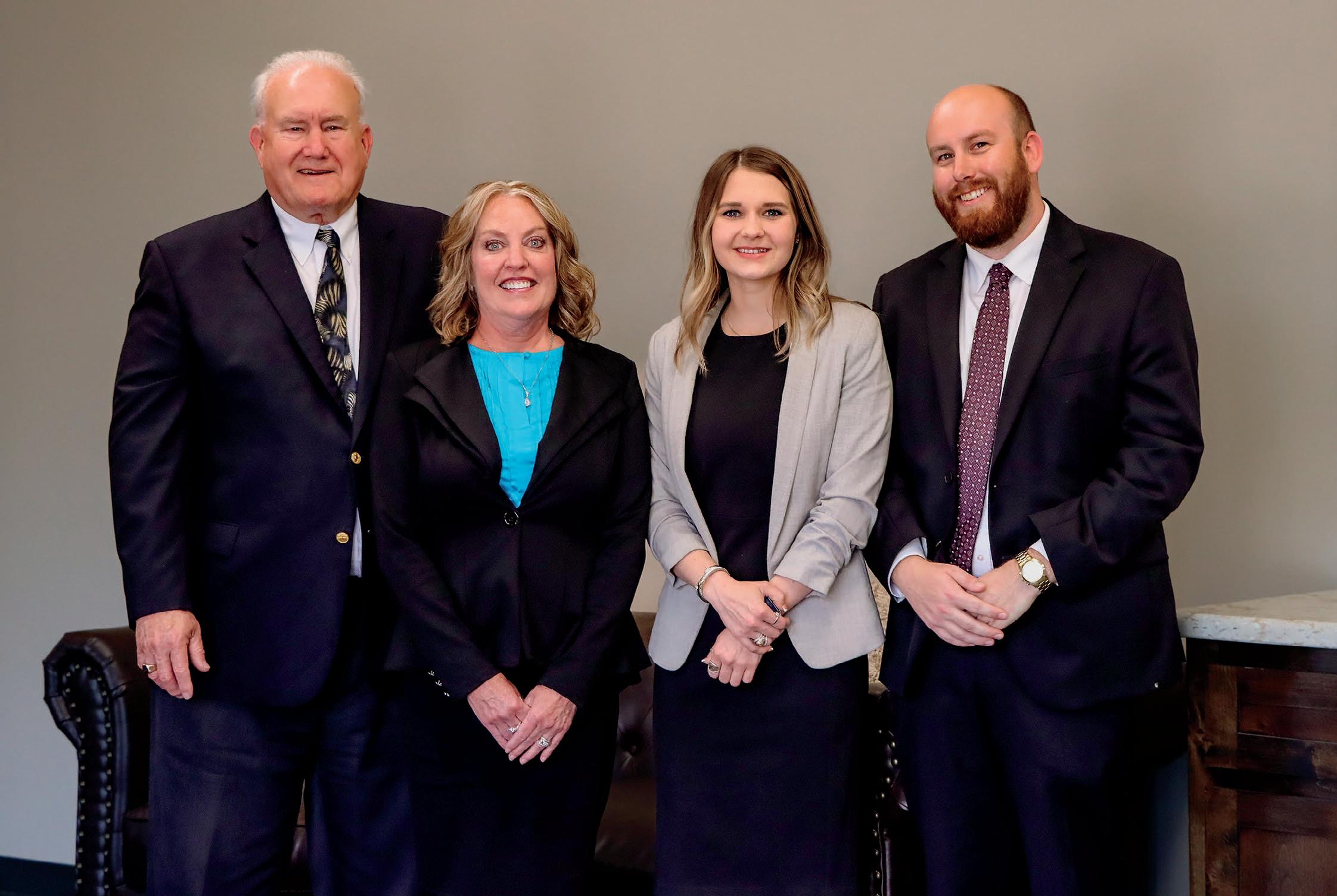
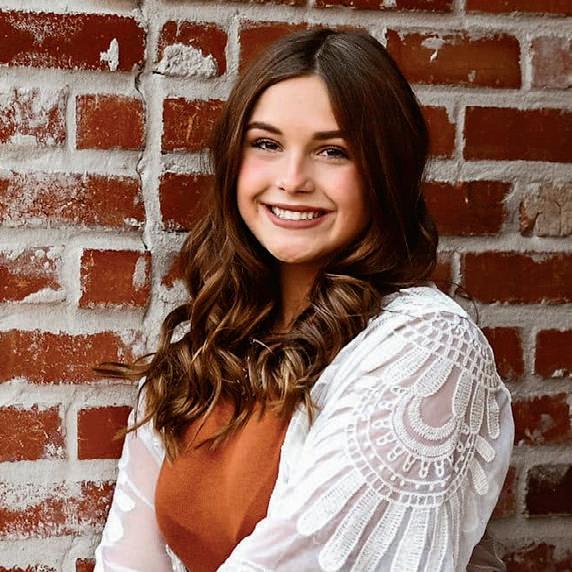
Favorite
Favorite Music/Artist: Kendrick Lamar
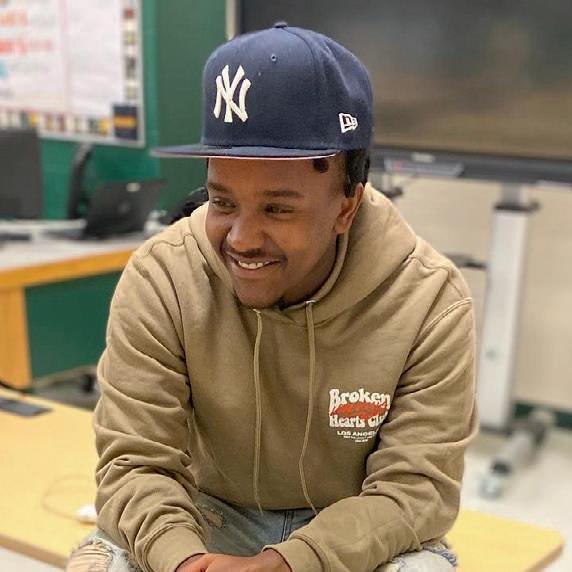
Favorite Food: Birria Tacos
Favorite Quote: “I always knew looking back at the times I cried I would laugh, but I never knew looking back at the times I laughed would make me cry.”
Barnabus is a senior at Huntsville High School and is the son of Monica Githinji and Peter Mwangi. His activities include National Technical Honor Society, Mu Alpha Theta, Technology Club, and audio/visual technician for church. Following graduation, Barnabus plans to attend SHSU, Texas Tech, or Texas A&M to study computer engineering. He believes, “Students should live life with the passion to succeed and be happy with themselves. I take a lot of time to reflect on what I’m doing with career, education, and just my mental state.”
Favorite Music/Artist: Country/Cody Johnson
Favorite Food: Sushi/Chinese
Favorite Quote: “For God so loved the world that he gave his one and only Son, that whoever believes in him shall not perish but have eternal life. “John 3:16
Natalyn is a senior at Trinity High School and is the daughter of Brittany Jordan and the late Aaron Jordan. Her activities include softball, cheerleading, HOSA, student council, FBLA, and senior Beta Club. Following graduation, Natalyn plans to attend Sam Houston State University to become a registered nurse certified in pediatrics. She wants to help save lives in honor of her father. She believes, “To be the best, never give up.”

Ingredients

6 oz frozen puff pastry
1 slice bacon, cut in half 8 oz ground beef salt and black pepper to taste cayenne pepper to taste ½ oz sharp Cheddar cheese
1 large egg Directions
Step 1: Place bacon in a large cold skillet and cook over medium-high heat, turning occasionally, until evenly browned, about 10 minutes. Drain bacon slices on paper towels. Drain bacon fat and wipe the pan, but do not clean completely.
Step 2: Shape ground beef into a patty that is about 1 inch thick by 4 1/4 inches in diameter. Season well with salt, pepper, and cayenne. Sear seasoned burger on high in the skillet for 2 minutes per side. Move the burger to a plate and transfer into a refrigerator to cool.
Step 3: Remove a sheet of puff pastry from the freezer. Roll the pastry to 1/8 inch thick. Cut out a 5 1/4 to 5 1/2 inch round circle of dough for the bottom. Cut out a 7 1/4 to 7 1/2-inch round circle of dough for the top. Place the dough on a sheet pan, and put in the freezer until firm.
Step 4: Cut a small hole into the middle of the top piece (to function as a vent), and lightly score the surface of the pastry with the tip of a knife, but do not cut all the way through. Place the top piece in the fridge to keep cold.
Step 5: Take the bottom pastry on the pan from the freezer and top with burger, bacon, and cheese. Beat egg with 1 teaspoon water in a small bowl and brush the edges with the egg wash. Place the top pastry piece over the fillings. As dough warms and softens, press the top edges into the bottom piece edges and seal tightly. The bottom edge of dough can be rolled up and over top of the pastry to finish the seal. Place in the fridge until well chilled, about 20 minutes.
Step 6: Preheat the oven to 450 degrees. Crimp the edge of the pastry with a fork, and egg wash the top surface. Bake in the preheated oven until nicely browned, 20 to 22 minutes. Transfer to a cooling rack and allow to sit for about 5 minutes before serving.
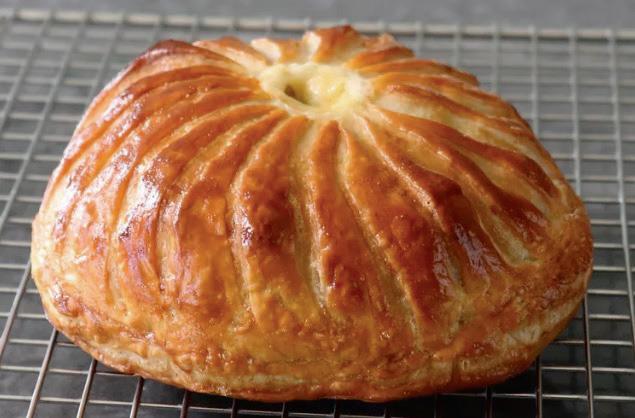

Ingredients
Salad: 4 cups finely chopped green cabbage
3 mini cucumbers, chopped
5 scallions (green onions), trimmed and sliced
Dressing:

2 cloves garlic, peeled
1 shallot, peeled
¼ cup lemon juice
¼ cup chives
¼ cup extra-virgin olive oil
2 Tbs rice vinegar
¼ cup nuts (walnuts, cashews, almonds, etc.)
1 cup fresh basil
1 cup baby spinach
2 Tbs nutritional yeast
salt and freshly ground black pepper to taste
Step 1: Place the cabbage, cucumbers, and green onions in a large bowl. Set aside.
Step 1: Add garlic, shallot, lemon juice, chives, oil, vinegar, nuts, basil, spinach and yeast to the bowl of a food processor and blend, scraping down the sides occasionally, until smooth, about 1 minute.
Step 1: Pour dressing over cabbage and toss until wellcombined. Season with salt and pepper, to taste.
If you don’t have nutritional yeast, substitute with equal parts grated Parmesan cheese.



Ingredients
1 Tbs vegetable oil
2 Tbs grated fresh ginger
2 tsp red curry paste
1 stalk lemon grass, minced
4 cups chicken broth
3 Tbs fish sauce
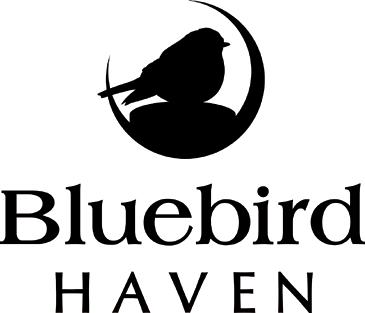
1 Tbs light brown sugar
3 (13.5 oz) cans coconut milk
½ lb fresh shiitake mushrooms, sliced
1 lb medium shrimp - peeled and deveined
2 Tbs fresh lime juice salt to taste
¼ cup chopped fresh cilantro
Step 1: Heat oil in a large pot over medium heat. Add ginger, curry paste, and lemongrass; cook and stir in the hot oil for 1 minute.
Step 2: Gradually stir in chicken broth, then stir in fish sauce and brown sugar; reduce heat to low and simmer for 15 minutes.
Step 3: Add coconut milk and mushrooms; cook and stir until mushrooms are soft, about 5 minutes.
Step 4: Add shrimp; cook until no longer translucent, about 5 minutes. Stir in lime juice; season with salt and garnish with cilantro.
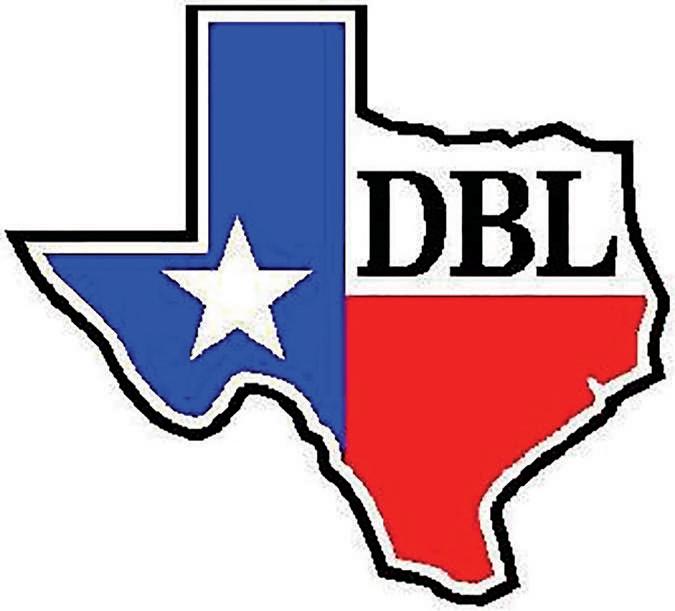



Step 1: Heat olive oil in a saucepan until shimmering over medium heat. Add chopped onions and cook until soft and translucent, about 5 minutes. Add garlic and cook until fragrant, about 45 seconds. Add 1/2 of diced tomatoes with liquid. Season with Italian seasoning, garlic, onion powder, salt, and pepper. Stir to combine.
Step 2: Add in half of the diced tomatoes with liquid. Add in Italian seasoning, salt, pepper, garlic granules and onions powder. Stir to combine.
Step 3: Pour remaining tomatoes into a bowl and puree with an immersion blender. Add to sauce with vegetable broth.
Step 4: Mix in zucchini and tortellini. Cover and cook until tortellini float on the top and are cooked through, 8 to 10 minutes.
Step 5: Stir in cream and cheese until well combined. Taste and adjust seasoning to taste. Serve immediately.

Ingredients
Donuts
2 ¼ cups bleached cake flour, plus more for work surface, hands and cutter
2 tsp baking powder
¾ tsp kosher salt
½ tsp ground nutmeg
¼ tsp ground cinnamon
2/3 cup sour cream, room temperature
½ cup granulated sugar
2 large egg yolks, room temperature
1 Tbs unsalted butter, melted and cooled slightly
1 Tbs vegetable oil
1 tsp vanilla extract
vegetable oil as needed for frying Glaze
4 ½ cups powdered sugar
½ cup unsalted butter, melted
6 Tbs hot water

1 ½ tsp light corn syrup
¼ tsp kosher salt
¼ tsp vanilla extract
Step 1: Whisk together flour, baking powder, salt, nutmeg, and cinnamon in a bowl until well combined. Whisk together sour cream, granulated sugar, egg yolks, melted butter, oil, and vanilla in a large bowl until well combined. Gradually fold flour mixture into sour cream mixture just until combined. (Dough will be quite soft and sticky.)
Step 2: Cover, and chill in the refrigerator until dough is cold and just slightly firmed, about 2 hours.
Step 3: Turn dough out onto a heavilyfloured surface and pat or roll to 3/8- to 1/2-inch thickness, flouring hands or rolling pin as needed. Cut dough using a floured 3 1/2-inch round cutter. Cut holes in the center of the dough circles using a floured 1 1/4-inch round cutter. Transfer dough rings to a parchment-lined baking sheet. Reroll, and cut dough scraps, repeating process as needed.
Step 4: Heat 3 inches of oil in a large Dutch oven over medium heat until a deep-fry thermometer registers 360-365 degrees.
Step 5: Fry 1 to 2 donuts at a time until golden brown and cooked through, 1 to 1 1/2 minutes per side, adjusting heat as necessary to maintain oil temperature. Transfer donuts to a baking sheet lined with paper towels using a spider strainer. Let drain, and cool for 5 minutes.
Step 6: Whisk together powdered sugar, melted butter, hot water, corn syrup, salt, and vanilla in a large bowl for the glaze until smooth and well combined.
Step 7: Place 1 warm donut in the powdered sugar mixture, craggy side up; use a spoon to coat donut completely in the glaze. Remove donut from glaze using two forks placed underneath; let excess drip off, and then transfer donut to a wire rack placed over a rimmed baking sheet. Repeat with remaining donuts and glaze.
Step 8: Let donuts stand until glaze is set before serving, about 25 minutes. Donuts are best enjoyed the same day, but any leftovers can be stored at room temperature in an airtight container for 2 days.
Consultant Exclusively for Godiva's Secret Wigs


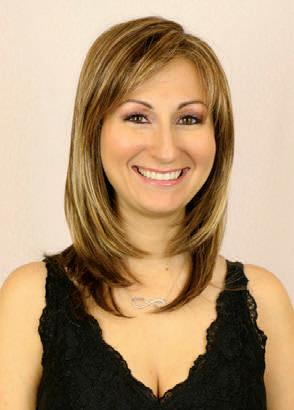




Step 1: Stir together butter, sugar, vanilla, and salt in a large bowl. Mix with an electric mixer at low speed until ingredients start to combine, about

30 seconds. Continue beating at medium speed until mixture is fluffy, light in color, and clings to sides of the bowl. Scrape down sides of bowl.
Step 2: Add egg white and mix until well incorporated. Add flour and continue mixing at low speed until most of the flour is incorporated, about 30 seconds. Increase speed to medium until dough comes together.
Step 3: Divide dough into 2 bowls. Mix lime zest and matcha powder into 1 dough portion for the green dough, and lemon zest and turmeric to other dough portion for yellow dough.
Step 4: Gather dough portions into individual balls and wrap in plastic wrap. Chill until easy to handle, about 1 hour.
Step 5: Preheat the oven to 350 degrees. Line a baking sheet with parchment paper.


Step 6: Divide each dough portion into 16 pieces. Roll each piece into a 5-inch rope. Twist a green and yellow rope together, then coil into a spiral, tucking ends under and pressing to seal. Transfer to the prepared baking sheet. Repeat rolling, twisting, and spiraling with remaining dough. Arrange cookies on the baking sheet, spacing them about 1 inch apart. Sprinkle cookies with sparkling sugar.
Step 7: Bake until cookies are lightly browned around the edges, about 10 minutes. Cool on the baking sheets 5 minutes. Transfer to a wire rack to cool completely. Store in an airtight container up to 3 days at room temperature or freeze up to 3 months.

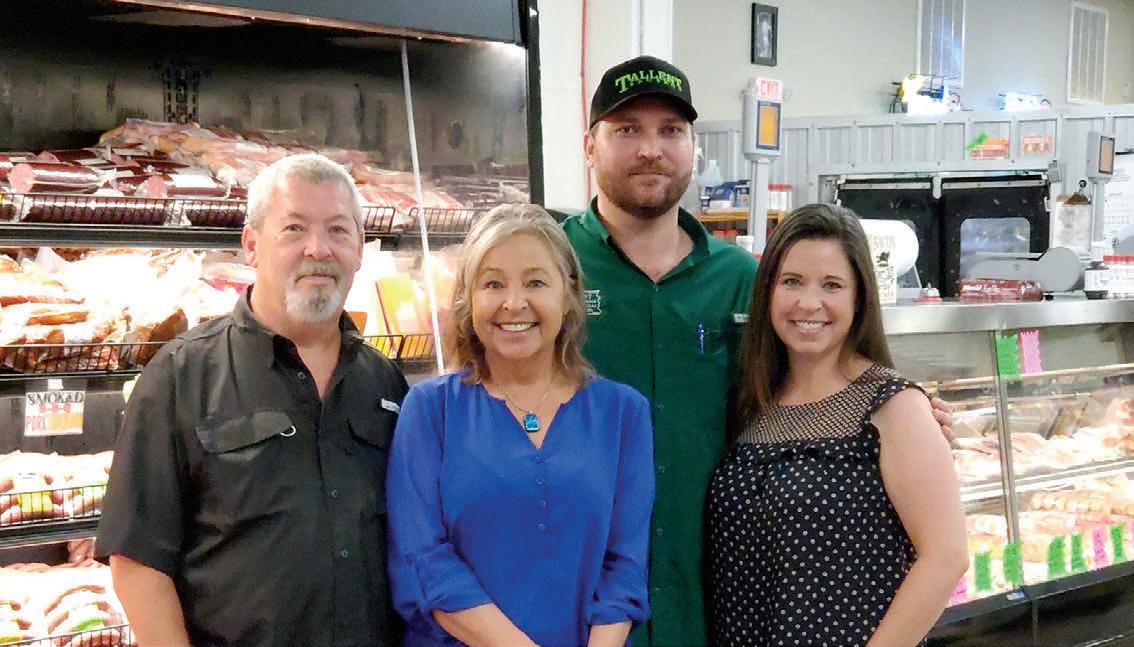

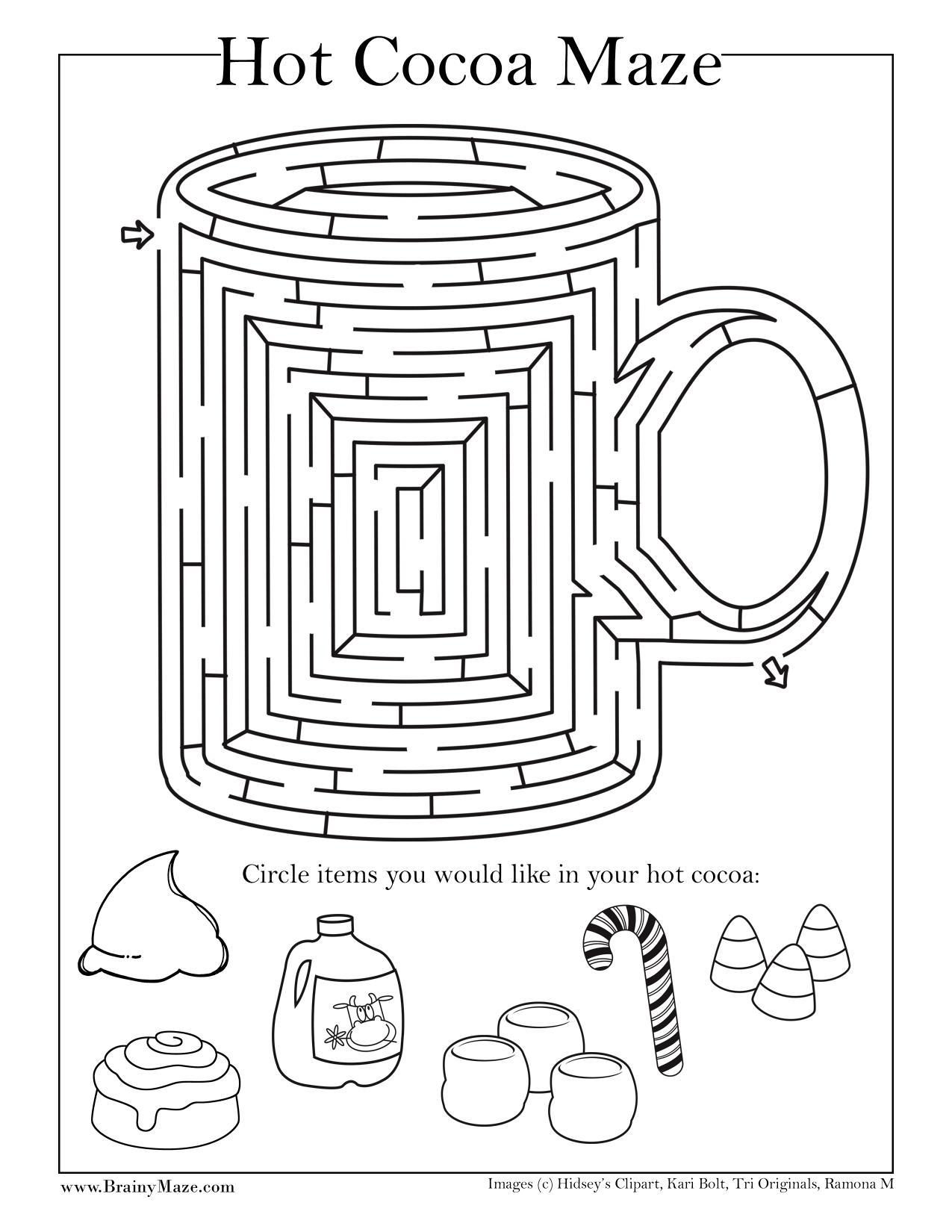






Dots and Boxes is an easy game of strategy. You and your opponent take turns picking to draw a horizontal or vertical line to connect the boxes. Whoever draws a line that completes a box writes their initials in it and “owns” it. The person that “owns” the most boxes at the end of the game wins!


In a snow bank.


Where does a snowman keep his money?
1300 11th Street, Suite 405 Huntsville, TX 77340
(Located in the First National Bank building)

 Story by Claudia Kirkwood
Photos by Tom Miller
Story by Claudia Kirkwood
Photos by Tom Miller
Although the name has undergone changes over time, Haney Paschal & Romoser, P.C. has provided excellence in full legal services to the Huntsville community and beyond since the mid1970s. Testimony after testimony attests to their professionalism and competency, and the success of the cases that have been entrusted into their care. Adjectives such as experienced, responsive, ethical, and compassionate are plentiful throughout the affirmations from grateful clients, along with commitments to seek their services once again should future needs arise.
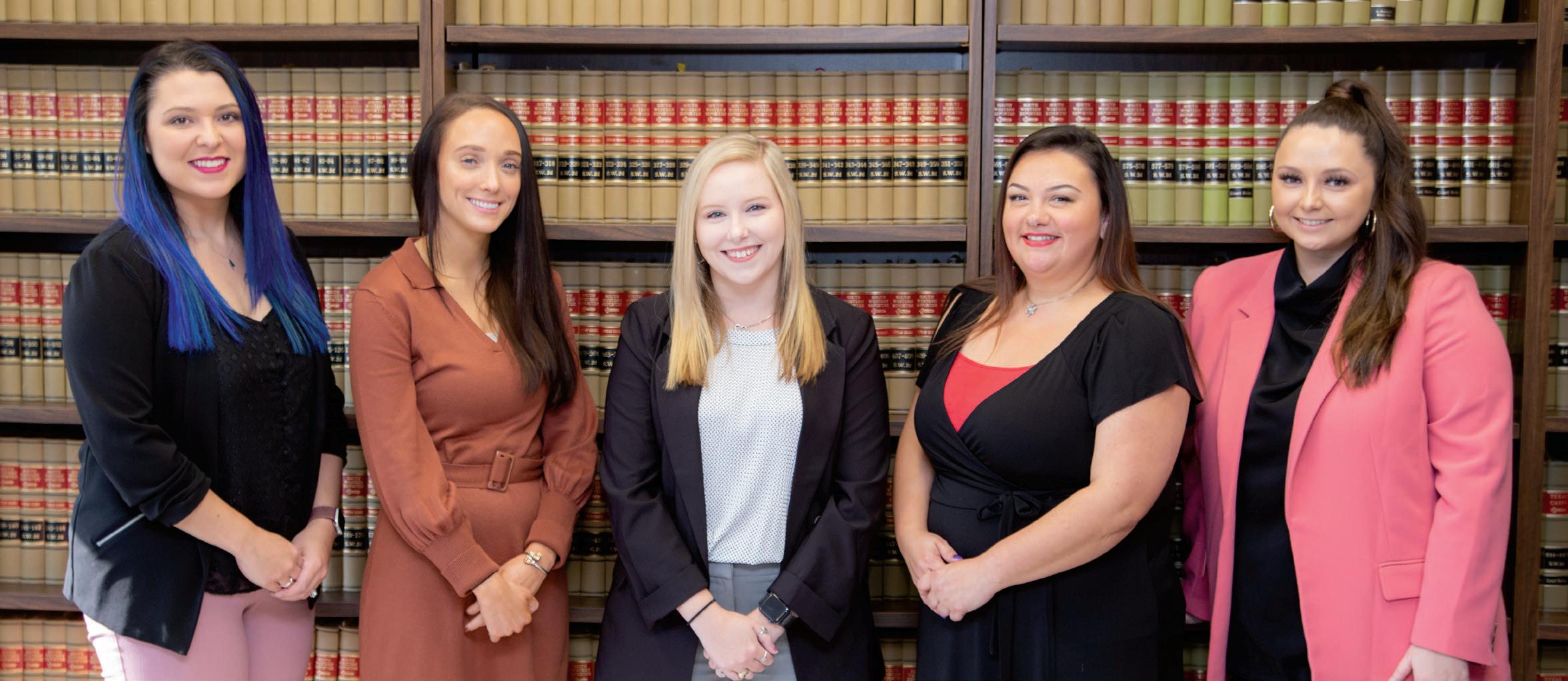

Martin Colley and Jack Haney formed the law firm of Colley & Haney in the mid-1970s, with Donald Kraemer becoming a partner in 1976. David Moorman came onboard in 2000, creating
Haney Kraemer and Moorman. In 2008, Kraemer left the firm when elected to the office of District Judge of the 12th Judicial District Court, and Jacob Paschal (returning to his hometown of Huntsville) joined the practice in 2013, when it became Haney, Moorman & Paschal, P.C. In 2020, David Moorman exited the firm when elected District Judge of the 12th Judicial District Court upon the retirement of his colleague and mentor Judge Kraemer. Jeremy Romoser, after joining in 2015, became a partner in 2021. Attorneys with the firm at present include Jacob Paschal, Jeremy Romoser, Devan Dawson, Chris Thompson, Sarah Hebert, and Michael Foreman. Brief biographies for each are available on the firm’s website.
Disputes regarding business transactions, financial conflicts, or land and easement disagreements require an in-depth knowledge of business and property law to successfully litigate. Transactions can include real estate, property construction, contracts, partnership agreements, liens, and purchases and sales. HPR has over thirty years of combined litigation experience to bring your case to a satisfactory conclusion. Fighting these issues on your own is difficult, and the expertise and knowledge they bring to the table are invaluable to the successful conclusion of these cases.
Family law includes divorce, child custody agreements, and adoptions. These can be complex and sensitive issues, requiring knowledgeable and competent handling. According to Jacob, “A great part of what we do is being able to help people as they go through difficult situations. And in terms of really happy stories, adoptions are exciting! We recently helped a family adopt a foster child and got to go to the celebration. That gave us all a tremendous feeling of satisfaction!” HPR can provide all the necessary components involved in these cases from the initial consultation through the final completion and filing of all documents.
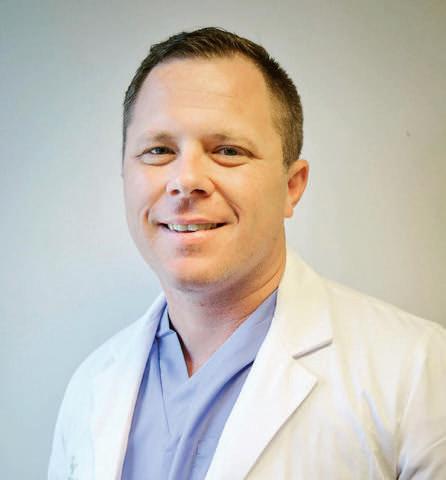
Mediation is the process whereby two parties meet, and with the guidance of a mediator, work to resolve conflicts to the satisfaction of both. Their office suite has spaces specifically designed for this purpose. They will provide the space and mediator for the particular issue and will produce a written document for both parties at the conclusion of the session.

Another area of law that HPR handles with competence is wills, probates, and estate planning. Their attorneys look forward to helping you get your financial affairs in order so when life events happen, your loved ones can experience a smooth and conflict-free transition. As a full-service law firm, HPR will help with all aspects of creating documents, necessary investigations, filing paperwork, and trial representation.


Car accidents are daily occurrences and happen for a variety of reasons, including distractions, drowsiness, drunkenness, breaking traffic laws, poor vehicle maintenance, defective car parts, and dangerous roadways. These are just a few of the reasons why you may find yourself needing an attorney due to a car crash and resultant injuries. Attorneys at HPR have handled all types of vehicle accidents and personal injuries, including neck and back injuries, bone fractures, lacerations, traumatic brain injuries, and spinal cord injuries. They
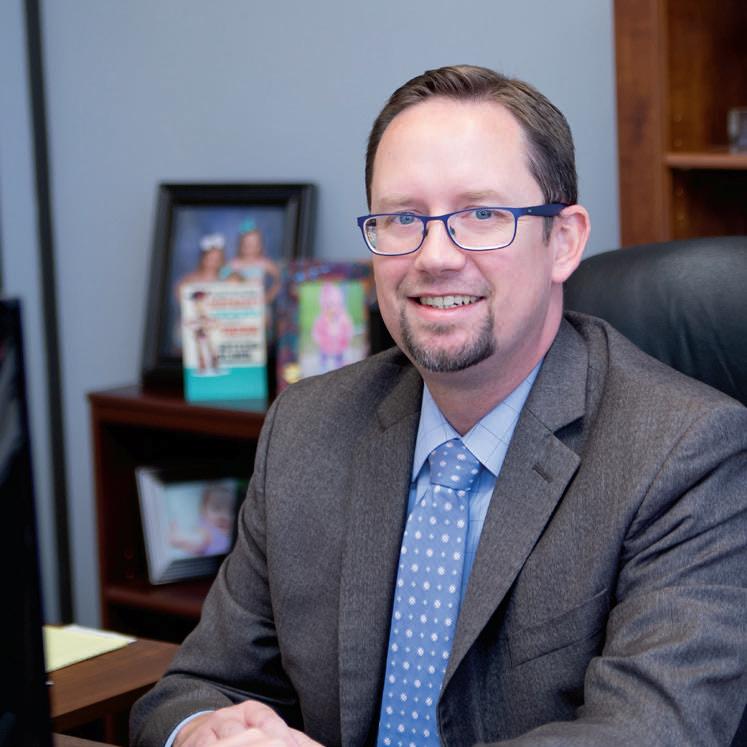
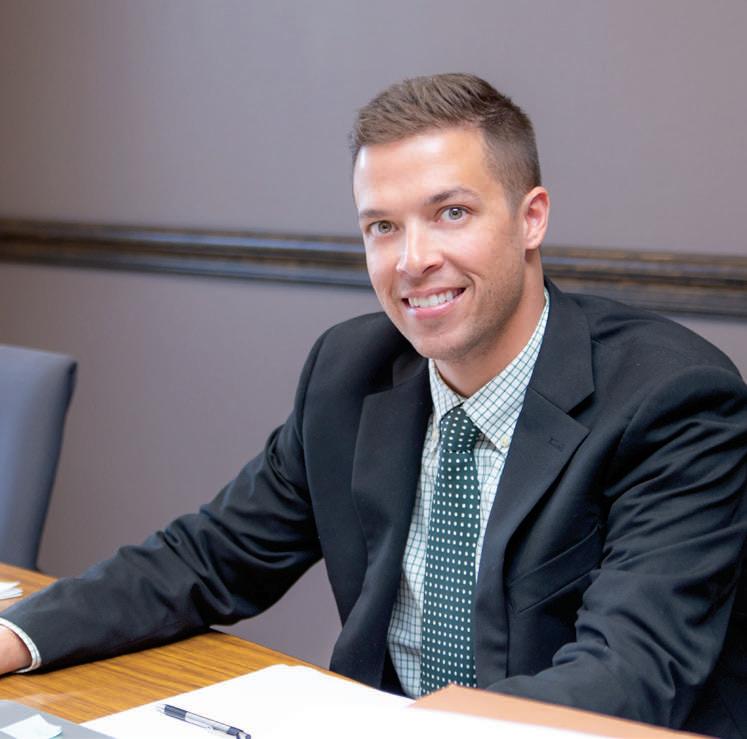
invite you to schedule a free personal injury consultation if you have been in an accident.



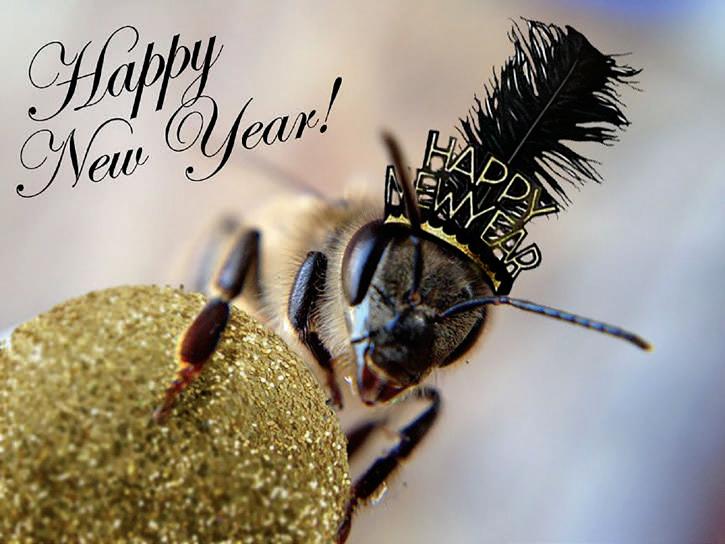


Why choose Haney Paschal & Romoser, P.C.? HPR has proven itself to be a valuable asset to those who are in need of the services they offer. They are one of the top law firms in the area and have provided solid legal services in Walker County and surrounding areas for many years. They bring a wealth of experience and expertise to handle your legal issue, whether large or small. They are also
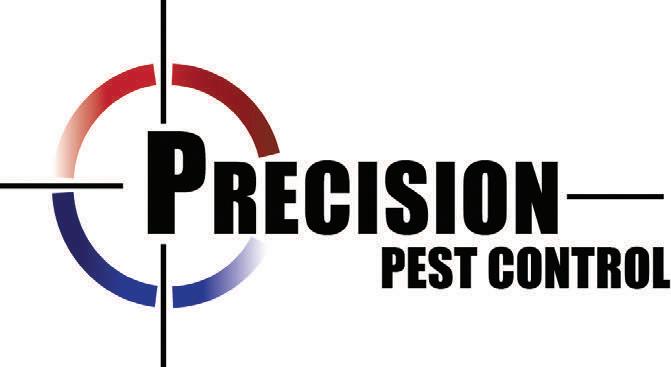
intricately connected to the community, and love the small-town character of Huntsville.
Jacob and his wife have four daughters and enjoy the many events in which their girls are involved--from volleyball, to softball, to 4-H projects, as well as to cheering on the Astros in their recent World Series win. Jacob serves on the Board of Directors of the First National Bank, the Board of Directors of Tri-County MHMR, and is President of the Walker County Bar Association.
a Navy veteran and former farrier, enjoys woodworking and scuba diving. He volunteers with LifeWaters, an organization that helps disabled divers to be able to enjoy the sport once again. He and his wife and daughter love to travel and hike.
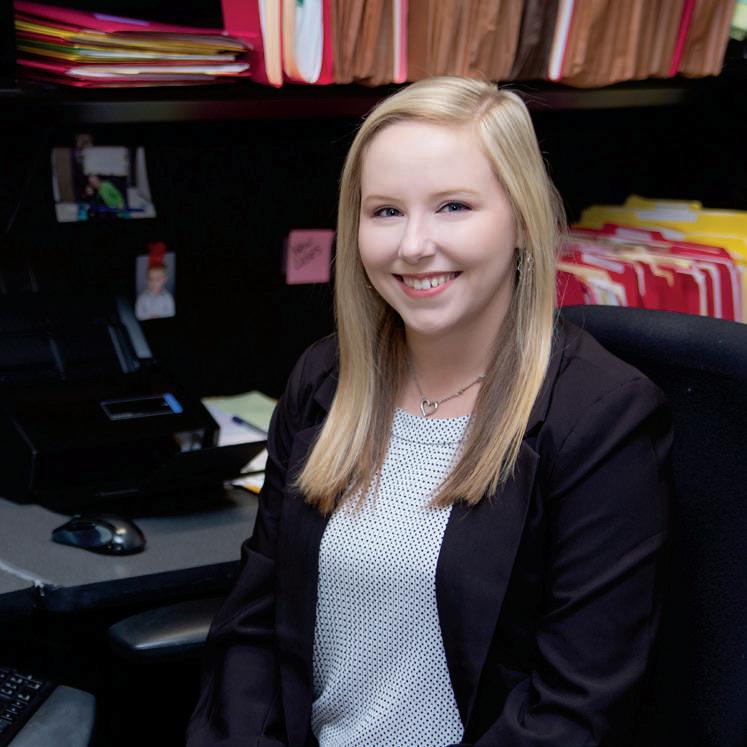
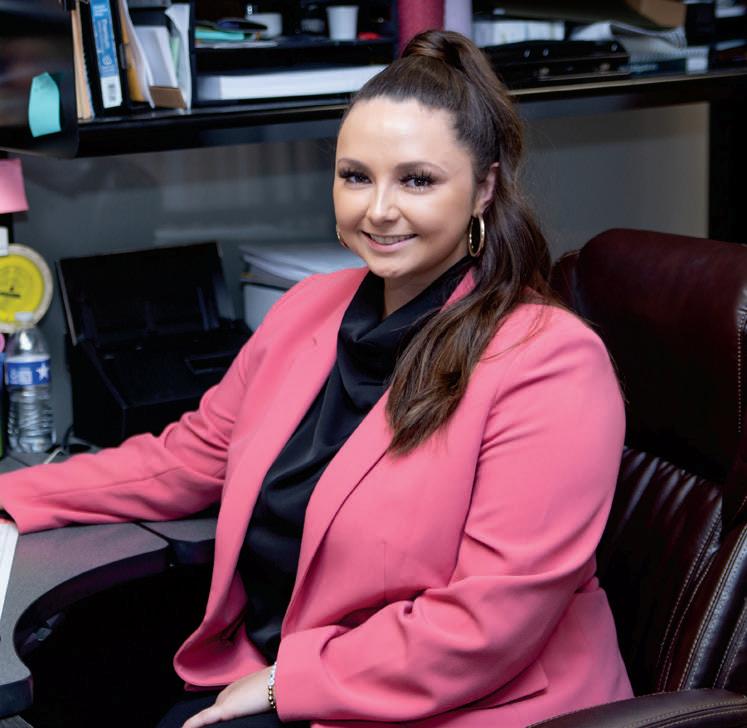







HPR is heavily invested in this community and takes pleasure in providing the best legal services for their friends and neighbors. They welcome and invite you to bring your legal needs to them. Testimonies evidence you will find their law practice to be professional, ethical, compassionate, and effectual, providing solid legal services
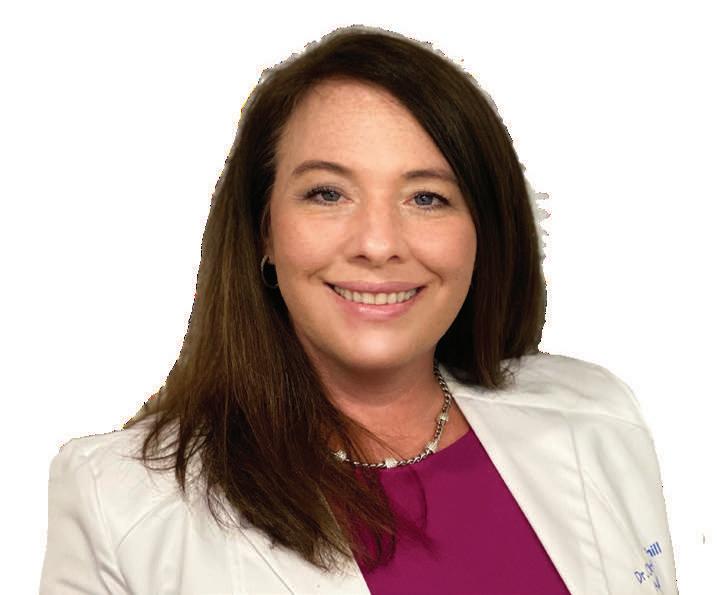


.
Haney Paschal & Romoser, P.C. 1300 11th Street, Suite 405 Huntsville, TX 77340


(Located in the First National Bank building) 936-295-3712 huntsville-texas-attorneys.com


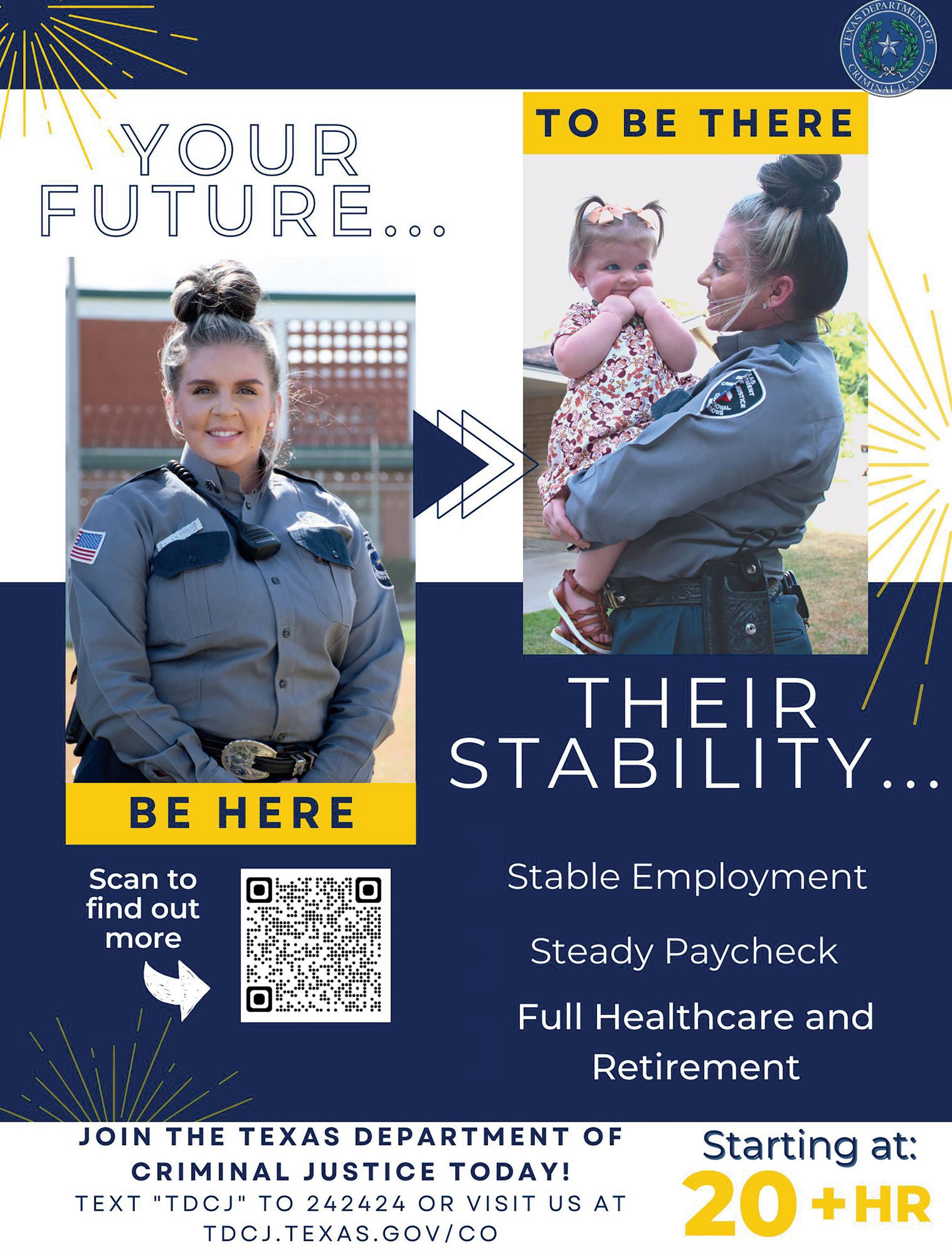


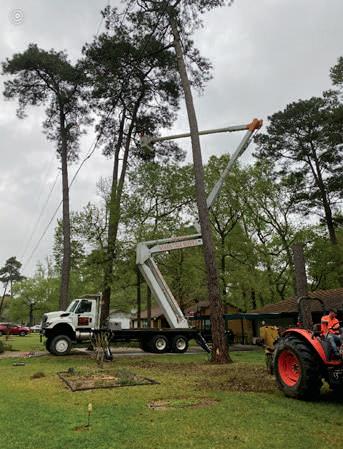

Cheer


Sing


Q: My four-year-old repeats things he has heard or has said before. For example, even though my brother’s family moved away nearly two years ago, whenever we drive by their old house he will say, “There’s Uncle Frank’s house!” He also asks questions when he knows the answers. For example, if I’m wearing a green dress, and even though he knows his colors, he will ask, “Is your dress green, Mommy?” Lately, when he asks a question of this sort, I ask him, “What do you think?” I want him to answer his own question, but he immediately becomes quiet. He’s obviously bright, but I’m beginning to think there may be something wrong. In any case, this habit of his has become very irritating. What do you think?


A: I think you’re making a mountain out of a molehill. If there is a problem, it would fall into one of three “D” categories: discipline, development, or disorder. You’re certainly not

describing a discipline problem. Furthermore, my rather extensive experience as a parent, grandparent, and family psychologist tells me that what you’re describing is no big deal.
Your son is simply trying to figure out how to engage in conversation. During the second and third years of life, a child develops the fundamentals of language and begins constructing sentences. Three-year-old children are known for monologues. They’ll go on and on about seemingly nothing, jumping from topic to topic, not interested in what anyone else might have to say. At four, the art of giveand-take conversation begins to develop. Your son is simply trying to figure out how to have interactive exchanges with other people. And yes, a child’s first attempts at conversation can be annoying.
I know it takes a lot of patience to respond with more than “Uh-huh” to your son’s repetitious
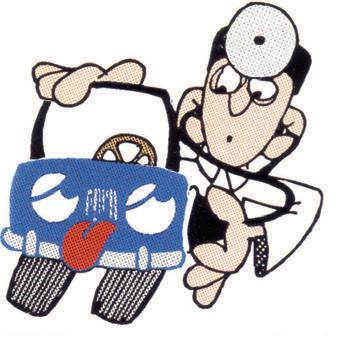
statements and seemingly unnecessary questions, but in this case, patience will pay off handsomely for both of you. Take the time to teach him what conversation is all about by responding to these “annoyances” with a question that causes him to think and draws him into a discussion.
For example, the next time he says, “There’s Uncle Bob’s house!” you can ask, “Do you remember where Uncle Bob lives now?”
If he asks, “Is your dress green, Mommy?” you can respond with “Can you name another green thing?”
Helping your son with give-and-take conversation will quicken his overall language skills. In turn, you will begin to enjoy talking with him. Perhaps best of all, he will irritate you no longer.




None but Indians roamed the area when Martin Palmer received a large grant of land which he gave to his son, William H. Palmer, and his new wife Lucinda. The couple became the first Anglo settlers in Dodge. Just one year later, Sarah Ann Palmer became the first baby born on this land. In 1834, Russell Roark, a single, good-looking 19-year-old, came riding in on his horse. Sarah, just nine years old, rarely saw another human she wasn’t related to, and surely was smitten. He returned a few years later, after serving as a colonel in the war against Mexico, and the couple married, in spite of her father’s objections. The couple had 10 children and contributed significantly to the settlement of Dodge. They are buried in Shockley Chapel Cemetery.
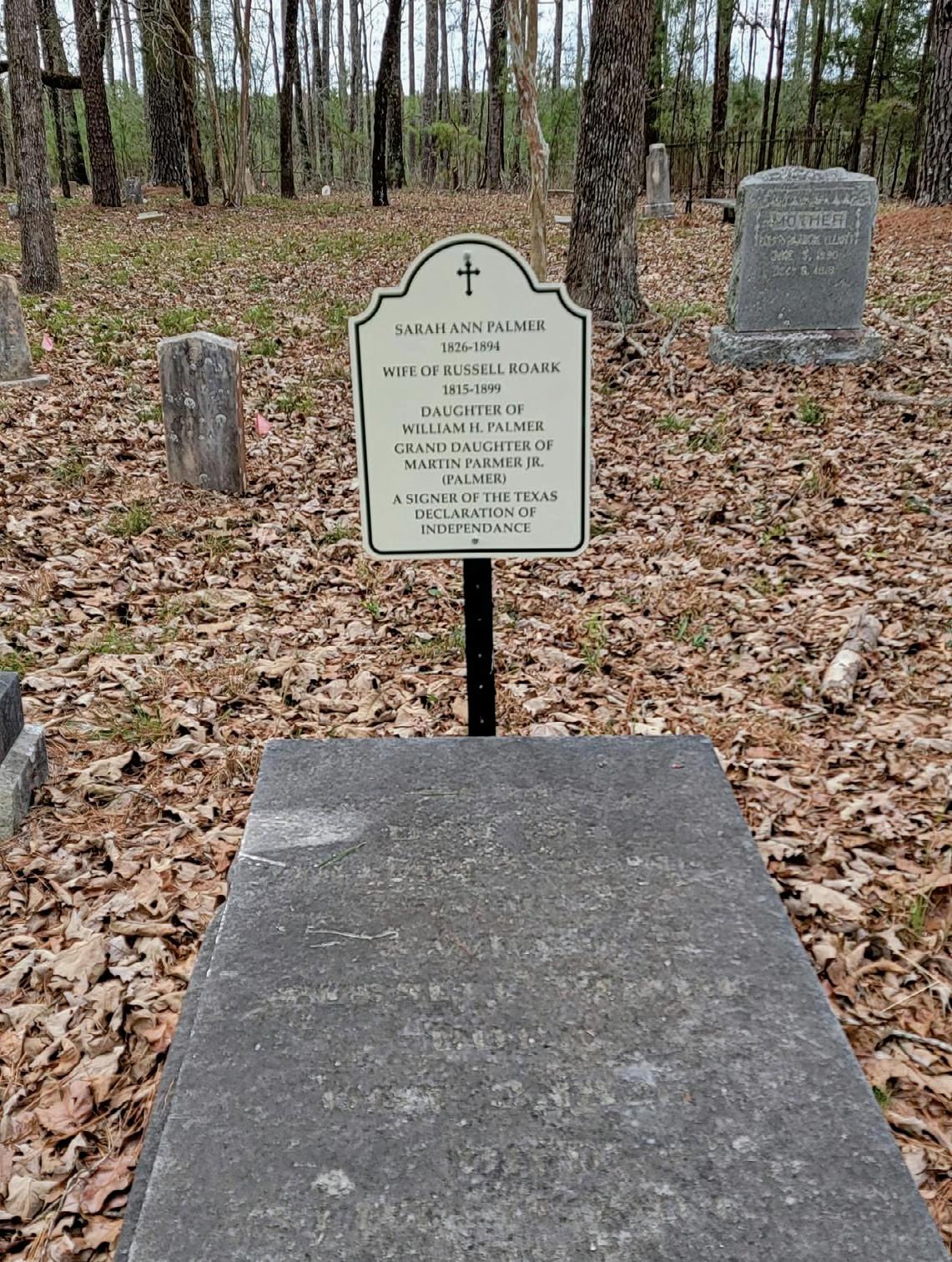



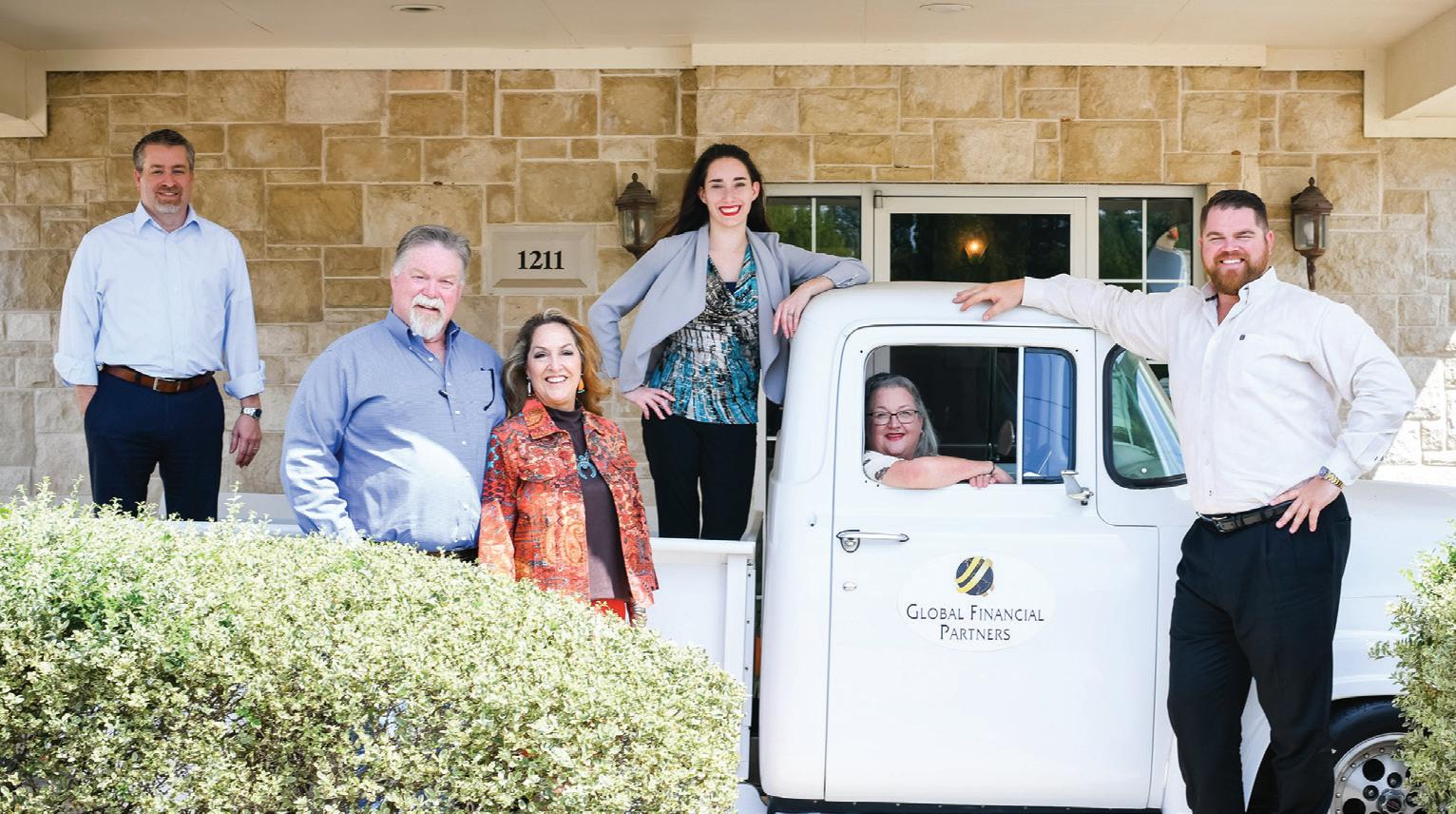
Dodge, on Farm Road 405 a mile north of U.S. Highway 190 and ten miles east of Huntsville in eastern Walker County, was founded in 1872 on land granted to the Houston and Great Northern Railroad by William H. Parmer (Palmer); settlers had begun farming the land as early as 1825. Martin Parmer, William’s father, signed the Texas Declaration of Independence.
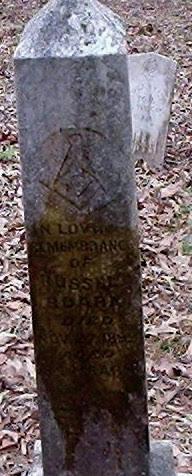
After the Civil War the H&GN Railroad, constructed by the Phelps-Dodge Company, arrived in Walker County. A depot named Dodge Station was established and a town laid out in 1872. The town took its name from the construction company, although local legend has it that the name Dodge was chosen to indicate that the company “dodged” laying its tracks through Huntsville. When the post office was established in 1881 Dodge Station became Dodge, and the first postmaster was Russell Roark. From 1901 until 1936 Dodge served as a junction for the Trinity Valley Southern and IGN railroads, which served the lumber industry in the region.


It’s hard to imagine a world without wild animals, but their populations are declining at rates unprecedented in human history. The World Resource Institute, along with the United Nations Environment Programme, estimate that between 150-200 wild species disappear every day. We rarely hear about these disappearances because most of them aren’t publicized. Thankfully, there are hundreds of national and international organizations and governments working to save wild animals and habitats.
With over 1.5 million species of animals on earth (including insects), one could spend a lifetime studying the uniqueness of each species and never come close to learning all there is to know.

1. Eagles have a grip 10 times more powerful than ours.
2. Vultures can smell a dead animal from more than a mile away.
3. Raccoons don’t wash their food. When the animals’ paws are wet, their tactile sensory perception is dramatically increased, and they are better able to identify the food. Compared to other animals, raccoons have 4-5 times more sensory cells in their paws.
4. The reason a flamingo has pink feathers is due to their diet of brine shrimp and blue-green algae. These foods contain a natural pink dye called canthaxanthin.
5. Apparently, dolphins like to get “high.” They deliberately handle pufferfish, which causes the fish to release toxins as a defense mechanism. In high doses, these toxins can be deadly; but in the right amounts, they act as a hallucinogen. It seems the dolphins enjoy the experience.
6. What animal do you think is the deadliest in the world? It’s the mosquito. The World Health Organization reports 725,000 people are killed every year by mosquito-borne illnesses like malaria, denque fever, and yellow fever.
7. Goats have accents. Scientists used to believe that the calls of goats were determined by genetics. According to a United Kingdom study, animals with highly developed vocal abilities are able to alter their calls to adapt to individuals and groups. Whales, dolphins, and bats have this ability also.
8. Cows are smarter than we think and emotionally very sensitive. Their intelligence is equal to that of dogs. A study from the University of Cambridge has shown that cows like to learn and show enjoyment by wagging their tails, running and jumping. In a test done by the
of Sydney, cows were trained to solve mazes. The tests revealed their decision-making and executive function abilities.
What color are your chickens’ ear lobes? White lobes produce white eggs; brown lobes produce brown eggs.
Baby elephants may suck on their trunks for comfort just as human babies suck on their thumbs.
Worms have 5 hearts. 12. Leeches have 32 brains, 10 stomachs, 9 pairs of testicles, 2 hearts, 300 teeth grouped in 3 jaws, and more than 2 pairs of eyes. 13. Herring fish fart! Yes, you heard me right. This is how they communicate with each other. 14. The Texas horned lizard shoots foul-tasting blood out of its eyeballs when threatened. 15. Horses can’t breathe out of the mouth. They can only breathe through their nostrils. They can’t throw up either.
16. We’ve all heard houseflies buzz, right? Did you know that they are buzzing in the key of F?

17. Otters have up to one million hairs per square inch. There are two layers of fur with a layer of air between the two to keep the skin dry.
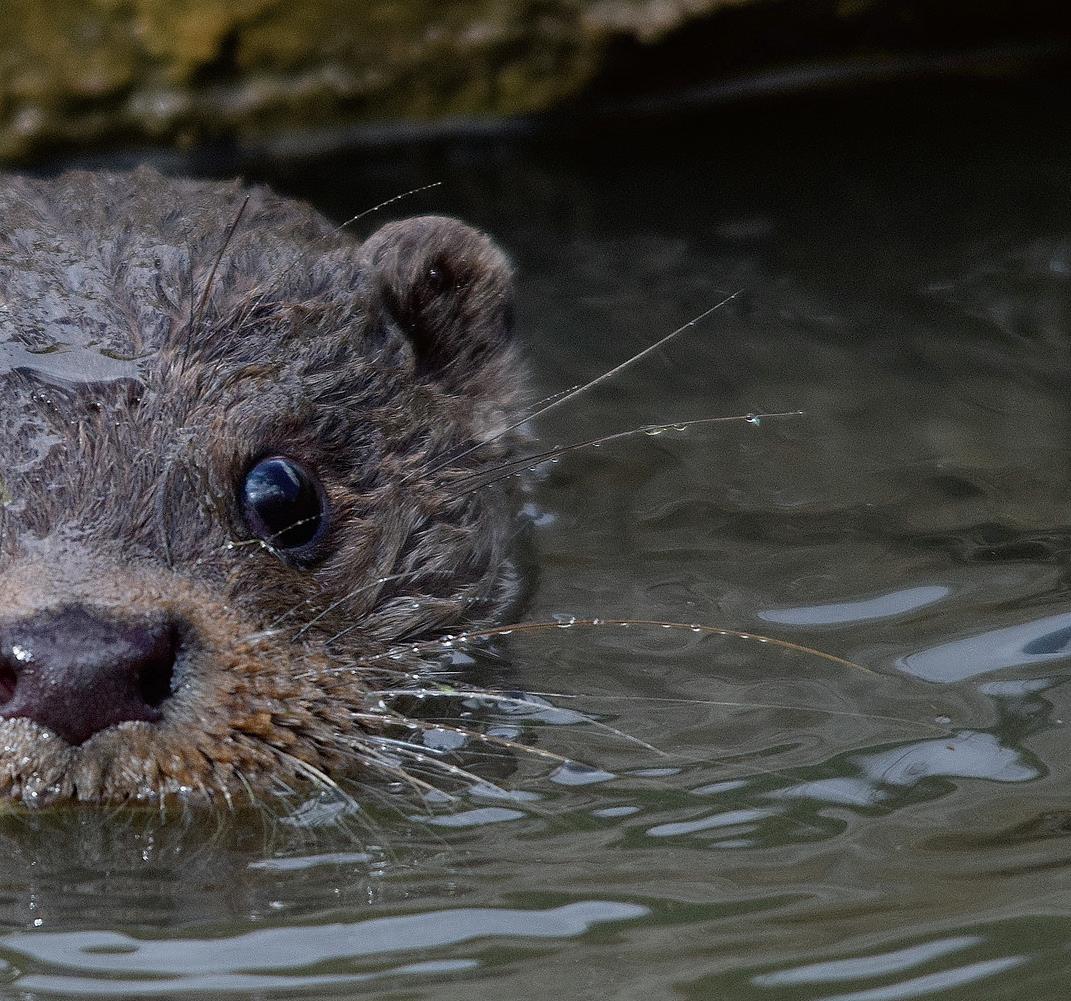
18. Koalas’ fingerprints are virtually indistinguishable from humans.
19. In Guinea, West Africa, the residents tap raffia palms and collect the sap. The sap has an alcohol content between 3.1% and 6.9% by volume. Locals love to drink the sap, and so do chimpanzees!
20. Doctors tell us naps are good for us. Apparently fire ants know this as well. Researchers have discovered that they take up to 250 naps per day!
Perform online research of other animals and learn what makes them unique in the animal kingdom. I know you’ll be surprised.

It’s hard to believe that the skin of this otter is completely dry due to the 2 layers of fur he has on his body.
Thru 6
13
Dallas
The Trains at NorthPark thetrainsatnorthpark.com
Thru 7
Galveston
“Ice Land: A Caribbean Christmas” moodygardens.org
3-8
Houston
“Pretty Woman: The Musical” houston.broadway.com
Galveston
“The Greatest Love of All: A Tribute to Whitney Houston” thegrand.com
Lufkin
“The Wizard of Oz” (Rated G) angelinaarts.org
William Lee Martin: Hawg Wild Comedy Tour angelinaarts.org
6
The Woodlands Bri Bagwell doseydoetickets.com
6-7 Rockport Gospel Music Festival gospelforce.org 7 Beaumont
SETX Whiskey Festival setxwhiskeyfest.com
Conroe
“The Sinatra Experience” crightontheatre.org
The Woodlands
Casey Chesnutt doseydoetickets.com
14 Conroe “Beatlemania 64” crightontheatre.org
Huntsville
Gene Watson oldtowntheatre-huntsville.org
Luckenbach Blues Festival luckenbachtexas.com
24
The Woodlands Tyler McCollum doseydoetickets.com
Conroe
Job Fair conroe.org
Tyler “The Doo Wop Project” cowancenter.org
25
“Lucy Loves Desi: A Funny Thing Happened on the Way to the Sitcom” mscopas.org
11
Houston
Jeff Dunham: “Still Not Canceled” nrgpark.com
NCT 127 – NEO-CITY: THE LINK toyotacenter.com
14-15
Galveston
The Oak Ridge Boys thegrand.com 20 Conroe “Calendar Girls” owentheatre.com 21
Galveston
Pink Martini in Concert thegrand.com
Houston Unspeakable LIVE toyotacenter.com
25-29 Houston Houston Auto Show nrgpark.com 25-Mar 5 Houston
Cirque Du Soleil Presents “Kooza Under the Big Top” cirqudusoleil.com/kooza
26
The Woodlands Taste of the Town woodlandschamber.org
27
Galveston
The Music of Sam Cooke thegrand.com Huntsville
Twitty and Lynn: A Salute to Conway and Loretta oldtowntheatre-huntsville.org
Lake Jackson Lorrie Morgan brazosport.edu/clarion 28
TEXAS GUITAR QUARTET
March 3 | 7:30 p.m. Recital Hall, GPAC
DIEGO CAETANO AND FRIENDS FT. CARPE
DIEM STRING QUARTET April 24 | 7:30 p.m. Recital Hall, GPAC

For tickets and information, visit SHSUTICKETS.COM



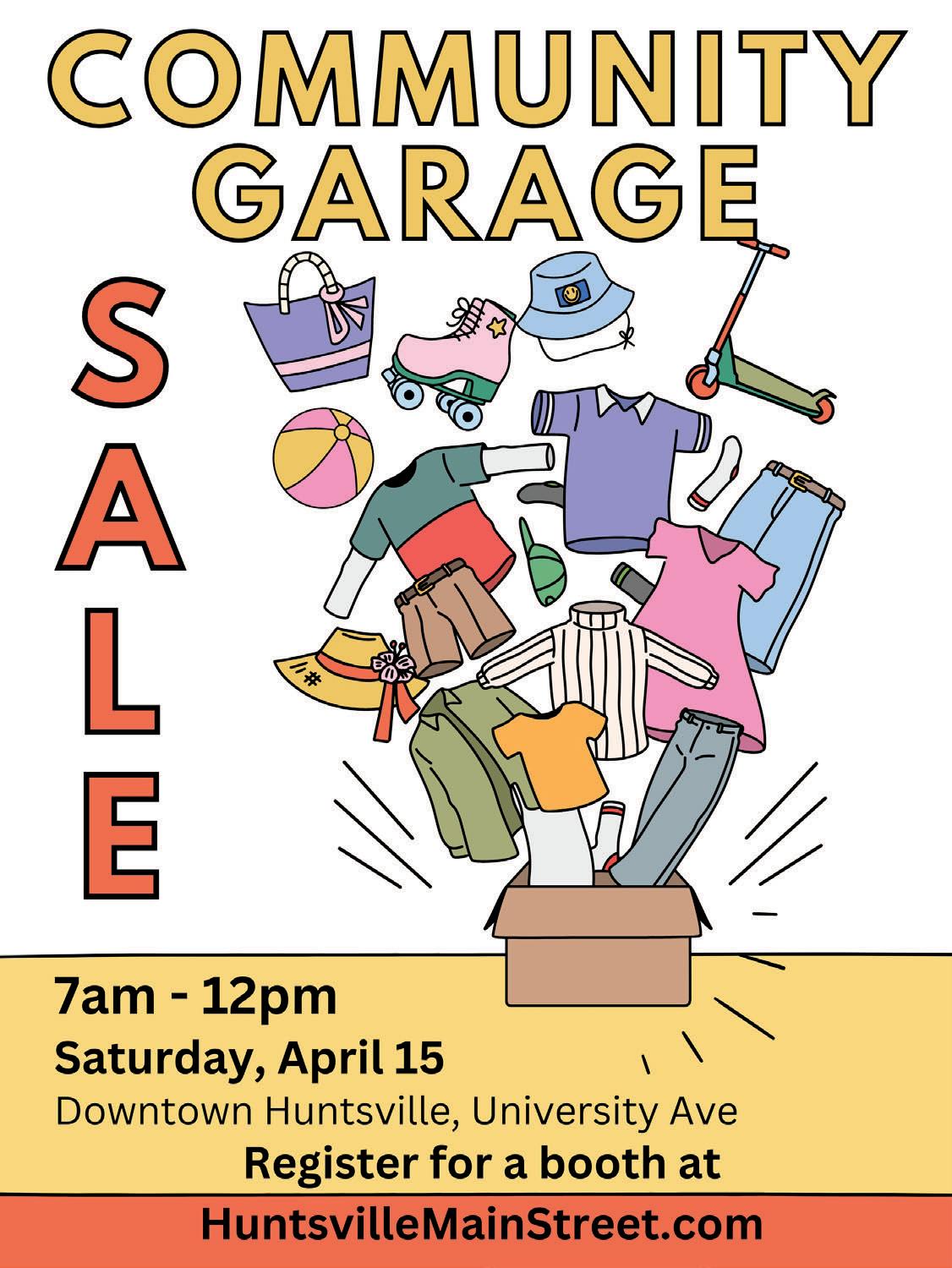
 by Linda W. Perkins
by Linda W. Perkins
A few years ago, after my husband and I decided to buy property in a Huntsville neighborhood, we attended the community New Year’s celebration. We didn’t really know anyone and thought we might connect with new neighbors to be and make a friend or two.
We were directed to a table where two other couples already seated. They were clearly in a different stage of life – well into their retirement years. As we visited with them over the course of the evening, we had fun and found some things in common, so we kept in touch.
Several years later, we stopped by one couple’s home for a visit. We heard they were having health struggles. We talked about getting together more often once we built our house. Then, much to our surprise, the husband said, “I have to ask you…why are you interested in us? We are so much older than you; I would think you would rather be with people your own age.”
If there was one thing Jesus was known for during his life, it was befriending people outside the social circle he was expected to keep as a male Jew. As He came in contact with women, children, Samaritans and tax collectors, Jesus always looked beyond differences or society’s labels and looked to their hearts instead. He knew their hurts and hang-ups, their sins and struggles--but loved them anyway.
It is easy to stay in our cozy, comfortable social circles with people who look, act, or think just like us. But what would happen if we chose to create connection with people whose lives look quite different than ours? We could talk with them and pray with them. We could even break bread with them. They might see Jesus in us, or we might see Jesus in them. And somewhere along the way, we might even make some new friends.
“There was a man there named Zacchaeus. He was the chief tax collector in the region and had become very rich... When Jesus came by, he looked up at Zacchaeus and called him by name. ‘Zacchaeus!’ he said. ‘Quick, come down! I must be a guest at your home today!’ Zacchaeus quickly climbed down and took Jesus to his house in great excitement and joy.”


